
10 Inspiring Architecture Thesis Topics for 2023: Exploring Sustainable Design, AI Integration, and Parametricism
Share this article
Reading time
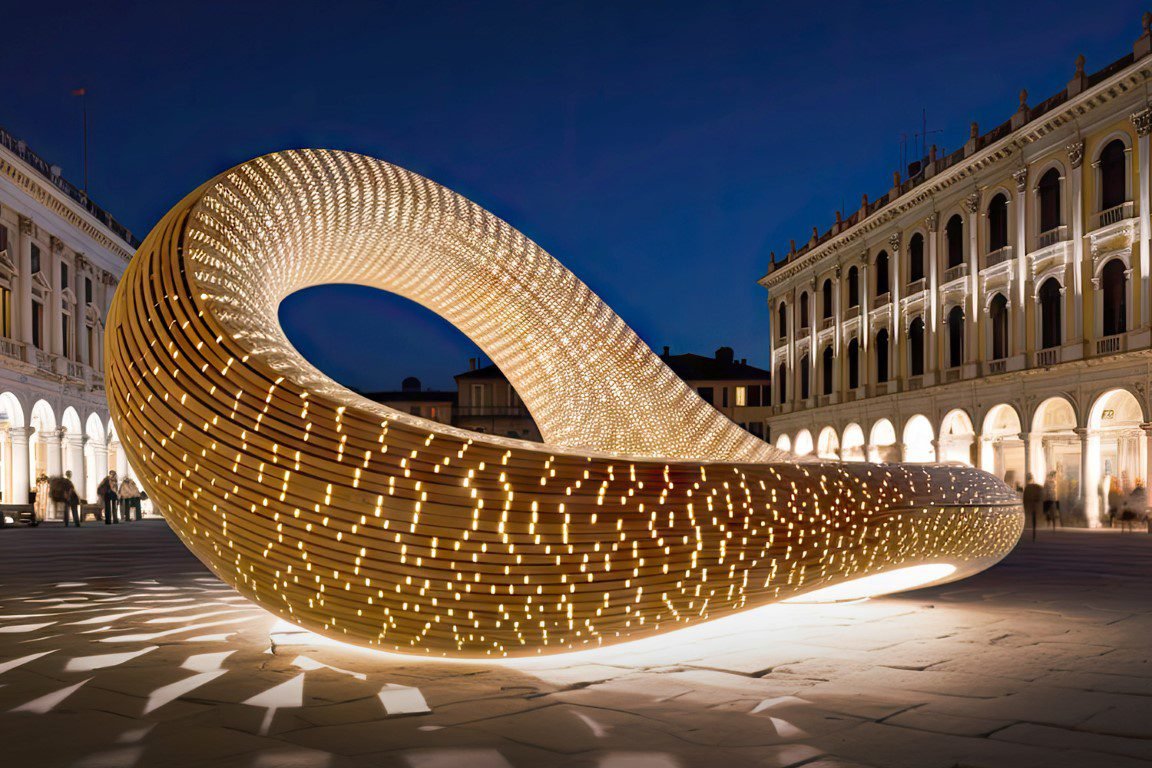
Choosing between architecture thesis topics is a big step for students since it’s the end of their education and a chance to show off their creativity and talents. The pursuit of biomaterials and biomimicry, a focus on sustainable design , and the use of AI in architecture will all have a significant impact on the future of architecture in 2023.
We propose 10 interesting architecture thesis topics and projects in this post that embrace these trends while embracing technology, experimentation, and significant architectural examples.
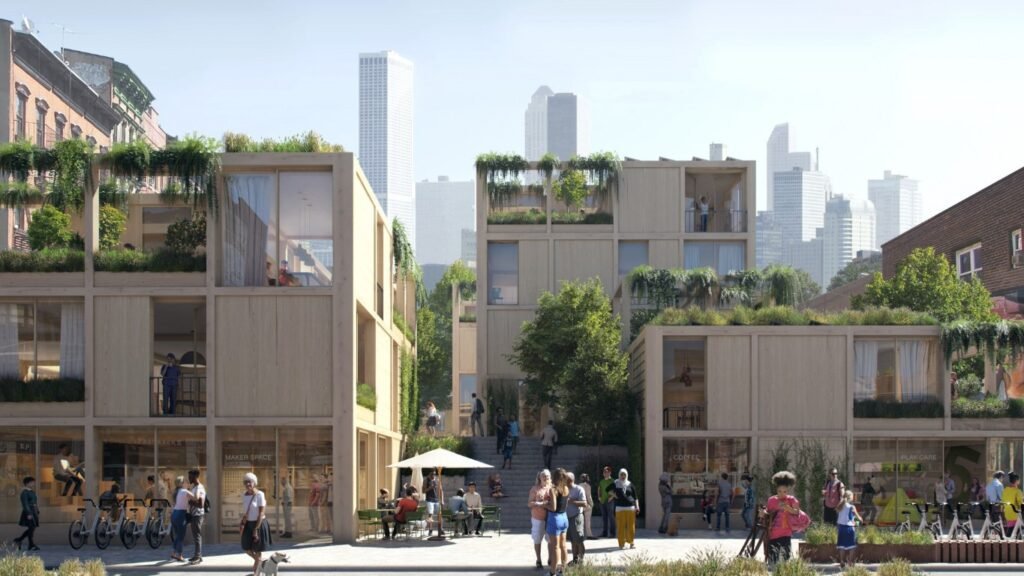
Architecture Thesis Topic #1 – Sustainable Affordable Housing
Project example: Urban Village Project is a new visionary model for developing affordable and livable homes for the many people living in cities around the world. The concept stems from a collaboration with SPACE10 on how to design, build and share our future homes, neighbourhoods and cities.
“Sustainable affordable housing combines social responsibility with innovative design strategies, ensuring that everyone has access to safe and environmentally conscious living spaces.” – John Doe, Sustainable Design Architect.

Architecture Thesis Topic #2 – Parametric Architecture Using Biomaterials
Project example: Parametric Lampchairs, using Agro-Waste by Vincent Callebaut Architectures The Massachusetts Institute of Technology’s (MIT) “Living Architecture Lab” investigates the fusion of biomaterials with parametric design to produce responsive and sustainable buildings . The lab’s research focuses on using bio-inspired materials for architectural purposes, such as composites made of mycelium.
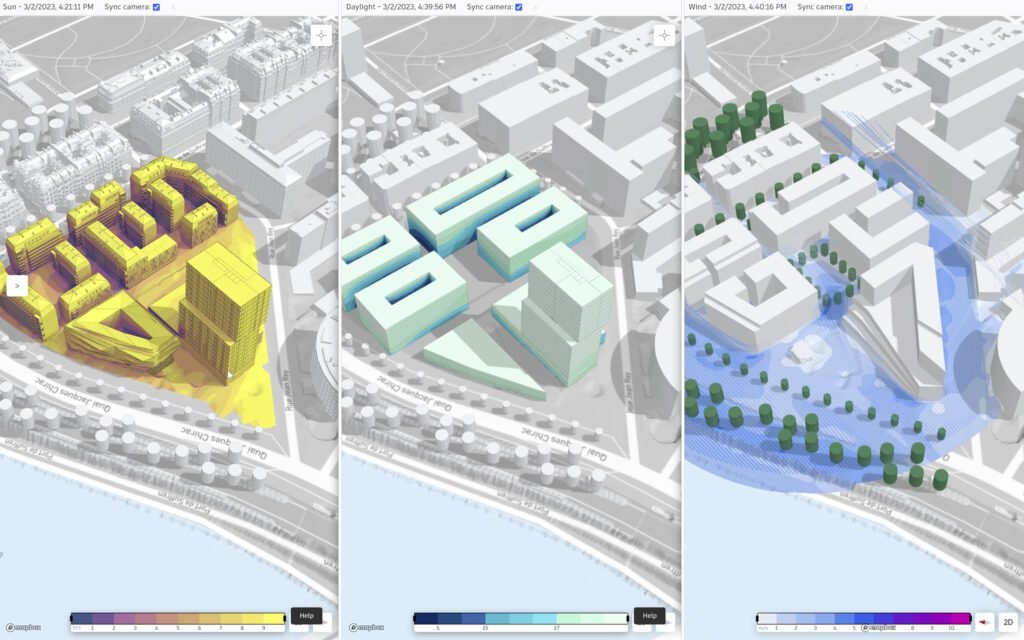
Architecture Thesis Topic #3 – Urban Planning Driven by AI
Project example: The University of California, Berkeley’s “ Smart City ” simulates and improves urban planning situations using AI algorithms. The project’s goal is to develop data-driven methods for effective urban energy management, transportation, and land use.
“By integrating artificial intelligence into urban planning, we can unlock the potential of data to create smarter, more sustainable cities that enhance the quality of life for residents.” – Jane Smith, Urban Planner.
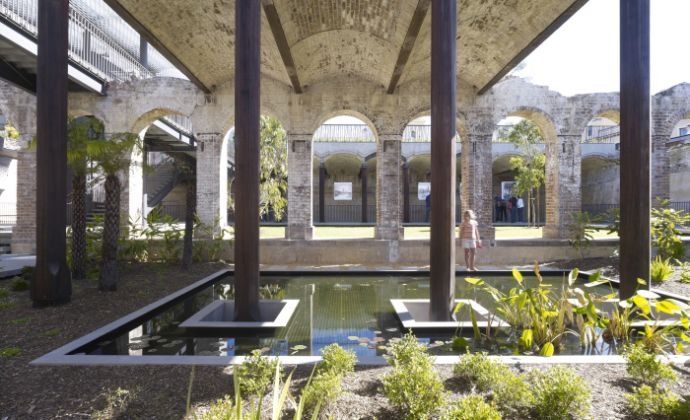
Architecture Thesis Topic #4 – Adaptive Reuse of Industrial Heritage
From 1866 to 1878, Oxford Street’s Paddington Reservoir was built. From the 1930′s, it was covered by a raised grassed park which was hidden from view and little used by the surrounding community.
Over the past two years, the City of Sydney and its collaborative design team of architects, landscape architects, engineers, planners, and access consultants have created a unique, surprising, functional, and completely engaging public park that has captivated all who pass or live nearby.
Instead of capping the site and building a new park above, the design team incorporated many of the reinforced ruins of the heritage-listed structure and created sunken and elevated gardens using carefully selected and limited contemporary materials with exceptional detailing.

Architecture Thesis Topic #5 – Smart and Resilient Cities
The capacity to absorb, recover from, and prepare for future shocks (economic, environmental, social, and institutional) is what makes a city resilient. Resilient cities have this capabilities. Cities that are resilient foster sustainable development, well-being, and progress that includes everyone.

Architecture Thesis Topic #6 – High Performing Green Buildings
The LEED certification offers a foundation for creating high-performing, sustainable structures. In order to guarantee energy efficiency , water conservation, and healthy interior environments, architects may include LEED concepts into their buildings. To learn more check our free training to becoming LEED accredited here .
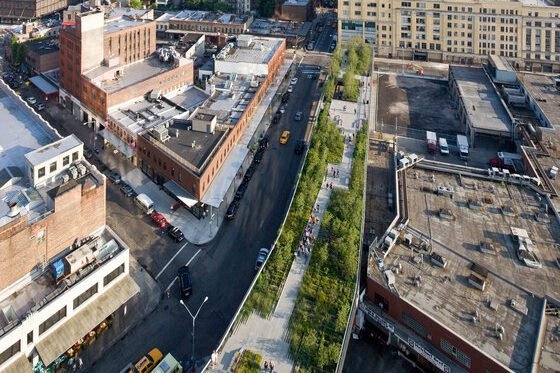
Architecture Thesis Topic #7 – Urban Landscapes with Biophilic Design
Project example: The High Line is an elevated linear park in New York City that stretches over 2.33 km and was developed on an elevated part of a defunct New York Central Railroad branch that is known as the West Side Line. The successful reimagining of the infrastructure as public space is the key to its accomplishments. The 4.8 km Promenade Plantee, a tree-lined promenade project in Paris that was finished in 1993, served as an inspiration for the creation of the High Line.
“Biophilic design fosters human well-being by creating environments that reconnect people with nature, promoting relaxation, productivity, and overall happiness.” – Sarah Johnson, Biophilic Design Consultant.

Architecture Thesis Topic #8 – Augmented and Virtual Reality in Architectural Visualization
An interactive experience that augments and superimposes a user’s real-world surroundings with computer-generated data. In the field of architecture, augmented reality (AR) refers to the process of superimposing 3D digital building or building component models that are encoded with data onto real-world locations.

Architecture Thesis Topic #9 – Sustainable Skyscrapers
There is even a master program called “Sustainable Mega-Buildings” in the UK , Cardiff dedicated to high-rise projects in relation to performance and sustainability. Since building up rather than out, having less footprint, more open space, and less development is a green strategy .
“Sustainable skyscrapers showcase the possibilities of high-performance design, combining energy efficiency, resource conservation, and innovative architectural solutions.” – David Lee, Sustainable Skyscraper Architect.

Architecture Thesis Topic #10 – Circular Economy in Construction
Project example: Building D(emountable) , a sustainable and fully demountable structure on the site of a historic, monumental building complex in the center of the Dutch city Delft. Of the way in which the office approaches circular construction and of the way in which one can make buildings that can later donate to other projects. Or even be reused elsewhere in their entirety.
“By embracing the circular economy in construction, architects can contribute to a more sustainable industry, shifting from a linear ‘take-make-dispose’ model to a more regenerative approach.” – Emily Thompson, Sustainable Construction Specialist.
Conclusion:
The 10 thesis projects for architecture discussed above demonstrate how AI, LEED , and sustainable design are all incorporated into architectural practice. Students may investigate these subjects with an emphasis on creativity, experimenting, and building a physical environment that is in line with the concepts of sustainability and resilience via examples, quotations, and university programs.
ACCESS YOUR FREE LEED RESOURCES
Become LEED accredited in 2 weeks or less!
At archiroots, we bring you educational content from some of the greatest professionals in the field.Their talents, skill and experitise is exceptional. When we present expected timings and figures on our website, we are showcasing exceptional results. You should not rely as any kind of promise, guarantee, or expectation of any level of success. Your results will be determined by a number of factors over which we have no control, such as your experiences, skills, level of effort, education, changes within the market, and luck. Use of any information contained on this website is as at your own risk. We provide content without any express or implied warranties of any kind. By continuing to use our site and access our content, you agree that we are not responsible for any decision you may make regarding any information presented or as a result of purchasing any of our products or services.
© 2024 Archiroots · Privacy Policy · Terms & Conditions
Email questions to [email protected]
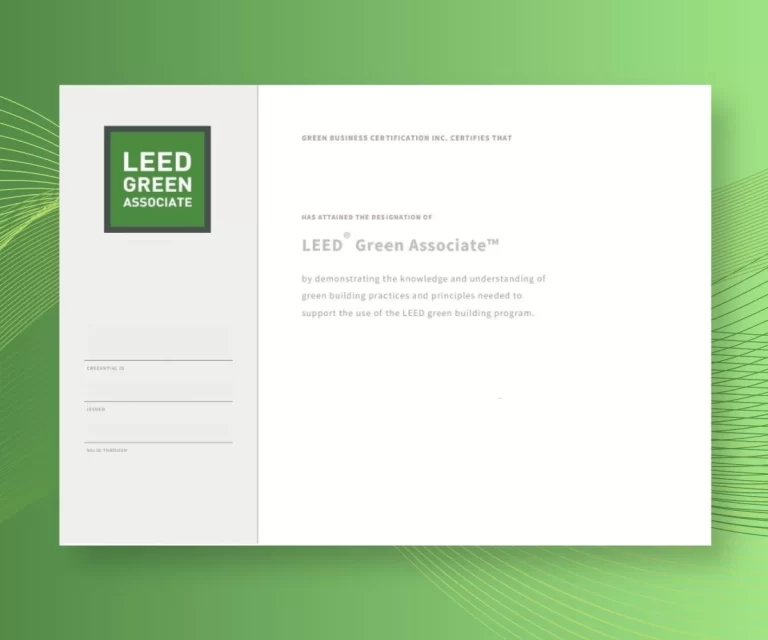
earn YOUR LEED CERTIFICATION in 2 weeks!
START FOR FREE
- Write my thesis
- Thesis writers
- Buy thesis papers
- Bachelor thesis
- Master's thesis
- Thesis editing services
- Thesis proofreading services
- Buy a thesis online
- Write my dissertation
- Dissertation proposal help
- Pay for dissertation
- Custom dissertation
- Dissertation help online
- Buy dissertation online
- Cheap dissertation
- Dissertation editing services
- Write my research paper
- Buy research paper online
- Pay for research paper
- Research paper help
- Order research paper
- Custom research paper
- Cheap research paper
- Research papers for sale
- Thesis subjects
- How It Works
Best 170 Architecture Thesis Topics For All Students

Architecture thesis topics may be difficult to find because there are so many subjects and possible topics. However, good thesis topics for architecture are the ones that you have a personal interest in. Before picking architecture thesis topics, you also need to ask yourself if the topic is significant or realistically doable.
Choosing Thesis Topics For Architecture
Architecture thesis projects topics, master of architecture thesis topics, industrial architecture thesis topics, institutional architecture thesis topics, sustainable architecture thesis topics.
What is the best way to choose dissertation topics? This guide will highlight how to pick interesting architectural thesis topics. Here are some factors to consider when searching for architecture thesis project ideas :
Pick a Topic That Interests You
While picking creative architecture thesis topics, you need to opt for a topic that you are personally interested in. You can easily get bored with your undergraduate architecture thesis projects, that is why you need something that you are passionate about. It will help you to stay motivated and inspired to create a unique project.
Set a Small Scope
It can be tempting to pick dissertation topics in architecture that are too expansive. This reduces the delivery time. It is safer to start with a simple version of the topic and includes some complexity later if necessary.
Find Architecture Thesis Topics That Reflect Your Skills
Everyone has unique skill sets that they have developed over time. There is no single person who is perfect at everything. When you know your technical and creative capabilities, you will be able to pick thesis topics in architecture that employs your expertise.
Can You Find Enough Research On The Topic?
Unusual architectural thesis topics require lots of research and analysis before starting. Therefore, it is essential to pick an area of study with a substantial amount of work already done. It will help you to easily analyze, compare, and draw conclusions.
Balance It Between Art And Science
While searching for architecture dissertation topics, students often dig themselves a grave. They tend to view the project as a culmination of a long program rooted deep in art and theory. You need to pick a topic that balances art and science. It shouldn’t be too abstract, so your teacher will know that you understand the issues raised.
Don’t Forget To Tie It To Your Plans For The Future
Your architecture thesis topics should be aligned with your plans. It should reflect your experience or interest in a specialized subject. It will play an important role as a part of your portfolio.
Pick Architecture Thesis Topics That Solve A Real Problem
Your thesis topics architecture ideas shouldn’t just be theoretical, they should also solve a real-world problem. The world struggles with several issues, such as population growth, climate change, and a lack of proper distribution of resources. So, find a topic that can solve a socio-environmental problem using design intervention.
- Creation of affordable housing
- Development waterfront property
- Airport functioning
- Heritage museums
- Skyscraper design
- Cinema and theatre architecture
- Suburban homes for multi-families
- Multimedia film city
- Gaming and Animation studio
- Aquarium-Aqua display and design
- Marine park design
- Lightning excellence center
- MTRS study and station
- Modern art museum
- Convention center
- Automobile training center
- Archaeological survey institute
- Luxury beach-facing apartments
- The bus terminal with a commercial complex
- School of art & design
- Cruise terminal design
- Bio-climatic buildings
- Media center
- Cricket stadium display
- Disaster management institute
- Resort design
- Polo retreat
- Television and film institute
- The transit system as well as the possible improvements
- Educational Institute for all rural children
- A local heritage site
- The lighting system in the Egyptian Pyramids
- Film city studios, gaming area as well its structure
- Underwater restaurants in different parts of the globe for light, electricity, and sanitation.
- The transformation node found at the Lancaster
- The heat/cooling systems in beach huts
- Checking pressure and oxygen levels for building tourists spots
- Fashion Fiesta Paris
- The Golden Gate and architecture
- An archaeologist’s point of view of China from a survey of China
- WHO’s headquarters and renovation
- The ideal environment for a Rehab
- Russian fairytale-style homes and huts
- A clear insight into the auto industry
- Installing swimming pools in a mall
- Training centers for adults in Texas
- Buildings for religious purposes
- Comparing contemporary vs. traditional housing
- Deconstructing a typical school to make room for collaboration and creativity
- Apartments for couples
- Multifamily suburban homes
- The power of air: leaving closed windows for good
- Semidetached and row houses
- Staying on the budget while creating an architectural masterpiece
- Single-family suburban homes
- Hotels and residence
- Single-family country homes
- Developing healthy living spots in third-world countries
- Design of Ruled Surfaces.
- A method to design the kinetic planar surface using mathematical tessellation techniques.
- Waterfront development of an exhibition center
- Bio-inspired design for adaptable structures
- Construction of time conception
- A critical view of architecture – is it sustainable?
- Analytical studies of design potentials in architecture
- Determination of the concept of place in the built environment’s reproduction process
- Aqua display/Research Center
- Forest Research/Training Institute
- Archaeological Survey of Canada – Research and Training Institute
- Luxury Sea-front Studios at Ottawa
- Digital Morphogenesis as well as Its Implementation
- Bio-climatic Tower
- Mass rapid transit system study and station
- Designing organic structures to withstand time
- Showing culture in structures
- Maximizing size in miniature apartments
- Architectural trends at most transportation hubs
- Redefining a city with architecture
- Renovating century-old structures without losing the culture
- Outdoor architecture: creating getaways in small backyards.
A master of architecture qualification provides students with the relevant knowledge, skills, and values needed to enter the architecture sector and pursue opportunities and careers in this profession for master thesis help . It focuses on developing the ability to adapt to change in the diverse and critical world we live in. students are allowed to create a speculative and reflective relationship to their work.
- The introduction of biotechnology in architecture design for adaptable structures.
- An analytical assessment of mathematical organization methods in active flat surface plans.
- The consideration of soil and terrain conditions to determine adequate story building locations.
- A conceptual method for the outline and fabrication of cultural centers and foundations
- Finding the importance of a town or county’s various buildings and structures.
- A critical analysis of the architectural techniques used to construct the lighting within the ancient pyramids of Giza.
- An evaluation of the restaurants near the coastline in various areas of the country with important consideration on plumbing, air supply, and lighting.
- An analysis of China’s Great Wall with consideration of the structure’s historical significance.
- Understanding the impact of certain architectural codes and protocols on the environment.
- The possibility to achieve inexpensive house construction plans in first-world countries.
- Why do the majority of third-world countries have substandard housing structures?
- A case study on the significance of all learners of architecture in the profession.
- An analysis of the primary conditions that affect buildings in places that are susceptible to earthquakes.
- Building methods and consideration for constructions with the ability to endure natural disasters.
- A detailed report of the Twin Towers and the popularity of skyscraper construction.
- The significance of applied science in defining modern housing from traditional examples.
- Using records in architecture to understand the history of the profession.
- A critical analysis of architectural photography.
- The evaluation of cost considerations in architectural specifications and estimations.
- What motivates different architectural drawings and concepts.
- Case studies on sustainable modern design structures.
- The importance of digital mapping and concepts in architecture.
- Methods of limiting energy loss.
Industrial architecture is a branch of architecture that is used for the design of industrial buildings. These buildings need to be designed with consideration of their main purpose, which is to process raw materials. Their designs need to prioritize safety and optimal function over aesthetics and exterior appeal.
With the increased evolution taking place in technology today, industrial buildings and their designs need to adapt and keep up. This is why it calls for more research and consideration since industrial buildings are a need for modern society.
- Waterfront development – Beach convention and exhibition centers.
- Design of ruled surfaces.
- Construction of time conception in the architectural realm.
- A critical view of sustainable architecture.
- Determination of Place concept in the reproduction process of the built environment.
- Analytical study of the design potentials in kinetic architecture.
- Is deconstructive architecture useful?
- How did brutalism and contemporary architectures influence the world?
- Current trends in parametric architecture.
- How will traditional industrial structures be made more environmentally friendly and sustainable?
- Industrial architecture’s evolution.
- A critical analysis of the Dockland building, Germany.
- What purpose does industrial architecture play in creating a safe environment?
- Where do the professions of car construction and manufacturing come together?
- Industrial architecture during the industrial revolution.
- Evaluation of daylight in office buildings.
- Analysis of different lifestyle interactions.
- The purpose of reinforced concrete skeleton systems and earthquake’s effect on them.
- The future of architecture with the consideration of space exploration.
- The purpose of environmental science and social anthropology in architecture.
- Making architecture design studios relevant in the technological era.
- Extra skills are necessary for working on complex architectural projects.
- How collaboration is helping architectures achieve complex structural needs.
This is the branch of architecture that deals with environmental, social, and economic factors. This profession is based on various rules and traditions that were passed down for centuries. It grants architects the ability to find new ways to innovate the architectural industry.
Over time, the design for buildings all over the world evolves and is influenced by different cultures and styles. This can give the structure of the building different meanings and provides various opportunities to discuss its design and reason to be built.
- Theme parks and attractions
- Religious buildings
- Auditoriums
- Sport facilities
- Art galleries
- Cultural centers and foundations
- School and universities
- Bars and discotheques
- Shopping malls
- Theaters and cinemas
- Restaurants
- Transportation thesis on airports
- Train stations
- Urban transport
- Promenades and streets
- Urban parks
- Stores and showrooms
- Peripheral parks
- Urban monuments and land art
Sustainable architecture is the use of various plans and techniques to withstand the negative effect on the environment of modern man-made structures. Architects would take all aspects of the project, from landscape to water drainage, and determine the best way for the building to function with the least impact on the environment. These buildings and designs need to ensure that they are functional, appealing to the eye, and have as little carbon footprint as possible.
- Neighborhood development
- Community garden concepts
- Waste recycling facilities
- Heritage building restoration
- Rehabilitation housing
- Riverfront development
- SMART village
- Net-Zero energy building
- Bermed structure
- Regenerative design
- Urban Agriculture center
- Revitalizing abandoned mills and processing buildings
- Eco-tourism facilities
- Revival of an old building
- Repurpose a building
- Redevelopment of a slum
- Vertical farm
- Wetland restoration
- Energy efficiency in buildings
- How the location of the building is necessary for sustainability
Picking one of the topics above may help you get a head start on your paper. However, if you still need dissertation writing help, you can find professionals to help you with fresh ideas to work on.
Are you stuck with writing your thesis? Just enter promo “ mythesis ” – that’s all you need to get a 20% discount for any architecture writing assignment you might have!
Leave a Reply Cancel reply
Advertisement
A comprehensive review on green buildings research: bibliometric analysis during 1998–2018
- Environmental Concerns and Pollution control in the Context of Developing Countries
- Published: 16 February 2021
- Volume 28 , pages 46196–46214, ( 2021 )
Cite this article

- Li Ying 1 , 2 ,
- Rong Yanyu ORCID: orcid.org/0000-0003-0722-8510 1 , 3 ,
- Umme Marium Ahmad 1 ,
- Wang Xiaotong 1 , 3 ,
- Zuo Jian 4 &
- Mao Guozhu 1 , 3
18k Accesses
54 Citations
Explore all metrics
Buildings account for nearly 2/5ths of global energy expenditure. Due to this figure, the 90s witnessed the rise of green buildings (GBs) that were designed with the purpose of lowering the demand for energy, water, and materials resources while enhancing environmental protection efforts and human well-being over time. This paper examines recent studies and technologies related to the design, construction, and overall operation of GBs and determines potential future research directions in this area of study. This global review of green building development in the last two decades is conducted through bibliometric analysis on the Web of Science, via the Science Citation Index and Social Sciences Citation Index databases. Publication performance, countries’ characteristics, and identification of key areas of green building development and popular technologies were conducted via social network analysis, big data method, and S-curve predictions. A total of 5246 articles were evaluated on the basis of subject categories, journals’ performance, general publication outputs, and other publication characteristics. Further analysis was made on dominant issues through keyword co-occurrence, green building technologies by patent analysis, and S-curve predictions. The USA, China, and the UK are ranked the top three countries where the majority of publications come from. Australia and China had the closest relationship in the global network cooperation. Global trends of the top 5 countries showed different country characteristics. China had a steady and consistent growth in green building publications each year. The total publications on different cities had a high correlation with cities’ GDP by Baidu Search Index. Also, barriers and contradictions such as cost, occupant comfort, and energy consumption were discussed in developed and developing countries. Green buildings, sustainability, and energy efficiency were the top three hotspots identified through the whole research period by the cluster analysis. Additionally, green building energy technologies, including building structures, materials, and energy systems, were the most prevalent technologies of interest determined by the Derwent Innovations Index prediction analysis. This review reveals hotspots and emerging trends in green building research and development and suggests routes for future research. Bibliometric analysis, combined with other useful tools, can quantitatively measure research activities from the past and present, thus bridging the historical gap and predicting the future of green building development.
Similar content being viewed by others

Scientometric of Nearly Zero Energy Building Research: A Systematic Review from the Perspective of Co-Citation Analysis

Determining Technologies Trends and Evolution of Smart Building Technologies by Bibliometric Analysis from 1984 to 2020

Determining Technologies Trends and Evolution of Smart Building Technologies by Bibliometric Analysis from 1984 to 2020
Avoid common mistakes on your manuscript.
Introduction
Rapid urban development has resulted in buildings becoming a massive consumer of energy (Yuan et al. 2013 ), liable for 39% of global energy expenditure and 68% of total electricity consumption in the USA (building). In recent years, green buildings (GBs) have become an alternative solution, rousing widespread attention. Also referred to as sustainable buildings, low energy buildings, and eco-buildings, GBs are designed to reduce the strain on environmental resources as well as curb negative effects on human health by efficiently using natural resources, reducing garbage, and ensuring the residents’ well-being through improved living conditions ( Agency USEP Indoor Air Quality ; Building, n.d ). As a strategy to improve the sustainability of the construction industry, GBs have been widely recognized by governments globally, as a necessary step towards a sustainable construction industry (Shen et al. 2017 ).
Zuo and Zhao ( 2014 ) reviewed the current research status and future development direction of GBs, focusing on connotation and research scope, the benefit-difference between GBs and traditional buildings, and various ways to achieve green building development. Zhao et al. ( 2019 ) presented a bibliometric report of studies on GBs between 2000 and 2016, identifying hot research topics and knowledge gaps. The verification of the true performance of sustainable buildings, the application of ICT, health and safety hazards in the development of green projects, and the corporate social responsibility were detected as future agenda. A scientometrics review of research papers on GB sources from 14 architectural journals between 1992 and 2018 was also presented (Wuni et al. 2019a ). The study reported that 44% of the world participated in research focusing on green building implementation; stakeholder management; attitude assessment; regulations and policies; energy efficiency assessment; sustainability performance assessment; green building certification, etc.
With the transmission of the COVID-19 virus, society is now aware of the importance of healthy buildings. In fact, in the past 20 years, the relationship between the built environment and health has aroused increasing research interest in the field of building science. Public spaces and dispersion of buildings in mixed-use neighborhoods are promoted. Furthermore, telecommuting has become a trend since the COVID-19 pandemic, making indoor air quality even more important in buildings, now (Fezi 2020 ).
The system for evaluating the sustainability of buildings has been established for nearly two decades. But, systems dedicated to identifying whether buildings are healthy have only recently appeared (McArthur and Powell 2020 ). People are paying more and more attention to health factors in the built environment. This is reflected in the substantial increase in related academic papers and the increase in health building certification systems such as WELE and Fitwel (McArthur and Powell 2020 ).
Taking the above into consideration, the aim of this study is to examine the stages of development of GBs worldwide and find the barriers and the hotpots in global trends. This study may be beneficial to foreign governments interested in promoting green building and research in their own nations.
Methodology
Overall description of research design.
Since it is difficult to investigate historical data and predict global trends of GBs, literature research was conducted to analyze their development. The number of published reports on a topic in a particular country may influence the level of industrial development in that certain area (Zhang et al. 2017 ). The bibliometric analysis allows for a quantitative assessment of the development and advancement of research related to GBs and where they are from. Furthermore, it has been shown that useful data has been gathered through bibliometrics and patent analysis (Daim et al. 2006 ).
In this report, the bibliometric method, social network analysis (SNA), CiteSpace, big data method, patent analysis, and S-curve analysis are used to assess data.
Bibliometrics analysis
Bibliometrics, a class of scientometrics, is a tool developed in 1969 for library and information science. It has since been adopted by other fields of study that require a quantitative assessment of academic articles to determine trends and predict future research scenarios by compiling output and type of publication, title, keyword, author, institution, and countries data (Ho 2008 ; Li et al. 2017 ).
Social network analysis
Social network analysis (SNA) is applied to studies by modeling network maps using mathematics and statistics (Mclinden 2013 ; Ye et al. 2013 ). In the SNA, nodes represent social actors, while connections between actors stand for their relationships (Zhang et al. 2017 ). Correlations between two actors are determined by their distance from each other. There is a variety of software for the visualization of SNA such as Gephi, Vosviewer, and Pajek. In this research, “Pajek” was used to model the sequence of and relationships between the objects in the map (Du et al. 2015 ).
CiteSpace is an open-source Java application that maps and analyzes trends in publication statistics gathered from the ISI-Thomson Reuters Scientific database and produces graphic representations of this data (Chen 2006 ; Li et al. 2017 ). Among its many functions, it can determine critical moments in the evolution of research in a particular field, find patterns and hotspots, locate areas of rapid growth, and breakdown the network into categorized clusters (Chen 2006 ).
Big data method
The big data method, with its 3V characters (volume, velocity, and variety), can give useful and accurate information. Enormous amounts of data, which could not be collected or computed manually through conventional methods, can now be collected through public data website. Based on large databases and machine learning, the big data method can be used to design, operate, and evaluate energy efficiency and other index combined with other technologies (Mehmood et al. 2019 ). The primary benefit of big data is that the data is gathered from entire populations as opposed to a small sample of people (Chen et al. 2018 ; Ho 2008 ). It has been widely used in many research areas. In this research, we use the “Baidu Index” to form a general idea of the trends in specific areas based on user interests. The popularity of the keywords could imply the user’s behavior, user’s demand, user’s portrait, etc. Thus, we can analyze the products or events to help with developing strategies. However, it must be noted that although big data can quantitatively represent human behavior, it cannot determine what motivates it. With the convergence of big data and technology, there are unprecedented applications in the field of green building for the improved indoor living environment and controlled energy consumption (Marinakis 2020 ).
- Patent analysis
Bibliometrics, combined with patent analysis, bridges gaps that may exist in historical data when predicting future technologies (Daim et al. 2006 ). It is a trusted form of technical analysis as it is supported by abundant sources and commercial awareness of patents (Guozhu et al. 2018 ; Yoon and Park 2004 ). Therefore, we used patent analysis from the Derwent patent database to conduct an initial analysis and forecast GB technologies.
There are a variety of methods to predict the future development prospects of a technology. Since many technologies are developed in accordance with the S-curve trend, researchers use the S-curve to observe and predict the future trend of technologies (Bengisu and Nekhili 2006 ; Du et al. 2019 ; Liu and Wang 2010 ). The evolution of technical systems generally goes through four stages: emerging, growth, maturity, and decay (saturation) (Ernst 1997 ). We use the logistics model (performed in Loglet Lab 4 software developed by Rockefeller University) to simulate the S-curve of GB-related patents to predict its future development space.
Data collection
The Web of Science (WOS) core collection database is made up of trustworthy and highly ranked journals. It is considered the leading data portal for publications in many fields (Pouris and Pouris 2011 ). Furthermore, the WOS has been cited as the main data source in many recent bibliometric reviews on buildings (Li et al. 2017 ).
Access to all publications used in this paper was attained through the Science Citation Index-Expanded and the Social Sciences Citation Index databases. Because there is no relevant data in WOS before 1998, our examination focuses on 1998 to 2018. With consideration of synonyms, we set a series of green building-related words (see Appendix ) in titles, abstracts, and keywords for bibliometric analysis. For example, sustainable, low energy, zero energy, and low carbon can be substituted for green; housing, construction, and architecture can be a substitute for building (Zuo and Zhao 2014 ).
Analytical procedure
The study was conducted in three stages; data extraction was the first step where all the GB-related words were screened in WOS. Afterwards, some initial analysis was done to get a complete idea of GB research. Then, we made a further analysis on countries’ characteristics, dominant issues, and detected technology hotspots via patent analysis (Fig. 1 ).
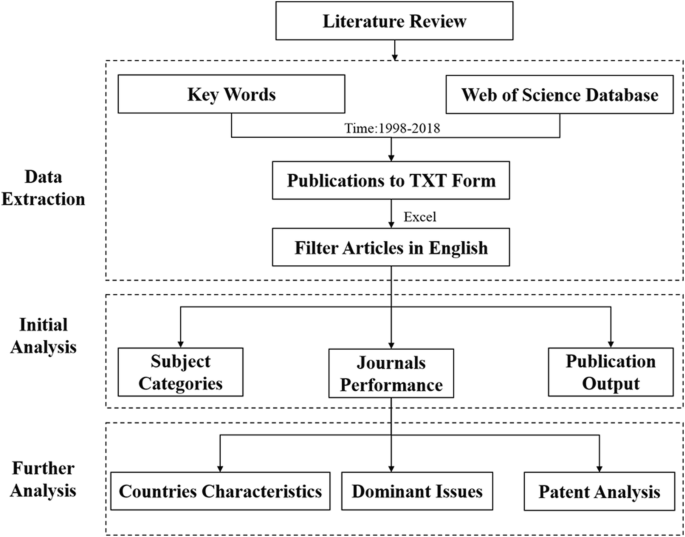
Analytical procedure of the article
Results and analysis
General results.
Of the 6140 publications searched in the database, 88.67% were articles, followed by reviews (6.80%), papers (3.72%), and others (such as editorial materials, news, book reviews). Most articles were written in English (96.78%), followed by German (1.77%), Spanish (0.91%), and other European languages. Therefore, we will only make a further analysis of the types of articles in English publications.
The subject categories and their distribution
The SCI-E and SSCI database determined 155 subjects from the pool of 5246 articles reviewed, such as building technology, energy and fuels, civil engineering, environmental, material science, and thermodynamics, which suggests green building is a cross-disciplinary area of research. The top 3 research areas of green buildings are Construction & Building Technology (36.98%), Energy & Fuels (30.39%), and Engineering Civil (29.49%), which account for over half of the total categories.
The journals’ performance
The top 10 journals contained 38.8% of the 5246 publications, and the distribution of their publications is shown in Fig. 2 . Impact factors qualitatively indicate the standard of journals, the research papers they publish, and researchers associated with those papers (Huibin et al. 2015 ). Below, we used 2017 impact factors in Journal Citation Reports (JCR) to determine the journal standards.

The performance of top10 most productive journals
Publications on green building have appeared in a variety of titles, including energy, building, environment, materials, sustainability, indoor built environment, and thermal engineering. Energy and Buildings, with its impact factor 4.457, was the most productive journal apparently from 2009 to 2017. Sustainability (IF = 2.075) and Journal of Cleaner Production (IF = 5.651) rose to significance rapidly since 2015 and ranked top two journals in 2018.
Publication output
The total publication trends from 1998 to 2018 are shown in Fig. 3 , which shows a staggering increase across the 10 years. Since there was no relevant data before 1998, the starting year is 1998. Before 2004, the number of articles published per year fluctuated. The increasing rate reached 75% and 68% in 2004 and 2007, respectively, which are distinguished in Fig. 3 that leads us to believe that there are internal forces at work, such as appropriate policy creation and enforcement by concerned governments. There was a constant and steady growth in publications after 2007 in the worldwide view.
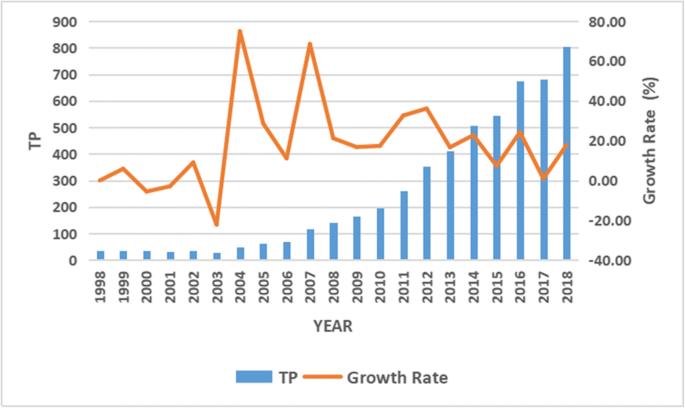
The number of articles published yearly, between 1998 and 2018
The characteristics of the countries
Global distribution and global network were analyzed to illustrate countries’ characteristics. Many tools such as ArcGIS, Bibexcel, Pajek, and Baidu index were used in this part (Fig. 4 ).
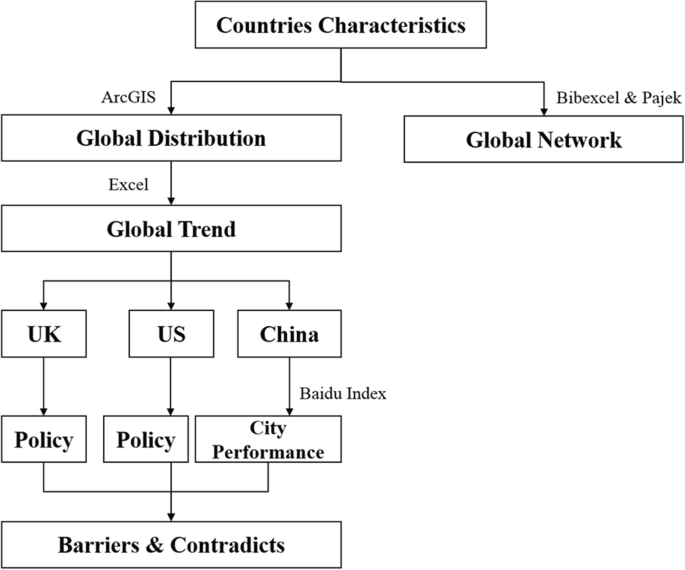
Analysis procedure of countries’ characteristics
Global distribution of publications
By extracting the authors’ addresses (Mao et al. 2015 ), the number of publications from each place was shown in Fig. 5 and Table 1 . Apparently, the USA was the most productive country accounting for 14.98% of all the publications. China (including Hong Kong and Taiwan) and the UK followed next by 13.29% and 8.27% separately. European countries such as Italy, Spain, and Germany also did a lot of work on green building development.
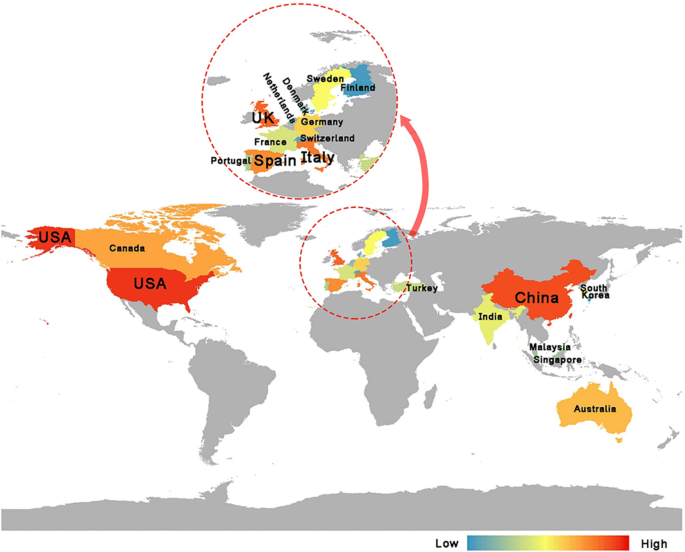
Global geographical distribution of the top 20 publications based on authors’ locations
Global research network
Global networks illustrate cooperation between countries through the analysis of social networks. Academic partnerships among the 10 most productive countries are shown in Fig. 6 . Collaboration is determined by the affiliation of the co-authors, and if a publication is a collaborative research, all countries or institutions will benefit from it (Bozeman et al. 2013 ). Every node denotes a country and their size indicates the amount of publications from that country. The lines linking the nodes denote relationships between countries and their thickness indicates the level of collaboration (Mao et al. 2015 ).

The top 10 most productive countries had close academic collaborative relationships
It was obvious that China and Australia had the strongest linking strength. Secondly, China and the USA, China, and the UK also had close cooperation with each other. Then, the USA with Canada and South Korea followed. The results indicated that cooperation in green building research was worldwide. At the same time, such partnerships could help countries increase individual productivity.
Global trend of publications
The time-trend analysis of academic inputs to green building from the most active countries is shown in Fig. 7 .
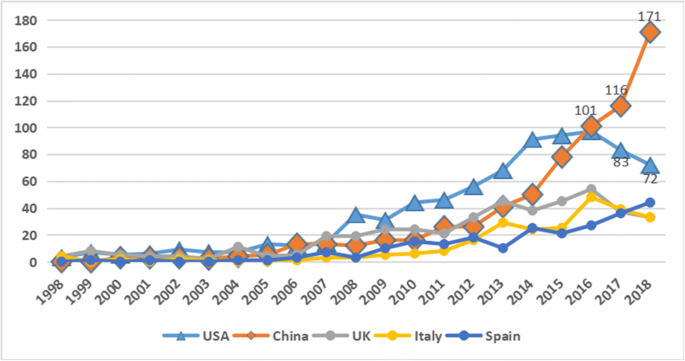
The publication trends of the top five countriesbetween 1998 and 2018 countries areshown in Fig 7 .
Before 2007, these countries showed little growth per year. However, they have had a different, growing trend since 2007. The USA had the greatest proportion of publications from 2007, which rose obviously each year, reaching its peak in 2016 then declined. The number of articles from China was at 13 in 2007, close to the USA. Afterwards, there was a steady growth in China. Not until 2013 did China have a quick rise from 41 publications to 171 in 2018. The UK and Italy had a similar growth trend before 2016 but declined in the last 2 years.
Further analysis on China, the USA, and the UK
Green building development in china, policy implementation in china.
Green building design started in China with the primary goal of energy conservation. In September 2004, the award of “national green building innovation” of the Ministry of Construction was launched, which kicked off the substantive development of GB in China. As we can see from Fig. 7 , there were few publications before 2004 in China. In 2004, there were only 4 publications on GB.
The Ministry of Construction, along with the Ministry of Science and Technology, in 2005, published “The Technical Guidelines for Green Buildings,” proposing the development of GBs (Zhang et al. 2018 ). In June 2006, China had implemented the first “Evaluation Standard for Green Building” (GB/T 50378-2006), which promoted the study of the green building field. In 2007, the demonstration of “100 projects of green building and 100 projects of low-energy building” was launched. In August 2007, the Ministry of Construction issued the “Green Building Assessment Technical Regulations (try out)” and the “Green Building Evaluation Management,” following Beijing, Tianjin, Chongqing, and Shanghai, more than 20 provinces and cities issued the local green building standards, which promoted GBs in large areas in China.
At the beginning of 2013, the State Council issued the “Green Building Action Plan,” so the governments at all levels continuously issued incentive policies for the development of green buildings (Ye et al. 2015 ). The number of certified green buildings has shown a blowout growth trend throughout the country, which implied that China had arrived at a new chapter of development.
In August 2016, the Evaluation Standard for Green Renovation of Existing Buildings was released, encouraging the rise of residential GB research. Retrofitting an existing building is often more cost-effective than building a new facility. Designing significant renovations and alterations to existing buildings, including sustainability measures, will reduce operating costs and environmental impacts and improve the building’s adaptability, durability, and resilience.
At the same time, a number of green ecological urban areas have emerged (Zhang et al. 2018 ). For instance, the Sino-Singapore Tianjin eco-city is a major collaborative project between the two governments. Located in the north of Tianjin Binhai New Area, the eco-city is characterized by salinization of land, lack of freshwater, and serious pollution, which can highlight the importance of eco-city construction. The construction of eco-cities has changed the way cities develop and has provided a demonstration of similar areas.
China has many emerging areas and old centers, so erecting new, energy efficiency buildings and refurbishing existing buildings are the best steps towards saving energy.
Baidu Search Index of “green building”
In order to know the difference in performance among cities in China, this study employs the big data method “Baidu Index” for a smart diagnosis and assessment on green building at finer levels. “Baidu Index” is not equal to the number of searches but is positively related to the number of searches, which is calculated by the statistical model. Based on the keyword search of “green building” in the Baidu Index from 2013 to 2018, the top 10 provinces or cities were identified (Fig. 8 ).
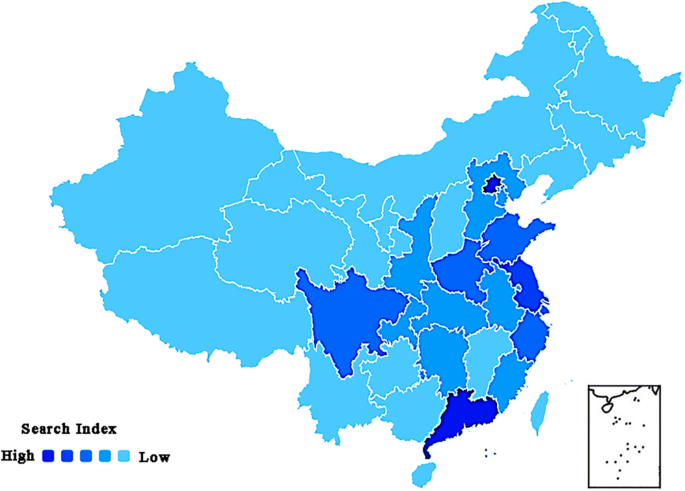
Baidu Search Index of green building in China 2013–2018 from high to low
The top 10 search index distributes the east part and middle part of China, most of which are the high GDP provinces (Fig. 9 ). Economically developed cities in China already have a relatively mature green building market. Many green building projects with local characteristics have been established (Zhang et al. 2018 ).
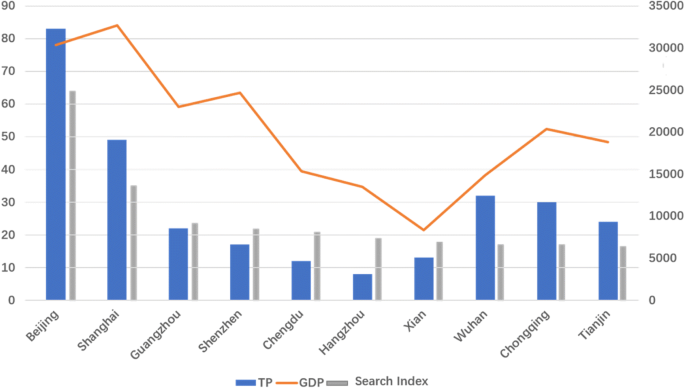
TP GDP & Search Index were highly related
We compared the city search index (2013–2018) with the total publications of different cities by the authors’ address and the GDP in 2018. The correlation coefficient between the TP and the search index was 0.9, which means the two variables are highly related. The correlation coefficient between the TP and GDP was 0.73, which also represented a strong relationship. We inferred that cities with higher GDP had more intention of implementation on green buildings. The stronger the local GDP, the more relevant the economic policies that can be implemented to stimulate the development of green buildings (Hong et al. 2017 ). Local economic status (Yang et al. 2018 ), property developer’s ability, and effective government financial incentives are the three most critical factors for green building implementation (Huang et al. 2018 ). However, Wang et al. ( 2017 ) compared the existing green building design standards and found that they rarely consider the regional economy. Aiming at cities at different economic development phases, the green building design standards for sustainable construction can effectively promote the implementation of green buildings. Liu et al. ( 2020 ) mainly discussed the impact of sustainable construction on GDP. According to the data, there is a strong correlation between the percentage of GDP increments in China and the amount of sustainable infrastructure (Liu et al. 2020 ). The construction of infrastructure can create jobs and improve people’s living standards, increasing GDP as a result (Liu et al. 2020 ).
Green building development in the USA and the UK
The sign that GBs were about to take-off occurred in 1993—the formation of the United States Green Building Council (USGBC), an independent agency. The promulgation of the Energy Policy Act 2005 in the USA was the key point in the development of GBs. The Energy Policy Act 2005 paid great attention to green building energy saving, which also inspired publications on GBs.
Leadership in Energy and Environmental Design (LEED), a popular metric for sustainable buildings and homes (Jalaei and Jrade 2015 ), has become a thriving business model for green building development. It is a widely used measure of how buildings affect the environment.
Another phenomenon worth discussion, combined with Fig. 7 , the increasing rate peaked at 75% in 2004 and 68% in 2007 while the publications of the UK reached the peak in 2004 and 2007. The UK Green Building Council (UKGBC), a United Kingdom membership organization, created in 2007 with regard to the 2004 Sustainable Building Task Group Report: Better Buildings - Better Lives, intends to “radically transform,” all facets of current and future built environment in the UK. It is predicted that the establishment of the UKGBC promoted research on green buildings.
From the China, the USA, and the UK experience, it is predicted that the foundation of a GB council or the particular projects from the government will promote research in this area.
Barriers and contradicts of green building implement
On the other hand, it is obvious that the USA, the UK, and Italian publications have been declining since 2016. There might be some barriers and contradicts on the adoption of green buildings for developed countries. Some articles studied the different barriers to green building in developed and developing countries (Chan et al. 2018 ) (Table 2 ). Because the fraction of energy end-uses is different, the concerns for GBs in the USA, China, and the European Union are also different (Cao et al. 2016 ).
It is regarded that higher cost is the most deterring barrier to GB development across the globe (Nguyen et al. 2017 ). Other aspects such as lack of market demand and knowledge were also main considerations of green building implementation.
As for market demand, occupant satisfaction is an important factor. Numerous GB post-occupancy investigations on occupant satisfaction in various communities have been conducted.
Paul and Taylor ( 2008 ) surveyed personnel ratings of their work environment with regard to ambience, tranquility, lighting, sound, ventilation, heat, humidity, and overall satisfaction. Personnel working in GBs and traditional buildings did not differ in these assessments. Khoshbakht et al. ( 2018 ) identified two global contexts in spite of the inconclusiveness: in the west (mainly the USA and Britain), users experienced no significant differences in satisfaction between green and traditional buildings, whereas, in the east (mainly China and South Korea), GB user satisfaction is significantly higher than traditional building users.
Dominant issues
The dominant issues on different stages.
Bibliometric data was imported to CiteSpace where a three-stage analysis was conducted based on development trends: 1998–2007 initial development; 2008–2015 quick development; 2016–2018 differentiation phase (Fig. 10 ).
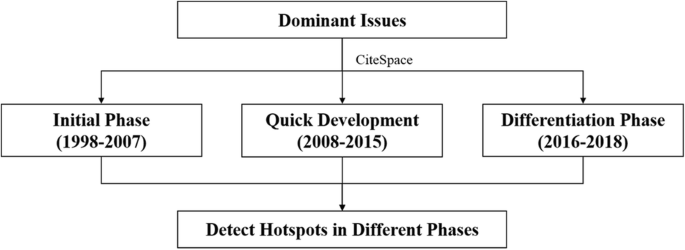
Analysis procedure of dominant issues
CiteSpace was used for word frequency and co-word analysis. The basic principle of co-word analysis is to count a group of words appearing at the same time in a document and measure the close relationship between them by the number of co-occurrences. The top 50 levels of most cited or occurred items from each slice (1998 to 2007; 2008 to 2015; 2016 to 2018) per year were selected. After merging the similar words (singular or plural form), the final keyword knowledge maps were generated as follows.
Initial phase (1998–2007)
In the early stage (Fig. 11 ), “green building” and “sustainability” were the main two clusters. Economics and “environmental assessment method” both had high betweenness centrality of 0.34 which were identified as pivotal points. Purple rings denote pivotal points in the network. The relationships in GB were simple at the initial stage of development.
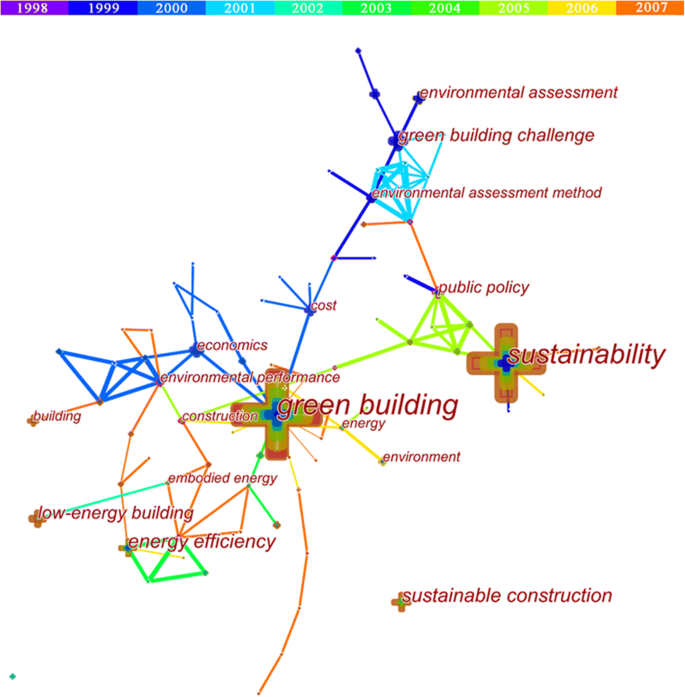
Co-word analysis from 1998–2007
Sustainable construction is further enabled with tools that can evaluate the entire life cycle, site preparation and management, materials and their reusability, and the reduction of resource and energy consumption. Environmental building assessment methods were incorporated to achieve sustainable development, especially at the initial project appraisal stage (Ding 2008 ). Green Building Challenge (GBC) is an exceptional international research, development, and dissemination effort for developing building environmental performance assessments, primarily to help researchers and practitioners in dealing with difficult obstacles in assessing performance (Todd et al. 2001 ).
Quick development (2008–2015)
In the rapid growing stage (Fig. 12 ), pivot nodes and cluster centers were more complicated. Besides “green building” and “sustainability,” “energy efficiency” was the third hotspot word. The emergence of new vocabulary in the keyword network indicated that the research had made progress during 2008 – 2015. Energy performance, energy consumption, natural ventilation, thermal comfort, renewable energy, and embodied energy were all energy related. Energy becomes the most attractive field in achieving sustainability and green building. Other aspects such as “life cycle assessment,” “LEED,” and “thermal comfort” became attractive to researchers.
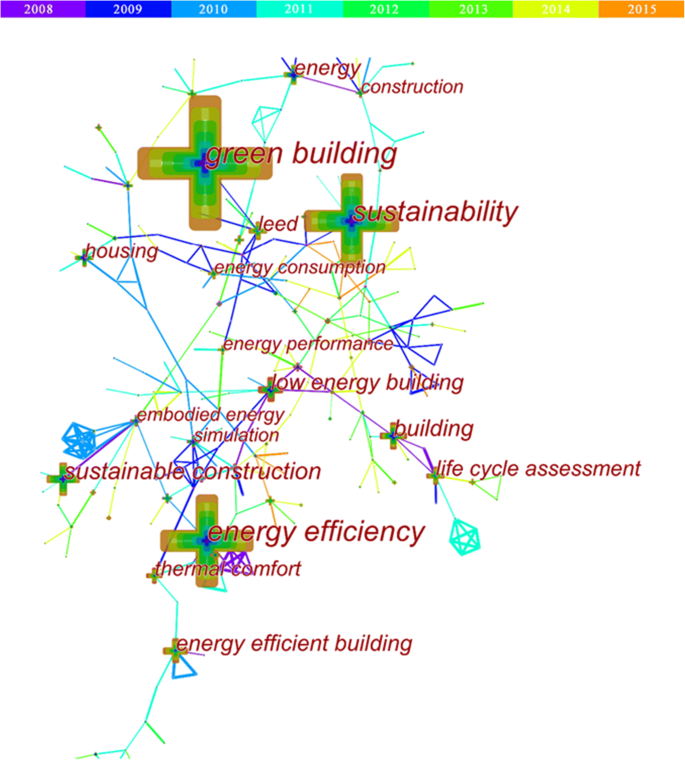
Co-word analysis from 2008–2015
The life cycle assessment (LCA) is a popular technique for the analysis of the technical side of GBs. LCA was developed from environmental assessment and economic analysis which could be a useful method to evaluate building energy efficiency from production and use to end-use (Chwieduk 2003 ). Much attention has been paid to LCA because people began to focus more on the actual performance of the GBs. Essentially, LCA simplifies buildings into systems, monitoring, and calculating mass flow and energy consumption over different stages in their life cycle.
Leadership in Energy and Environmental Design (LEED) was founded by the USGBC and began in the early twenty-first century (Doan et al. 2017 ). LEED is a not-for-profit project based on consumer demand and consensus that offers an impartial GB certification. LEED is the preferred building rating tool globally, with its shares growing rapidly. Meanwhile, UK’s Building Research Establishment Assessment Method (BREEAM) and Japan’s Comprehensive Assessment System for Building Environmental Efficiency (CASBEE) have been in use since the beginning of the twenty-first century, while New Zealand’s Green Star is still in its earlier stages. GBs around the world are made to suit regional climate concerns and need.
In practice, not all certified green buildings are necessarily performing well. Newsham et al. ( 2009 ) gathered energy-use information from 100 LEED-certified non-residential buildings. Results indicated that 28–35% of LEED structures actually consumed higher amounts of energy than the non-LEED structures. There was little connection in its actual energy consumption to its certification grade, meaning that further improvements are required for establishing a comprehensive GB rating metric to ensure consistent performance standards.
Thermal comfort was related to many aspects, such as materials, design scheme, monitoring system, and human behaviors. Materials have been a focus area for improving thermal comfort and reducing energy consumption. Wall (Schossig et al. 2005 ), floor (Ansuini et al. 2011 ), ceiling (Hu et al. 2018 ), window, and shading structures (Shen and Li 2016 ) were building envelopes which had been paid attention to over the years. Windows were important envelopes to improve thermal comfort. For existing and new buildings, rational use of windows and shading structures can enhance the ambient conditions of buildings (Mcleod et al. 2013 ). It was found that redesigning windows could reduce the air temperature by 2.5% (Elshafei et al. 2017 ), thus improving thermal comfort through passive features and reducing the use of active air conditioners (Perez-Fargallo et al. 2018 ). The monitoring of air conditioners’ performance could also prevent overheating of buildings (Ruellan and Park 2016 ).
Differentiation phase (2016–2018)
In the years from 2016 to 2018 (Fig. 13 ), “green building,” ”sustainability,” and “energy efficiency” were still the top three hotspots in GB research.
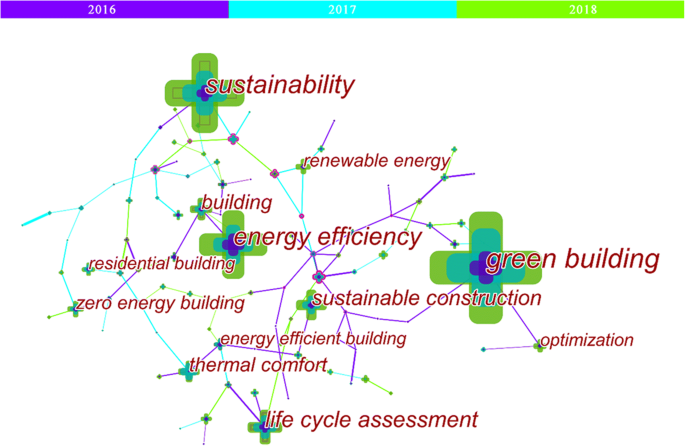
Co-word analysis from 2016–2018
Zero-energy building (ZEB) became a substitute for low energy building in this stage. ZEB was first introduced in 2000 (Cao et al. 2016 ) and was believed to be the solution to the potential ramifications of future energy consumption by buildings (Liu et al. 2019 ). The EU has been using ZEB standards in all of its new building development projects to date (Communuties 2002 ). The USA passed the Energy Independence and Security Act of 2007, aiming for zero net energy consumption of 1 out of every 2 commercial buildings that are yet to be built by 2040 and for all by 2050 (Sartori et al. 2012 ). Energy consumption became the most important factor in new building construction.
Renewable energy was a key element of sustainable development for mankind and nature (Zhang et al. 2013 ). Using renewable energy was an important feature of ZEBs (Cao et al. 2016 ; Pulselli et al. 2007 ). Renewable energy, in the form of solar, wind, geothermal, clean bioenergy, and marine can be used in GBs. Solar energy has been widely used in recent years while wind energy is used locally because of its randomness and unpredictable features. Geothermal energy is mainly utilized by ground source heat pump (GSHP), which has been lauded as a powerful energy system for buildings (Cao et al. 2016 ). Bioenergy has gained much popularity as an alternative source of energy around the globe because it is more stable and accessible than other forms of energy (Zhang et al. 2015 ). There is relatively little use of marine energy, yet this may potentially change depending on future technological developments (Ellabban et al. 2014 ).
Residential buildings receive more attention because people spend 90% of their time inside. Contrary to popular belief, the concentration of contaminants found indoors is more than the concentration outside, sometimes up to 10 times or even 100 times more (agency). The renovation of existing buildings can save energy, upgrade thermal comfort, and improve people’s living conditions.
Energy is a substantial and widely recognized cost of building operations that can be reduced through energy-saving and green building design. Nevertheless, a consensus has been reached by academics and those in building-related fields that GBs are significantly more energy efficient than traditional buildings if designed, constructed, and operated with meticulousness (Wuni et al. 2019b ). The drive to reduce energy consumption from buildings has acted as a catalyst in developing new technologies.
Compared with the article analysis, patents can better reflect the practical technological application to a certain extent. We extracted the information of green building energy-related patent records between 1998 and 2018 from the Derwent Innovations Index database. The development of a technique follows a path: precursor–invention–development–maturity. This is commonly known as an S-type growth (Mao et al. 2018 ). Two thousand six hundred thirty-eight patents were found which were classified into “Derwent Manual Code,” which is the most distinct feature just like “keywords” in the Derwent Innovations Index. Manual codes refer to specific inventions, technological innovations, and unique codes for their applications. According to the top 20 Derwent Manual Code which accounted for more than 80% of the total patents, we classified the hotspots patents into three fields for further S-curve analysis, which are “structure,” “material,” and “energy systems” (Table 3 ).
Sustainable structural design (SSD) has gained a lot of research attention from 2006 to 2016 (Pongiglione and Calderini 2016 ). The S-curve of structure* (Fig. 14 ) has just entered the later period of the growth stage, accounting for 50% of the total saturation in 2018. Due to its effectiveness and impact, SSD has overtime gained recognition and is now considered by experts to be a prominent tool in attaining sustainability goals (Pongiglione and Calderini 2016 ).
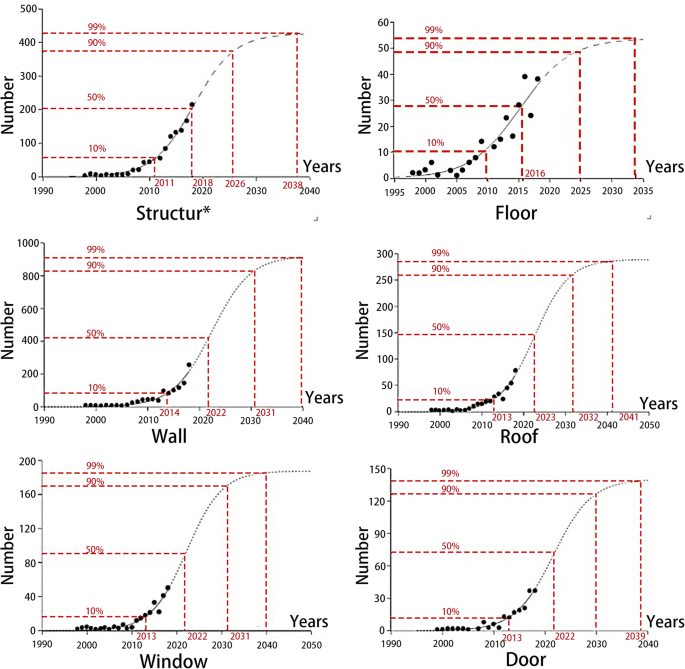
The S-curves of different Structure types from patents
Passive design is important in energy saving which is achieved by appropriately orientating buildings and carefully designing the building envelope. Building envelopes, which are key parts of the energy exchange between the building and the external environment, include walls, roofs, windows, and floors. The EU increased the efficiency of its heat-regulating systems by revamping building envelopes as a primary energy-saving task during 2006 to 2016 (Cao et al. 2016 ).
We analyzed the building envelope separately. According to the S-curve (Fig. 14 ), the number of patents related to GB envelops are in the growth stage. At present, building envelops such as walls, roofs, windows, and even doors have not reached 50% of the saturated quantity. Walls and roofs are two of the most important building envelops. The patent contents of walls mainly include wall materials and manufacturing methods, modular wall components, and wall coatings while technologies about roofs mainly focus on roof materials, the combination of roof and solar energy, and roof structures. Green roofs are relatively new sustainable construction systems because of its esthetic and environmental benefits (Wei et al. 2015 ).
The material resources used in the building industry consume massive quantities of natural and energy resources consumptions (Wang et al. 2018 ). The energy-saving building material is economical and environmentally friendly, has low coefficient heat conductivity, fast curing speed, high production efficacy, wide raw material source and flame, and wear resistance properties (Zhang et al. 2014 ). Honeycomb structures were used for insulating sustainable buildings. They are lightweight and conserve energy making them eco-friendly and ideal for construction (Miao et al. 2011 ).
According to the S-curve (Fig. 15 ), it can be seen that the number of patents on the GB “material” is in the growth stage. It is expected that the number of patents will reach 50% of the total saturation in 2022.
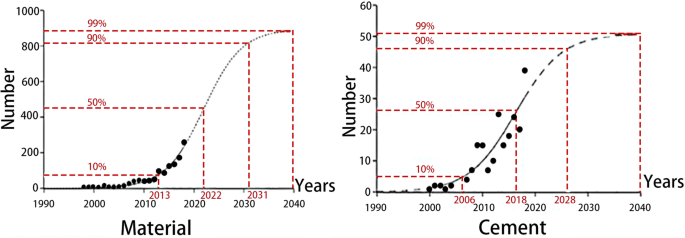
The S-curves of a different material from patents
Building material popularly used comprised of cement, concrete, gypsum, mortar compositions, and boards. Cement is widely used in building material because of its easy availability, strong hardness, excellent waterproof and fireproof performance, and low cost. The S-curve of cement is in the later period of the growth stage, which will reach 90% of the total saturation in 2028. Composite materials like Bamcrete (bamboo-concrete composite) and natural local materials like Rammed Earth had better thermal performance compared with energy-intensive materials like bricks and cement (Kandya and Mohan 2018 ). Novel bricks synthesized from fly ash and coal gangue have better advantages of energy saving in brick production phases compared with that of conventional types of bricks (Zhang et al. 2014 ). For other materials like gypsum or mortar, the numbers of patents are not enough for S-curve analysis. New-type green building materials offer an alternative way to realize energy-saving for sustainable constructions.
Energy system
The energy system mainly included a heating system and ventilation system according to the patent analysis. So, we analyzed solar power systems and air conditioning systems separately. Heat* included heat collecting panels and a fluid heating system.
The results indicated that heat*-, solar-, and ventilation-related technologies were in the growth stage which would reach 50% of the total saturation in 2022 (Fig. 16 ). Photovoltaic technology is of great importance in solar energy application (Khan and Arsalan 2016 ).
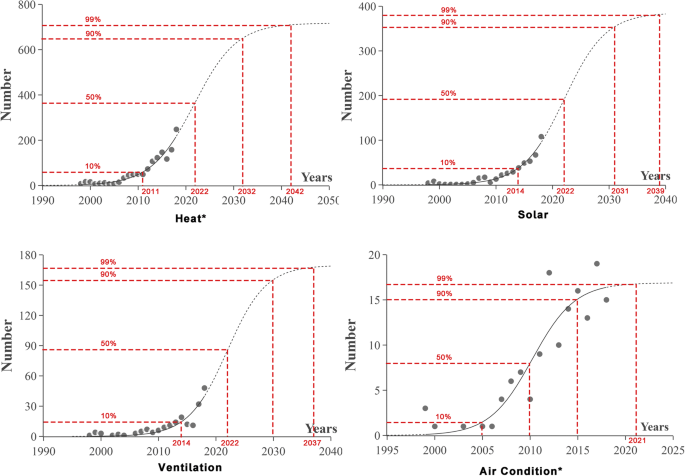
The S-curves of energy systems from patents
On the contrary, air conditioning technologies had entered into the mature stage after a decade of development. It is worth mentioning that the design of the fresh air system of buildings after the COVID-19 outbreak is much more important. With people spending the majority of their time inside (Liu et al. 2019 ), volatile organic compounds, formaldehyde, and carbon dioxide received the most attention worldwide (Wei et al. 2015 ). Due to health problems like sick building syndrome, and more recently since the COVID-19 outbreak, the supply of fresh air can drastically ameliorate indoor air quality (IAQ) (Liu et al. 2019 ). Regulating emissions from materials, enhanced ventilation, and monitoring air indoors are the main methods used in GBs for maintaining IAQ (Wei et al. 2015 ). Air circulation frequency and improved air filtration can reduce the risk of spreading certain diseases, while controlling the airflow between rooms can also prevent cross-infections. Poor indoor air quality and ventilation provide ideal conditions for the breeding and spreading of viruses by air (Chen et al. 2019 ). A diverse range of air filters coupled with a fresh air supply system should be studied. A crucial step forward is to create a cost-effective, energy-efficient, intelligent fresh air supply system (Liu et al. 2017 ) to monitor, filter outdoor PM2.5 (Chen et al. 2017 ), and saving building energy (Liu and Liu 2005 ). Earth-air heat exchanger system (EAHE) is a novel technology that supplies fresh air using underground soil heat (Chen et al. 2019 ).
A total of 5246 journal articles in English from the SCI and SSCI databases published in 1998–2018 were reviewed and analyzed. The study revealed that the literature on green buildings has grown rapidly over the past 20 years. The findings and results are summarized:
Data analysis revealed that GB research is distributed across various subject categories. Energy and Buildings, Building and Environment, Journal of Cleaner Production, and Sustainability were the top journals to publish papers on green buildings.
Global distribution was done to see the green building study worldwide, showing that the USA, China, and the UK ranked the top three countries, accounting for 14.98%, 13.29%, and 8.27% of all the publications respectively. Australia and China had the closest relationship on green building research cooperation worldwide.
Further analysis was made on countries’ characteristics, dominant issues through keyword co-occurrence, green building technology by patent analysis, and S-curve prediction. Global trends of the top 5 countries showed different characteristics. China had a steady and consistent growth in publications each year while the USA, the UK, and Italy were on a decline from 2016. The big data method was used to see the city performance in China, finding that the total publications had a high correlation with the city’s GDP and Baidu Search Index. Policies were regarded as the stimulation for green building development, either in China or the UK. Also, barriers and contradictions such as cost, occupants’ comfort, and energy consumption were discussed about the developed and developing countries.
Cluster and content analysis via CiteSpace identified popular and trending research topics at different stages of development; the top three hotspots were green buildings, sustainability, and energy efficiency throughout the whole research period. Energy efficiency has shifted from low to zero energy buildings or even beyond it in recent years. Energy efficiency was the most important drive to achieve green buildings while LCA and LEED were the two potential ways to evaluate building performance. Thermal comfort and natural ventilation of residential buildings became a topic of interest to the public.
Then, we combined the keywords with “energy” to make further patent analysis in Derwent Innovations Index. “Structure,” “material,” and “energy systems” were three of the most important types of green building technologies. According to S-curve analysis, most of the technologies of energy-saving buildings were on the fast-growing trend, and even though there were conflicts and doubts in different countries on GB adoption, it is still a promising field.
Future directions
An establishment of professional institutes or a series of policies and regulations on green building promulgated by government departments will promote research development (as described in the “Further Analysis on China, the USA, and the UK” section). Thus, a policy enacted by a formal department is of great importance in this particular field.
Passive design is important in energy saving which is ensured by strategically positioning buildings and precisely engineering the building envelope, i.e., roof, walls, windows, and floors. A quality, the passive-design house is crucial to achieving sustained thermal comfort, low-carbon footprint, and a reduced gas bill. The new insulation material is a promising field for reducing building heat loss and energy consumed. Healthy residential buildings have become a focus of future development due to people’s pursuit of a healthy life. A fresh air supply system is important for better indoor air quality and reduces the risk of transmission of several diseases. A 2020 study showed the COVID-19 virus remains viable for only 4 hours on copper compared to 24 h on cardboard. So, antiviral materials will be further studied for healthy buildings (Fezi 2020 ).
With the quick development of big data method and intelligent algorithms, artificial intelligence (AI) green buildings will be a trend. The core purpose of AI buildings is to achieve optimal operating conditions through the accurate analysis of data, collected by sensors built into green buildings. “Smart buildings” and “Connected Buildings” of the future, fitted with meters and sensors, can collect and share massive amounts of information regarding energy use, water use, indoor air quality, etc. Analyzing this data can determine relationships and patterns, and optimize the operation of buildings to save energy without compromising the quality of the indoor environment (Lazarova-Molnar and Mohamed 2019 ).
The major components of green buildings, such as building envelope, windows, and skylines, should be adjustable and versatile in order to get full use of AI. A digital control system can give self-awareness to buildings, adjusting room temperature, indoor air quality, and air cooling/heating conditions to control power consumption, and make it sustainable (Mehmood et al. 2019 ).
Concerns do exist, for example, occupant privacy, data security, robustness of design, and modeling of the AI building (Maasoumy and Sangiovanni-Vincentelli 2016 ). However, with increased data sources and highly adaptable infrastructure, AI green buildings are the future.
This examination of research conducted on green buildings between the years 1998 and 2018, through bibliometric analysis combined with other useful tools, offers a quantitative representation of studies and data conducted in the past and present, bridging historical gaps and forecasting the future of green buildings—providing valuable insight for academicians, researchers, and policy-makers alike.
Agency USEP Indoor Air Quality https://www.epa.gov/indoor-air-quality-iaq.
Ansuini R, Larghetti R, Giretti A, Lemma M (2011) Radiant floors integrated with PCM for indoor temperature control. Energy Build 43:3019–3026. https://doi.org/10.1016/j.enbuild.2011.07.018
Article Google Scholar
Bengisu M, Nekhili R (2006) Forecasting emerging technologies with the aid of science and technology databases. Technol Forecast Soc Chang 73:835–844. https://doi.org/10.1016/j.techfore.2005.09.001
Bozeman B, Fay D, Slade CP (2013) Research collaboration in universities and academic entrepreneurship: the-state-of-the-art. J Technol Transf 38:1–67. https://doi.org/10.1007/s10961-012-9281-8
Building AG Importance of Green Building. https://www.greenbuilt.org/about/importance-of-green-building
Cao XD, Dai XL, Liu JJ (2016) Building energy-consumption status worldwide and the state-of-the-art technologies for zero-energy buildings during the past decade. Energy Build 128:198–213. https://doi.org/10.1016/j.enbuild.2016.06.089
Chan APC, Darko A, Olanipekun AO, Ameyaw EE (2018) Critical barriers to green building technologies adoption in developing countries: the case of Ghana. J Clean Prod 172:1067–1079. https://doi.org/10.1016/j.jclepro.2017.10.235
Chen CC, Lo TH, Tsay YS, Lee CY, Liu KS (2017) Application of a novel formaldehyde sensor with MEMS (micro electro mechanical systems) in indoor air quality test and improvement in medical spaces. Appl Ecol Environ Res 15:81–89. https://doi.org/10.15666/aeer/1502_081089
Chen CM (2006) CiteSpace II: detecting and visualizing emerging trends and transient patterns in scientific literature. J Am Soc Inf Sci Technol 57:359–377. https://doi.org/10.1002/asi.20317
Chen X, Lu WS, Xue F, Xu JY (2018) A cost-benefit analysis of green buildings with respect to construction waste minimization using big data in Hong Kong. J Green Build 13:61–76. https://doi.org/10.3992/1943-4618.13.4.61
Chen XY, Niu RP, Lv LN, Kuang DQ, LOP (2019) Discussion on existing problems of fresh air system. In: 4th International Conference on Advances in Energy Resources and Environment Engineering, vol 237. IOP Conference Series-Earth and Environmental Science. Iop Publishing Ltd, Bristol. doi: https://doi.org/10.1088/1755-1315/237/4/042030
Chwieduk D (2003) Towards sustainable-energy buildings. Appl Energy 76:211–217. https://doi.org/10.1016/s0306-2619(03)00059-x
Communuties CotE (2002) Directive of the European parliament and the council.
Daim TU, Rueda G, Martin H, Gerdsri P (2006) Forecasting emerging technologies: use of bibliometrics and patent analysis. Technol Forecast Soc Chang 73:981–1012. https://doi.org/10.1016/j.techfore.2006.04.004
Ding GKC (2008) Sustainable construction - the role of environmental assessment tools. J Environ Manag 86:451–464. https://doi.org/10.1016/j.jenvman.2006.12.025
Doan DT, Ghaffarianhoseini A, Naismith N, Zhang TR, Ghaffarianhoseini A, Tookey J (2017) A critical comparison of green building rating systems. Build Environ 123:243–260. https://doi.org/10.1016/j.buildenv.2017.07.007
Du HB, Li BL, Brown MA, Mao GZ, Rameezdeen R, Chen H (2015) Expanding and shifting trends in carbon market research: a quantitative bibliometric study. J Clean Prod 103:104–111. https://doi.org/10.1016/j.jclepro.2014.05.094
Du HB, Liu DY, Lu ZM, Crittenden J, Mao GZ, Wang S, Zou HY (2019) Research development on sustainable urban infrastructure from 1991 to 2017: a bibliometric analysis to inform future innovations. Earth Future 7:718–733. https://doi.org/10.1029/2018ef001117
Ellabban O, Abu-Rub H, Blaabjerg F (2014) Renewable energy resources: current status, future prospects and their enabling technology. Renew Sust Energ Rev 39:748–764. https://doi.org/10.1016/j.rser.2014.07.113
Elshafei G, Negm A, Bady M, Suzuki M, Ibrahim MG (2017) Numerical and experimental investigations of the impacts of window parameters on indoor natural ventilation in a residential building. Energy Build 141:321–332. https://doi.org/10.1016/j.enbuild.2017.02.055
Ernst H (1997) The use of patent data for technological forecasting: the diffusion of CNC-technology in the machine tool industry. Small Bus Econ 9:361–381. https://doi.org/10.1023/A:1007921808138
Fezi BA (2020) Health engaged architecture in the context of COVID-19. J Green Build 15:185–212
Guozhu et al (2018) Bibliometric analysis of insights into soil remediation. J Soils Sediments 18:2520–2534
Ho S-Y (2008) Bibliometric analysis of biosorption technology in water treatment research from 1991 to 2004. Int J Environ Pollut 34:1–13. https://doi.org/10.1504/ijep.2008.020778
Article CAS Google Scholar
Hong WX, Jiang ZY, Yang Z, (2017) Iop (2017) Analysis on the restriction factors of the green building scale promotion based on DEMATEL. In: 2nd International Conference on Advances in Energy Resources and Environment Engineering, vol 59. IOP Conference Series-Earth and Environmental Science. Iop Publishing Ltd, Bristol. doi: https://doi.org/10.1088/1755-1315/59/1/012064
Hu J, Kawaguchi KI, Ma JJB (2018) Retractable membrane ceiling on indoor thermal environment of residential buildings. Build Environ 146:289–298. https://doi.org/10.1016/j.buildenv.2018.09.035
Huang N, Bai LB, Wang HL, Du Q, Shao L, Li JT (2018) Social network analysis of factors influencing green building development in China. Int J Environ Res Public Health 15:16. https://doi.org/10.3390/ijerph15122684
Huibin D, Guozhu M, Xi L, Jian Z, Linyuan W (2015) Way forward for alternative energy research: a bibliometric analysis during 1994-2013. Sustain Energy Rev 48:276–286
Jalaei F, Jrade A (2015) Integrating building information modeling (BIM) and LEED system at the conceptual design stage of sustainable buildings. Sustain Cities Soc 18(95-10718):95–107. https://doi.org/10.1016/j.scs.2015.06.007
Kandya A, Mohan M (2018) Mitigating the urban heat island effect through building envelope modifications. Energy Build 164:266–277. https://doi.org/10.1016/j.enbuild.2018.01.014
Khan J, Arsalan MH (2016) Solar power technologies for sustainable electricity generation - a review. Renew Sust Energ Rev 55:414–425. https://doi.org/10.1016/j.rser.2015.10.135
Khoshbakht et al (2018) Are green buildings more satisfactory? A review of global evidence. Habitat Int 74:57–65
Lazarova-Molnar S, Mohamed N (2019) Collaborative data analytics for smart buildings: opportunities and models. Clust Comput 22:1065–1077. https://doi.org/10.1007/s10586-017-1362-x
Li X, Wu P, Shen GQ, Wang X, Teng Y (2017) Mapping the knowledge domains of building information modeling (BIM): a bibliometric approach. Autom Constr 84:195–206. https://doi.org/10.1016/j.autcon.2017.09.011
Liu CY, Wang JC (2010) Forecasting the development of the biped robot walking technique in Japan through S-curve model analysis. Scientometrics 82:21–36
Liu GL et al (2017) A review of air filtration technologies for sustainable and healthy building ventilation. Sustain Cities Soc 32:375–396. https://doi.org/10.1016/j.scs.2017.04.011
Liu J, Liu GQ (2005) Some indoor air quality problems and measures to control them in China Indoor. Built Environ 14:75–81. https://doi.org/10.1177/1420326x05050362
Liu ZB, Li WJ, Chen YZ, Luo YQ, Zhang L (2019) Review of energy conservation technologies for fresh air supply in zero energy buildings. Appl Therm Eng 148:544–556. https://doi.org/10.1016/j.applthermaleng.2018.11.085
Liu ZJ, Pyplacz P, Ermakova M, Konev P (2020) Sustainable construction as a competitive advantage. Sustainability 12:13. https://doi.org/10.3390/su12155946
Maasoumy M, Sangiovanni-Vincentelli A (2016) Smart connected buildings design automation: foundations and trends found trends. Electron Des Autom 10:1–3. https://doi.org/10.1561/1000000043
Mao G, Zou H, Chen G, Du H, Zuo J (2015) Past, current and future of biomass energy research: a bibliometric analysis. Sustain Energy Rev 52:1823–1833. https://doi.org/10.1016/j.rser.2015.07.141
Mao GZ, Shi TT, Zhang S, Crittenden J, Guo SY, Du HB (2018) Bibliometric analysis of insights into soil remediation. J Soils Sediments 18:2520–2534. https://doi.org/10.1007/s11368-018-1932-4
Marinakis V (2020) Big data for energy management and energy-efficient buildings. Energies 13:18. https://doi.org/10.3390/en13071555
McArthur JJ, Powell C (2020) Health and wellness in commercial buildings: systematic review of sustainable building rating systems and alignment with contemporary research. Build Environ 171:18. https://doi.org/10.1016/j.buildenv.2019.106635
Mcleod RS, Hopfe CJ, Kwan A (2013) An investigation into future performance and overheating risks in Passivhaus dwellings. Build Environ 70:189–209
Mclinden D (2013) Concept maps as network data: analysis of a concept map using the methods of social network analysis. Eval Program Plann 36:40–48
Mehmood MU, Chun D, Zeeshan, Han H, Jeon G, Chen K (2019) A review of the applications of artificial intelligence and big data to buildings for energy-efficiency and a comfortable indoor living environment. Energy Build 202:13. https://doi.org/10.1016/j.enbuild.2019.109383
Miao XL, Yao Y, Wang Y, Chu YP (2011) Experimental research on the sound insulation property of lightweight composite paper honeycomb core wallboard. In: Jiang ZY, Li SQ, Zeng JM, Liao XP, Yang DG (eds) Manufacturing Process Technology, Pts 1-5, vol 189-193. Advanced Materials Research. Trans Tech Publications Ltd, Stafa-Zurich, pp 1334–1339. https://doi.org/10.4028/www.scientific.net/AMR.189-193.1334
Chapter Google Scholar
Newsham GR, Mancini S, Energy BJ (2009) Do LEED-certified buildings save energy? Yes, but…. Energy Build 41:897–905
Nguyen HT, Skitmore M, Gray M, Zhang X, Olanipekun AO (2017) Will green building development take off? An exploratory study of barriers to green building in Vietnam. Resour Conserv Recycl 127:8–20
Paul WL, Taylor PA (2008) A comparison of occupant comfort and satisfaction between a green building and a conventional building. Build Environ 43:1858–1870
Perez-Fargallo A, Rubio-Bellido C, Pulido-Arcas JA, Gallego-Maya I, Guevara-Garcia FJ (2018) Influence of adaptive comfort models on energy improvement for housing in cold areas. Sustainability 10:15. https://doi.org/10.3390/su10030859
Pongiglione M, Calderini C (2016) Sustainable structural design: comprehensive literature review. J Struct Eng 142:15. https://doi.org/10.1061/(asce)st.1943-541x.0001621
Pouris A, Pouris A (2011) Scientometrics of a pandemic: HIV/AIDS research in South Africa and the World. Scientometrics 86:541–552
Pulselli RM, Simoncini E, Pulselli FM, Bastianoni S (2007) Emergy analysis of building manufacturing, maintenance and use: Em-building indices to evaluate housing sustainability. Energy Build 39:620–628
Ruellan M, Park H, Bennacer R (2016) Residential building energy demand and thermal comfort: thermal dynamics of electrical appliances and their impact. Energy Build 130:46–54. https://doi.org/10.1016/j.enbuild.2016.07.029
Sartori I, Napolitano A, Voss K (2012) Net zero energy buildings: a consistent definition framework. Energy Build 48:220–232. https://doi.org/10.1016/j.enbuild.2012.01.032
Schossig P, Henning HM, Gschwander S, Haussmann T (2005) Micro-encapsulated phase-change materials integrated into construction materials. Solar Energy Mater Solar Cells 89:297-306
Shen C, Li XT (2016) Solar heat gain reduction of double glazing window with cooling pipes embedded in venetian blinds by utilizing natural cooling. Energy Build 112:173–183. https://doi.org/10.1016/j.enbuild.2015.11.073
Shen L, Yan H, Fan H, Wu Y, Zhang Y (2017) An integrated system of text mining technique and case-based reasoning (TM-CBR) for supporting green building design. S0360132317303797. Build Environ 124:388–401
Todd JA, Crawley D, Geissler S, Lindsey G (2001) Comparative assessment of environmental performance tools and the role of the Green Building Challenge. Build Res Inf 29:324–335
Wang H, Chiang PC, Cai Y, Li C, Wang X, Chen TL, Wei S, Huang Q (2018) Application of wall and insulation materials on green building: a review. Sustainability 10:21. https://doi.org/10.3390/su10093331
Wang J, Liu Y, Ren J, Cho S, (2017) Iop (2017) A brief comparison of existing regional green building design standards in China. In: 2nd International Conference on Advances in Energy Resources and Environment Engineering, vol 59. IOP Conference Series-Earth and Environmental Science. Iop Publishing Ltd, Bristol. doi: https://doi.org/10.1088/1755-1315/59/1/012013
Wei WJ, Ramalho O, Mandin C (2015) Indoor air quality requirements in green building certifications. Build Environ 92:10–19. https://doi.org/10.1016/j.buildenv.2015.03.035
Wuni IY, Shen GQP, Osei-Kyei R (2019a) Scientometric review of global research trends on green buildings in construction journals from 1992 to 2018. Energy Build 190:69–85
Wuni IY, Shen GQP, Osei RO (2019b) Scientometric review of global research trends on green buildings in construction journals from 1992 to 2018 Energy Build 190:69-85 doi: https://doi.org/10.1016/j.enbuild.2019.02.010
Yang XD, Zhang JY, Zhao XB (2018) Factors affecting green residential building development: social network analysis. Sustainability 10:21. https://doi.org/10.3390/su10051389
Ye L, Cheng Z, Wang Q, Lin H, Lin C, Liu B (2015) Developments of Green Building Standards in China. Renew Energy 73:115–122
Ye Q, Li T, Law R (2013) A coauthorship network analysis of tourism and hospitality research collaboration. J Hosp Tour Res 37:51–76
Yoon B, Park Y (2004) A text-mining-based patent network: analytical tool for high-technology trend. J High Technol Manag Res 15:37–50
Yuan XL, Wang XJ, Zuo J (2013) Renewable energy in buildings in China-a review. Renew Sust Energ Rev 24:1–8. https://doi.org/10.1016/j.rser.2013.03.022
Zhang HT, Hu D, Wang RS, Zhang Y (2014) Urban energy saving and carbon reduction potential of new-types of building materials by recycling coal mining wastes. Environ Eng Manag J 13:135–144
Zhang HZ, Li H, Huang BR, Destech Publicat I (2015) Development of biogas industry in Beijing. 2015 4th International Conference on Energy and Environmental Protection. Destech Publications, Inc, Lancaster
Zhang SF, Andrews-Speed P, Zhao XL, He YX (2013) Interactions between renewable energy policy and renewable energy industrial policy: a critical analysis of China’s policy approach to renewable energies. Energy Policy 62:342–353. https://doi.org/10.1016/j.enpol.2013.07.063
Zhang Y, Huang K, Yu YJ, Yang BB (2017) Mapping of water footprint research: a bibliometric analysis during 2006-2015. J Clean Prod 149:70–79. https://doi.org/10.1016/j.jclepro.2017.02.067
Zhang Y, Kang J, Jin H (2018) A review of Green Building Development in China from the perspective of energy saving. Energies 11:18. https://doi.org/10.3390/en11020334
Zhao XB, Zuo J, Wu GD, Huang C (2019) A bibliometric review of green building research 2000-2016. Archit Sci Rev 62:74–88. https://doi.org/10.1080/00038628.2018.1485548
Zuo J, Zhao ZY (2014) Green building research-current status and future agenda: a review. Renew Sust Energ Rev 30:271–281. https://doi.org/10.1016/j.rser.2013.10.021
Download references
Availability of data and materials
The datasets generated and analyzed throughout the current study are available in the Web of Science Core Collection.
This study was supported by The National Natural Science Foundation of China (No.51808385).
Author information
Authors and affiliations.
School of Environmental Science and Engineering, Tianjin University, No. 135 Yaguan Road, Tianjin, 300350, China
Li Ying, Rong Yanyu, Umme Marium Ahmad, Wang Xiaotong & Mao Guozhu
Tianjin University Research Institute of Architectural Design and Urban Planning Co., Ltd, Tianjin, 300072, China
Center for Green Buildings and Sponge Cities, Georgia Tech Tianjin University Shenzhen Institute, Shenzhen, 518071, Guangdong, China
Rong Yanyu, Wang Xiaotong & Mao Guozhu
School of Architecture & Built Environment, The University of Adelaide, Adelaide, Australia
You can also search for this author in PubMed Google Scholar
Contributions
Ying Li conceived the frame of the paper and wrote the manuscript. Yanyu Rong made the data figures and participated in writing the manuscript. Umme Marium Ahmad helped with revising the language. Xiaotong Wang consulted related literature for the manuscript. Jian Zuo contributed significantly to provide the keywords list. Guozhu Mao helped with constructive suggestions.
Corresponding author
Correspondence to Rong Yanyu .
Ethics declarations
Ethics approval and consent to participate.
This manuscript is ethical.
Consent for publication
Not applicable.
Competing interest
The authors declare no competing interest.
Additional information
Responsible Editor: Philippe Garrigues
Publisher’s Note
Springer Nature remains neutral with regard to jurisdictional claims in published maps and institutional affiliations.
Supplementary Information
(DOCX 176 kb)
(From Web of Science Core Collection)
Topic: (“bioclimatic architect*” or “bioclimatic build*” or “bioclimatic construct*” or “bioclimatic hous*” or “eco-architect*” or “eco-build*” or “eco-home*” or “eco-hous*” or “eco-friendly build*” or “ecological architect*” or “ecological build*” or “ecological hous*” or “energy efficient architect*” or “energy efficient build*” or “energy efficient construct*” or “energy efficient home*” or “energy efficient hous*” or “energy efficient struct*” or “energy saving architect*” or “energy saving build*” or “energy saving construct*” or “energy saving home*” or “energy saving hous*” or “energy saving struct*” or “green architect*” or “green build*” or “green construct*” or “green home*” or “low carbon architect*” or “low carbon build*” or “low carbon construct*” or “low carbon home*” or “low carbon hous*” or “low energy architect*” or “low energy build*” or “low energy construct*” or “low energy home*” or “low energy hous*” or “sustainable architect*” or “sustainable build*” or “sustainable construct*” or “sustainable home*” or “sustainable hous*” or “zero energy build*” or “zero energy home*” or “zero energy hous*” or “net zero energy build*” or “net zero energy home*” or “net zero energy hous*” or “zero-carbon build*” or “zero-carbon home*” or “zero-carbon hous*” or “carbon neutral build*” or “carbon neutral construct*” or “carbon neutral hous*” or “high performance architect*” or “high performance build*” or “high performance construct*” or “high performance home*” or “high performance hous*”)
Time span: 1998-2018。 Index: SCI-EXPANDED, SSCI。
Rights and permissions
Reprints and permissions
About this article
Li, Y., Rong, Y., Ahmad, U.M. et al. A comprehensive review on green buildings research: bibliometric analysis during 1998–2018. Environ Sci Pollut Res 28 , 46196–46214 (2021). https://doi.org/10.1007/s11356-021-12739-7
Download citation
Received : 18 October 2020
Accepted : 26 January 2021
Published : 16 February 2021
Issue Date : September 2021
DOI : https://doi.org/10.1007/s11356-021-12739-7
Share this article
Anyone you share the following link with will be able to read this content:
Sorry, a shareable link is not currently available for this article.
Provided by the Springer Nature SharedIt content-sharing initiative
- Green buildings
- Bibliometric analysis
- Energy efficiency
- Find a journal
- Publish with us
- Track your research
- Locations and Hours
- UCLA Library
- Research Guides
Architecture and Urban Design
- Sustainable Architecture
- Researching Architects
- Researching Buildings
- Encyclopedias, Dictionaries and Architectural Styles
- Design Manuals, Standards and Building Types
- Educational and Professional Practice
- Article Indexes and Databases
- New Image Content - Archivision Library (JSTOR Images)
- Newspapers and News Sources
- Dissertations and Theses
- Architectural History
- Architectural Photography
- Building Envelopes and Wall Assemblies
- Building Materials
- Codes and Regulations
- Construction and Fabrication
- Digital Mapping and Visualizations
- Portfolios and Model Making
- Professional Practice and Licensing
- Specifying and Estimating
- Theory and Criticism
- Understanding Drawings and Plans
- Urban Design
- Film and Video Collections
- Architecture and Urban Design Research at UCLA
- Archives and Special Collections at UCLA
- Arts Library Browsing Guide
- Blogs and Podcasts
Sustainable Architecture Resources
- Recommended Books
- Selected Online Journals
- Recommended websites and web-tools
- Relevant Subject Headings
- GreenSource : the magazine of sustainable design Selected Online Access
- Journal of engineering for sustainable buildings and cities Online Access
- Journal of green building Online Access
- BRE Sustainability Links to sustainable products and materials and more.
- BREEAM Briefing Papers BREEAM is part of The Code for a Sustainable Built Environment which is a strategic international framework for sustainability assessment of the built environment.
- Sustainable Design Resources: Case Studies & Sources A research guide prepared by the UC Berkeley Environmental Design Library
Search the UCLA Library Catalog under the following Subject Headings to locate additional sources:
- Architecture and climate
- Architecture and energy conservation
- Architecture and energy conservation -- United States
- Architecture -- Environmental aspects
- Building -- Environmental aspects
- Buildings -- Energy conservation
- City planning -- Environmental aspects
- Ecological houses
- Ecological landscape design
- Energy consumption --Environmental aspects
- Housing --Energy conservation
- Materials --Environmental aspects
- New towns --Environmental aspects
- Planned communities --Environmental aspects
- Sustainable architecture
- Sustainable buildings --Design and construction
- Sustainable construction
- Sustainable design
- Sustainable development--Environmental aspects
- Sustainable living
- Sustainable urban development
- Urban density
- << Previous: Specifying and Estimating
- Next: Theory and Criticism >>
- Last Updated: May 15, 2024 11:22 AM
- URL: https://guides.library.ucla.edu/architecture
MIT Libraries home DSpace@MIT
- DSpace@MIT Home
- MIT Libraries
- Graduate Theses
Sustainability in architecture
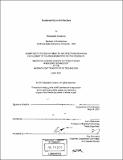
Other Contributors
Terms of use, description, date issued, collections.
Excellent Dissertation Topics in Architecture
Table of contents
- 1 Eco-Friendly Architecture Dissertation Topics
- 2 Architecture Dissertation Topics in Risk Management
- 3 Landscape Architecture Dissertation Topics
- 4 Architecture Dissertation Topics for Urban Planning and Transport
- 5 Interesting Architecture Dissertation Topics
- 6 Research Topics in Modern Design
- 7 Sustainable Architecture Topics
- 8 Trending Topics in Landscape Design
With this in mind, it’s vital that you stick to your field of study and the topics that are within it. If you’re clueless as to what to talk about, you can always go online and see what other people have to say and what they’re writing about; this could give you a heads-up on what’s to come. If, for example, you study architecture, there are many things that you could address in your final document.
The structures for buildings around the world change with the years and come from many different styles that have very different meanings because of the cultures in which they were created within. This gives you an endless list of possibilities to talk about. There really are no limits when it comes to writing about architecture.
You could discuss the never-ending debate regarding whether old buildings should be preserved or not. All you’ll have to do is provide your idea and opinion based on a series of research that you’ll need to do prior to writing your final draft. A dissertation paper isn’t something that you do in one day; this document requires months and months of hard, tedious work, where you have to read a lot and work on your citation formats and turn in various pieces of work that others will revise and provide feedback for you to adjust and have the cycle repeat itself endless times.
When you’re faced with the task of writing your dissertation for your Ph.D , the most important factor to consider is the topic. If you need inspiration, take a look at the list of topics below, which were popular choices among other students. You can also buy case study online to get an in-depth look at a particular subject. Whichever route you choose, make sure to pick a topic that interests you. If you still have no idea of what to talk about, you can take a look at the list below, which will provide you with a series of topics that other students have been talking about throughout the years, and they are still popular. If you still have no idea of what to talk about, you can take a look at the list below, which will provide you with a series of topics that other students have been talking about throughout the years, and they are still popular.
Eco-Friendly Architecture Dissertation Topics
These architecture dissertation topics are more than just popular, and we have a list of dissertation topics in architecture that will make any task you have on mind easier. At the same time, we will partially be focused on waste management, recycling spaces, and renewable energy, which are all related here. Let’s check the best architecture thesis topics right now.
- Eco-friendly neighborhood development
- Making more urban parks
- Best eco-friendly community garden design
- Old building eco-restoration
- Proper waste management
- Fast and cheap riverfront development
- Making the most advanced SMART village
- Completely sustainable building idea
- What is regenerative design?
- What is an urban agriculture center?
Architecture Dissertation Topics in Risk Management
It is important for all architecture students to have a good understanding of dissertation topics in architecture, as it is an essential field. This list of topics will be a great help when researching, and with the help of professional thesis writers, you can even pay for thesis writing to get the best results. With this assistance, you can be sure to get the best quality dissertation that will impress your peers.
Here we have a list of dissertation topics in architecture that are mandatory to know, and you will probably see a lot of architecture dissertation topics from this group. We can add that it is an essential field of architecture and one all students need to know more about.
- Best practices for making safety better
- How to avoid future water pollution?
- Managing risks of high-end infrastructures
- Limits of computer simulation
- Benefits of risk computer simulations
- Pros of low-cost and high-strength buildings
- Cons of low-cost and high-strength buildings
- New methods for decreasing risk in architecture
- Common risk mistakes new workers make
- Using virtual reality to test the risk
Need help with dissertation writing? Get your paper written by a professional writer Get Help Reviews.io 4.9/5
Landscape Architecture Dissertation Topics
You may need to focus on one of these when it comes to proper dissertation writing. Each dissertation topic here is a bit special, and each dissertation topic is something you will need to invest a lot of research in and then make presentable. Let’s see the best topics of this type.
- Processing data on food, water, and energy in the real-time
- Benefits of offshore wind energy projects
- Using landscape to make architecture self-sustainable
- Evolution on current energy landscape models
- Food access for locals in large cities
- Shaping the landscape to suit people more
- Making landscape more suitable for people with disabilities
- Using rainwater design in a modern city
- Adaptive reuse of a river park
- Adapting building design to the specific landscape
Architecture Dissertation Topics for Urban Planning and Transport
The field of architecture we have here is a bit special but more important than ever before. Now you can see the topics that will help you and the ones that can make any process of this kind even better and definitely easier.
- Low-cost homes and low-cost transport
- Should we make more skyscrapers?
- Suburban communities and transporting issues
- Benefits of developing a marine park
- Is transport suitable for modern cities?
- How transport can be improved in multi-million cities
- Incorporating airports in urban planning
- Making train stations more suitable for urban areas
- Managing a million tourists in a modern city
- Hotels that can accommodate more visitors than ever before but are eco-friendly
Interesting Architecture Dissertation Topics
Here you can see all about housing schemes, appealing ideas, and more that are definitely going to make your writing process easier and better the lack of a better word. Each one of these ideas has been more than just popular. Focus on building design if this is what you like.
- How to know what the right number of restrooms is when building a large, public venue.
- Redefining a city through architecture.
- Maximizing small spaces: all there is to know.
- Building for the family: privacy and closeness.
- Cathedrals: using the new world’s budget to recreate the old world.
- Discuss the difference in the design of houses in cold climates and warm climates.
- Explain some benefits of using technological models in architectural diagrams.
- Provide an accurate description of an architectural model that would be appealing to a religious client.
- Discuss the nature of middle-class architecture and its place in modern society.
- Include elements of famous architects without copying their work.
- Getting people to move through energizing architecture.
- Architecture and the family. The need for closeness and privacy
- Cathedrals: Recreating the old world on a new world budget
It is no wonder that more and more students are turning to these services for dissertation help . They can provide guidance, expertise and offer support for editing, proofreading, and writing for your best results. With their help, the dissertation can be completed in a timely and efficient manner.
Research Topics in Modern Design
The contemporary architecture will cover the hot topics in the field, and a good place to start would be one of these engaging building design topics:
- Multicultural Architecture in the Urban Landscape
- Trends of Environmental Technology in Residential Structures
- Developing Commercial Projects for IoT
- Evaluating Design in Municipal Structures
- Creative Designs in the Modern Era
- Maximizing Resources and Space with Accessibility
- Minimalist Design in Compact Areas
- Methods of Mitigating Damage from Natural Disaster
- Methods of Pre-fabricated Design
- Features of Portable Housing Units

Sustainable Architecture Topics
With so much focus on the environment and technology associated with it, there is a significant push to develop green tech with design. Here are some ideas:
- Applications of Hemp in Building Structure
- Retrofitting Inefficiency with Existing Buildings
- Building in Response to Climate Change
- Micro-Construction for the Future
- Creating Self-Sufficient Structures
- Calculating Solar Panel Output with Planning
- Determining Optimal Insulation R-Values
- Principles of Net Zero Design
- Reducing A Structure’s Carbon Footprint
- Heating and Cooling Systems with Renewable Energy
Trending Topics in Landscape Design
Architecture is more about structures. There is the landscape that accompanies it. You must consider many elements of the environment you place your structures. Here are a few topics you can use:
- Planning for Water Scarcity and Droughts
- Maximizing Green Space in Residential Designs
- Managing Flood Zones with Climate Change
- Revitalizing Landscapes
- Reducing Development Risks with Wildlife
- Principles of Urban Agriculture
- Optimizing Drainage for Water Conservation
- Child-Friendly Landscapes
- Retaining Green Cities in Periods of Growth
- Efficient Public Infrastructure
Who said architecture couldn’t be exciting? With these modern architecture dissertation topics, you’re well on your way to getting your proposal approved. A dissertation is a rewarding academic achievement that is quite exhausting, which is why some students buy a dissertation . With much new technology and urban requirements coming into the mix, a degree in architecture is well worth the investment. Don’t be afraid to ask for architecture dissertation help, as we at Papersowl.com are here to assist 24 hours. We cover all aspects of academic writing and can work with a portion of your paper or even do the whole dissertation. So if you’re stuck, reach out to us.
Readers also enjoyed

WHY WAIT? PLACE AN ORDER RIGHT NOW!
Just fill out the form, press the button, and have no worries!
We use cookies to give you the best experience possible. By continuing we’ll assume you board with our cookie policy.
- Hispanoamérica
- Work at ArchDaily
- Terms of Use
- Privacy Policy
- Cookie Policy
How to Choose an Undergraduate Architecture Thesis Topic

- Written by Suneet Zishan Langar
- Published on September 11, 2017
As architecture students head to their final year of BArch, half-crazy from years’ worth of scraped fingers, ghastly juries, sleepless nights, and a general lack of social life, they encounter the mighty problem of choosing a thesis topic. There are many subjects to choose from, but a personal interest in a particular subject is just one of the many factors that should influence this decision. Students need to ask themselves several other questions: Is the topic significant enough? Is it expansive enough? Is the project realistically doable?
The process can be daunting, for the decision has many consequences; sometimes, the choice of topic alone can mean the difference between the success and failure of a thesis. With so many factors to consider and deadlines closing in, students easily end up making decisions that they regret later. Here are eight tips to help you make an informed choice on the matter:
1. Dare to Be Un original

Thesis work at the undergraduate level strongly differs from that at the graduate or doctoral level, and it is important to understand the rationale behind its inclusion in the curriculum. Work at the graduate or doctoral level usually asks for the identification of a “gap in existing knowledge” about a subject and an original proposal to bridge that gap, but the expectations of an undergraduate student are less demanding. This means that you don’t necessarily have to go out of your way to be innovative at the undergraduate level. Choosing a simple unoriginal topic but executing it in a way that exhibits all the knowledge you’ve acquired in college will also do the trick.
2. Choose a Topic that Personally Interests You

With your peers picking varied topics and schedules, this year will be lonesome; the most you will have for company on an average day is a drawing board, your laptop, some books, and coffee. You will find yourself routinely getting distracted by Buzzfeed ’s latest video on Youtube or the cool new Drake track. Choosing a topic that you’re passionate about will make sure that you stay inspired and motivated to work, which should ultimately result in a great final project.
3. Set Your Scope Small

Many students give in to the natural temptation to do too much by picking topics or issues that are too expansive, and therefore almost impossible to execute in a short time-frame. A tip would be to start with the simplest version of a topic and add in extra complexity later if the circumstances allow it.
4. Recognize What You’re Good at
Every student possesses a unique set of skills and abilities which they’ve acquired through their experiences and by following their interests. No one is good at everything. An unbiased understanding of your creative and technical capacities and their limits thereof will allow you to choose a topic that best employs your expertise.
5. Is There Enough Existing Literature on the Topic?

A thesis project requires an enormous amount of reading and analysis before the beginning of the design process, and the primary source of reference information for an undergraduate student is usually existing studies or research. Hence, it makes sense to choose an area of study where a substantial amount of previous work exists. The availability of such work will enable you to analyze, compare, draw conclusions, and employ the knowledge gained to suggest an informed proposal.
6. Strike a Balance Between Art and Science

Architecture students dig themselves a grave when they begin to romanticize their thesis projects. It is hard to blame them, however, when you consider that the thesis project is viewed as the culmination of a multi-year program which is rooted as deeply in art and theory as it is in building technology. But it’s imperative to find a topic that is a balance of the two. A topic that seems too abstract might make it difficult for a jury to ascertain a student’s understanding of tangible issues.
7. What Do You Want to Do in the Future?
The thesis project is the single most important part of your portfolio as a fresh architecture graduate looking for a job in the industry or applying for a graduate program. The choice of topic will reflect your interest in or experience with a particular specialized subject. Hence, when choosing a thesis topic, you should try to align it with your plans for the near future.
8. Aim to Solve a Real World Problem

While there are many wide-ranging opinions about architecture’s ideal role in society, there is a general agreement that an architect’s work does influence how a society functions and evolves. In a world that is grappling with myriad serious issues like climate change, population growth, and an inequitable distribution of resources, it benefits young architecture students to acquaint themselves with the larger picture, and to choose a topic that at least aims to solve a current socio-environmental problem through a design intervention.
.jpg?1497862432)
- Sustainability
想阅读文章的中文版本吗?

如何选择建筑学毕业论文题目
You've started following your first account, did you know.
You'll now receive updates based on what you follow! Personalize your stream and start following your favorite authors, offices and users.
#Mission2.0 is here to disrupt the mundane. Are you? Join Now
- BIM Professional Course for Architects
- Master Computational Design Course
- BIM Professional Course For Civil Engineers
- Hire From Us

Request a callback

- Architecture & Construction
- Computational Design
- Company News
- Expert Talks
15 Most Intriguing Architecture Dissertation Topics For Young Architects (2024)

18 min read
October 31, 2022

Table of Contents
What is an Architecture Dissertation?
An architecture dissertation is a research paper that explores a specific topic in this field, completed by students as a part of their graduation requirements. It is written by students pursuing an architecture degree and is a graduation requirement. It allows students to demonstrate their knowledge of the subject matter and their ability to conduct independent research. The topics for architecture dissertations vary widely, but they generally focus on a particular architectural aspect, such as design, history, theory, or technology.
If you're seeking inspiration for your architecture dissertation, we’re there to help you. In this blog, we have curated a list of 15 interesting dissertation topics spanning urban architecture, public spaces, hospitality structures, religious edifices, and more.
How to Choose a Dissertation Topic for Architecture?
Before going through the list of our architecture dissertation topics, let us understand the key measures to keep in mind while choosing your topic:
1. Identify Your Interests
Choose a topic that interests you the most. This will help you stay motivated throughout the research process.
2. Explore Current Trends
Look for the latest trends and developments in the architecture field. This can help you identify gaps in the industry and come up with a unique topic.
3. Consult with Your Advisor
Your advisor can provide valuable guidance and help you narrow down your topic. They can also suggest relevant literature and research methods.
4. Consider Your Resources
Ensure you have access to the necessary resources to conduct your research. This includes access to libraries, archives, and other sources of information.
5. Brainstorm Ideas
Once you have identified your interests and explored current trends, brainstorm a list of potential topics. This can help you identify the most promising ideas and narrow down your focus.
-2.png?width=767&height=168&name=BIM-A%20A%20(Course%20Banner)-2.png)
Most Intriguing Architecture Dissertation Topics
We have compiled a list of 15 architecture dissertation topics that are intriguing and relevant to the architecture field. These topics cover various categories, from public to religious architecture and more. Take a look below:
1. Temple Complex of the Future |Religious Architecture
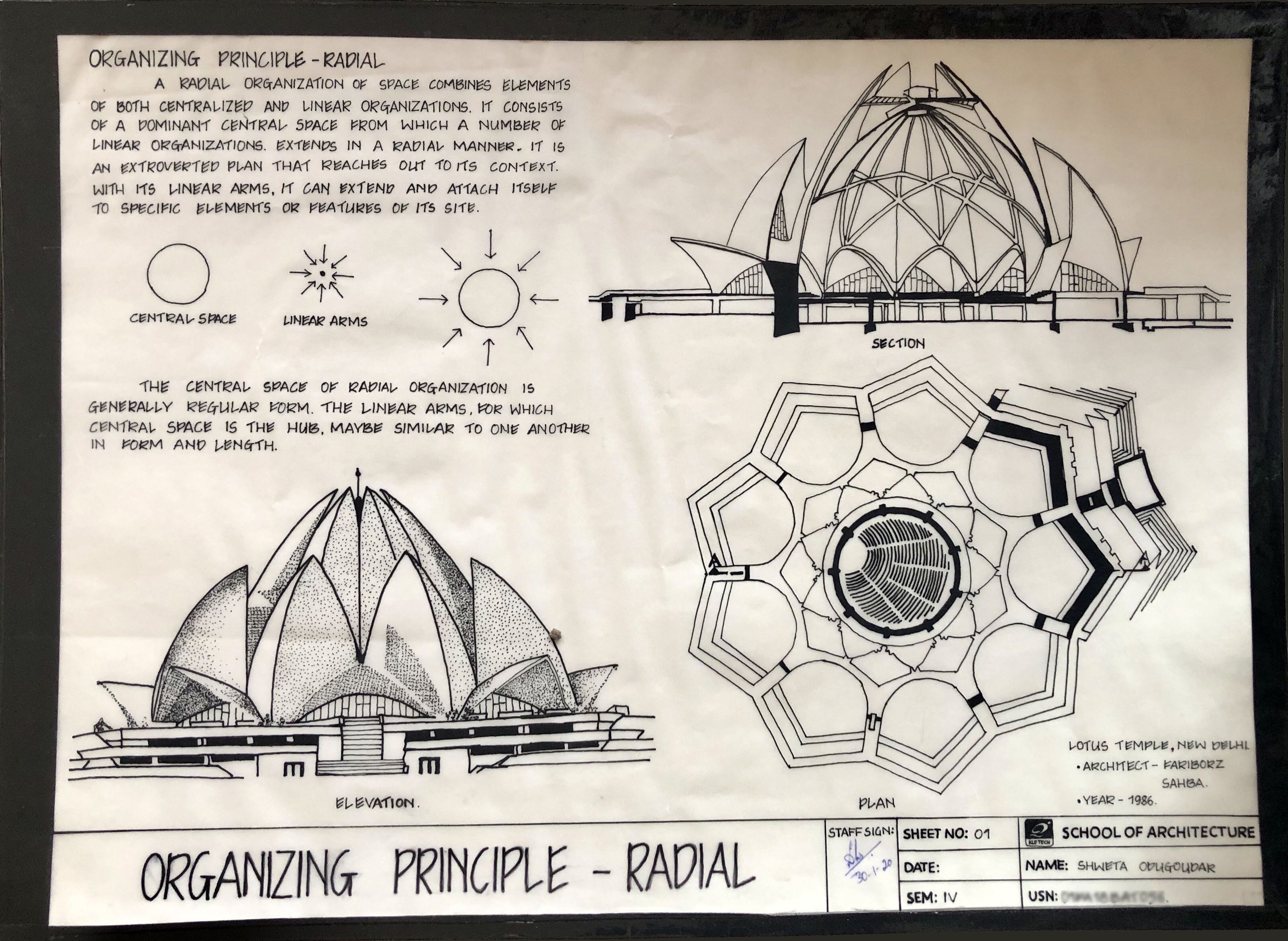
Temples have always held central importance around the world and can be active sites of cultural confluence. Possible areas to explore in your architecture dissertation topics are the uses of sustainability in creating religious structures, materials used, analysing the cultural significance of the architectural elements in structures, and classifying their types and historical context.
Inter-faith traditions are spreading across the world, and this can and has given rise to new ideas. The Lotus Temple in Delhi is an excellent case study on the same - with a marvellous, nine-sided circular shape embodying the central the central tenets of the Baha’i’ faith. It receives 20 percent of its electricity from solar panels. While the structure may look delicate, it can withstand an earthquake of up to 8 on the Richter scale. Wondering how? Because each of its nine petals has been individually constructed and fortified. It is also one of the foremost examples of biomimetic architecture in the modern world.
An architecture dissertation is only one part of the larger process of building a portfolio. Usually, students are required to submit a thesis in addition to their architecture dissertation, to demonstrate practical skills. You can also call it a rite of passage! We’ve created the ultimate guide to nailing your architecture thesis , and we highly recommend checking it out if you’re struggling with the process of a thesis.
2. Community Centre |Public Architecture
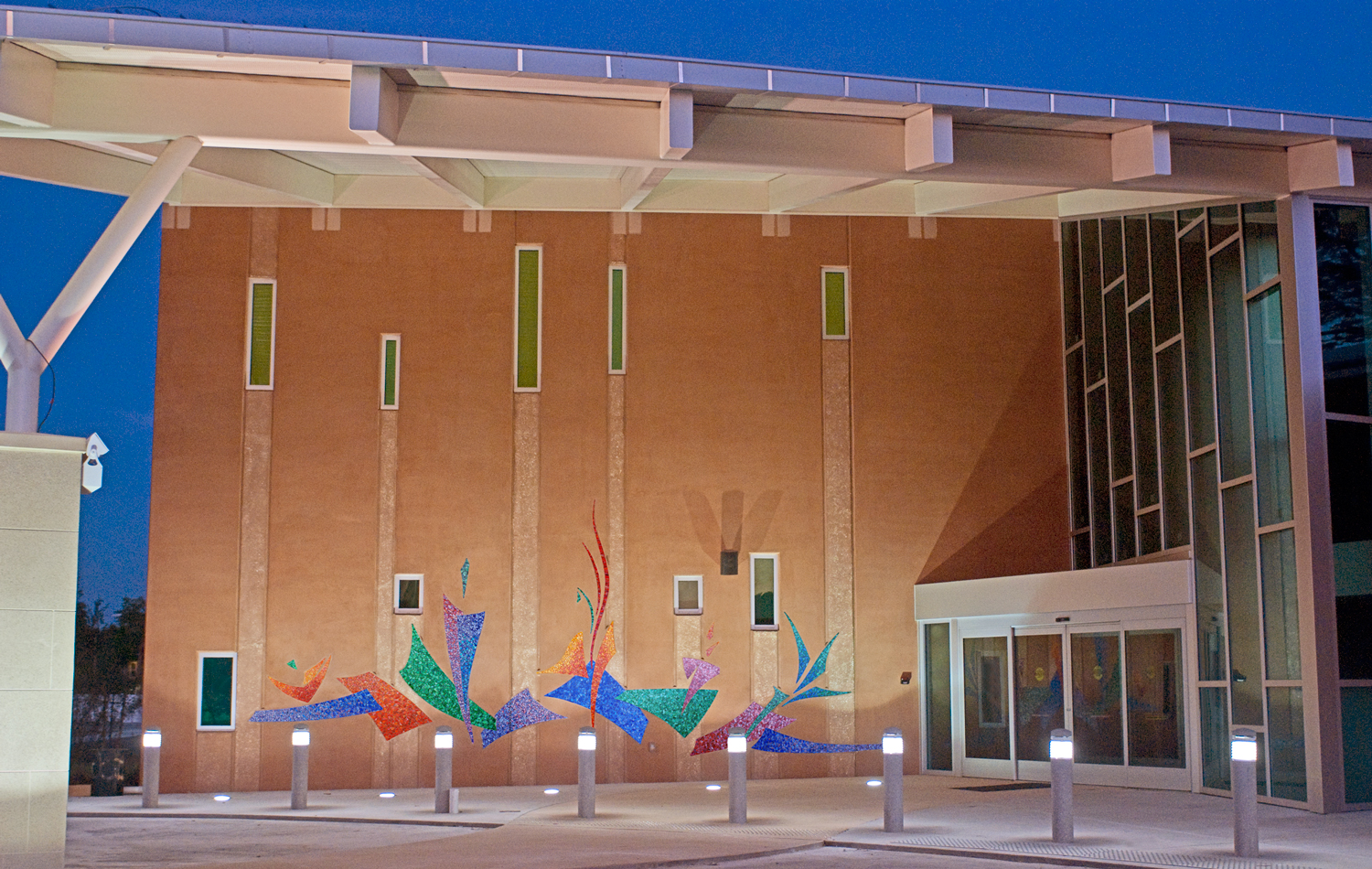
Architecture dissertations on community centres are a wonderful way to learn about urban development and planning. Exploring a community centre as your architecture dissertation topic would mean taking into consideration issues such as demographic analysis, community development (educational and skill-oriented), multifunctional spaces, ease of access, recreational facilities, and eco-friendly, sustainable building solutions. You can also look to design spaces that foster social relations and harmony within a local community while incorporating their culture and preferences, alongside performing case studies.
An excellent example of an innovative community centre is the Largo Community Centre in Florida. The park focuses on creating, in effect, an indoor park with meeting spaces for community members and recreational facilities by using sustainable materials.
A community centre is also an excellent project to showcase in your architecture portfolio , essential to developing your skills and practical knowledge. Read more tips to create an incredible architecture portfolio.
Read more: The Best Architecture Portfolios: 10 Inspiring Examples (2024)
3. Animal Shelters and Veterinary Care Centres |Healthcare Architecture
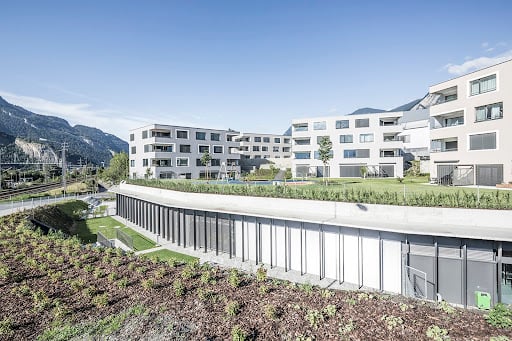
It is no secret that planning and designing spaces for animals are very different from designing spaces for humans. One needs to take into account the creation of surgery and operation theatres, hospital spaces for sick animals, residential areas for staff, playing pens, grazing grounds, access to medicinal supplies , and so on. Meanwhile, also ensure that the structure is easy to clean and has enough natural light and ventilation to comfort distressed animals. Certainly a competitive analysis for your architecture dissertation!
The Veterinary Clinic Masans in Chur, Switzerland is an excellent case study for this. With 1145 m 2 of space, cutting-edge medical technology, and designed to house 17 staff members, this veterinary centre is Southeastern Switzerland’s go-to medical facility. Its partially underground structure features a green roof, serving as both a garden and playground for neighbouring residents. The interior boasts a predominantly white palette and the rooms are strategically arranged for optimal natural light, creating a calming environment. Diagnostic equipment is showcased along corridor ceilings, maintaining the clinic’s technical vibe, while the key rooms are constructed with soundproof glass fibre. Now that’s what we call a unique structure, providing tremendous design and research scope.
This structure is certainly a competitive analysis for your architecture dissertation!
4. Mass Rapid Transit Systems Design |Transportation Architecture
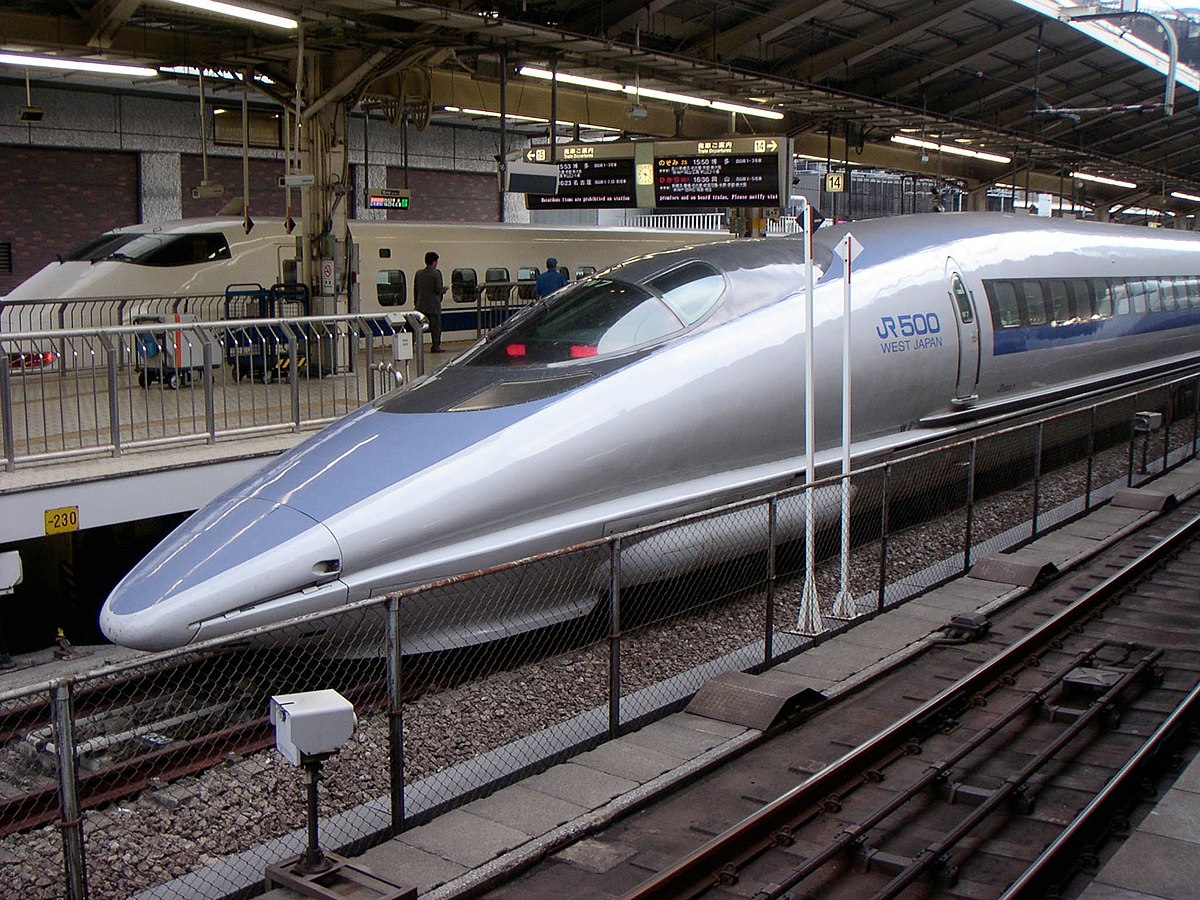
MRTS includes the design structure of trams, buses, metros, monorails, and commuter rails. The challenges in this unique field include mapping strategic routes, conducting population demand and density analysis, interchange zones, and so on. All the while, ensuring that the MRTS design is in line with civic and environmental goals, goals, property development, population growth, and appropriate land use. This makes it a very stimulating architecture dissertation topic.
A fabulous example is the Shinkansen (tr. in Japanese: ‘new railway line’) in Japan or the bullet train system. It connects major Japanese cities, and in the 50+ years of its operation, there has not been a single fatality, collision, or derailment. Now, that’s something!
5. Multi-Functional Urban Spaces |Urban Architecture
By 2030, it is estimated that the world’s population will stand at a staggering 8.6 billion, with the 10 most populated cities seeing over 400 urban million dwellers! This makes multifunctional spaces in urban cities an increasingly important concern for developing countries. Moreover, factors like preventing urban sprawl and overcrowding, taking care of waste management, and finding more sustainable ways to build structures are taken into account while planning multifunctional cities . This must be done without a decline in the city’s living standards and with attention to issues such as mobility and equity . It is exciting and highly futuristic for your architecture dissertation topic.
An interesting example of this is the Potsdamer Platz in Berlin, which turned from one of the foremost cultural and economic hubs of the city to a barren land between East and West Berlin during the Cold War. Its revival after the fall of the Berlin Wall occurred when the government announced a design competition for the plaza, which turned it into one of the largest building sites in Europe, with clearly demarcated territories of commercial centres, cultural centres, and leisure zones.
Increasingly, urban designers and architects have realised that to construct the most efficient structures for urban living, they need to use technologies such as BIM. BIM helps all stakeholders in a project stay up-to-date with the latest developments and collaborate effectively. You can read more about the best architecture firms in India that have capitalised on BIM here.
You can read more about the best architecture firms in Bangalore for internships here .
6. Co-Living Housing |Residential Architecture
Urban migration for work is an extremely common phenomenon in the current day and age. Co-living housing, statistically, is popular among young professionals who want to save funds and not take up the hassle of hunting for houses, flatmates, and furniture. A co-living unit usually comes pre-furnished and costs less than an apartment. An architecture dissertation that focuses on co-living spaces would need to take into account successful case studies, shared spaces between residents, affordability and energy efficiency, suitable privacy, and the changing trends within co-living structures.
An excellent case study on this topic is Roam Co-Living in Bali, which comes fully equipped with modern amenities a young professional would need and offers enough privacy. This unique centre has often been described as “a model of a micro-society”.
7. Sustainable Architecture
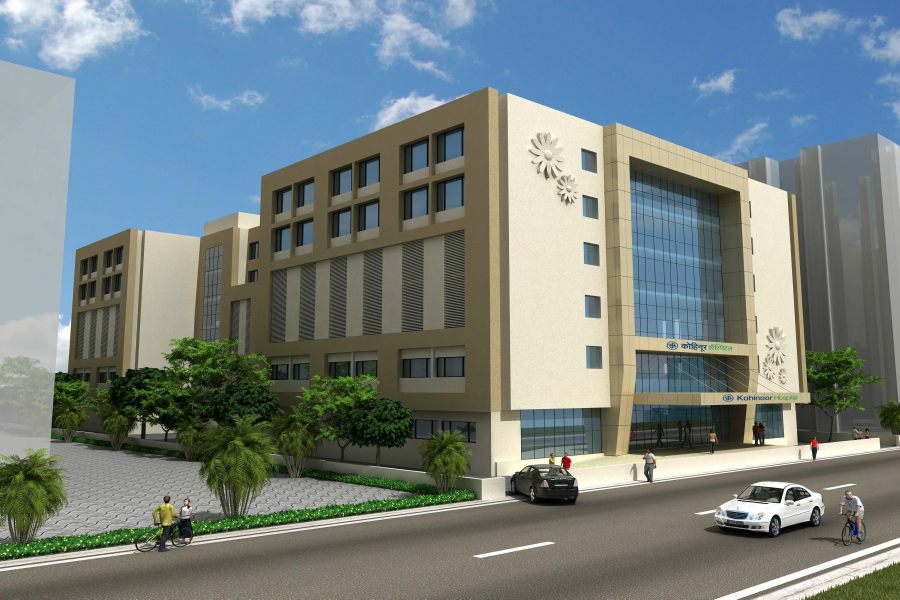
Sustainable architecture is an increasing concern all around the globe for acquiring long-term environmental, economic, and social viability. An architecture thesis on sustainability needs to include research on various sustainable practices and their materi als, for instance — sol ar power, wind power, biomass, materials such as bamboo, and recycled plastic, among others. Sustainable architecture is a large field and, therefore, requires a narrowed-down focus on the kind of structure you are analysing, be it a hospital, a factory, or a school. It would also need to be lined up with case studies on local environmental factors and population analysis.
An excellent example of the same is Kohinoor Hospital in Mumbai. More than 40% of the resources used to construct this hospital are made of recyclable materials. In addition, the hospital focuses on water conservation. Thi s is just one of many examples. The number of structures one can explore for architecture dissertation topics on sustainabil ity is endless .
8. Urban Campus |Educational Architecture
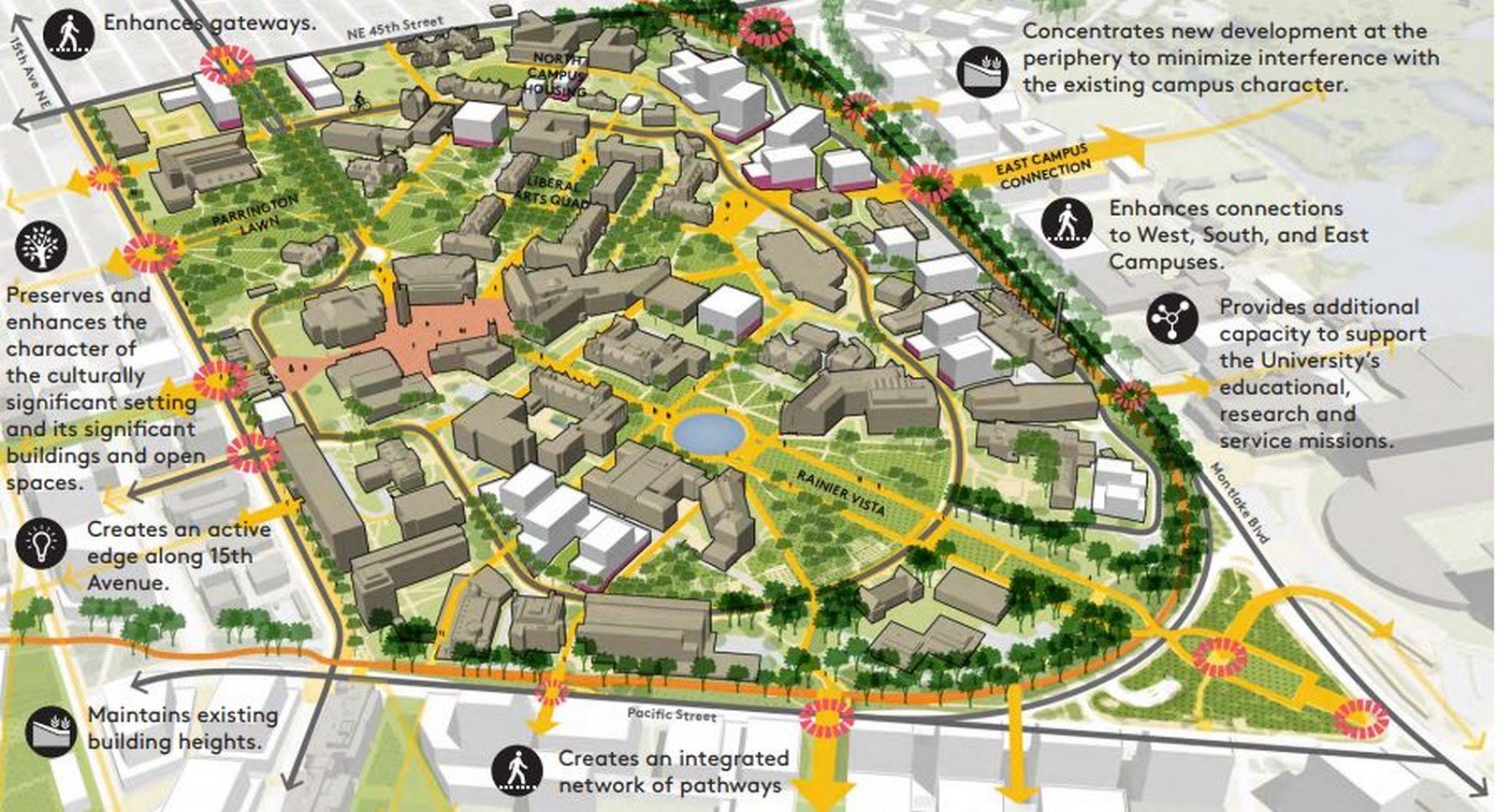
Designing and researching a university campus is similar to building a small town. It accommodates student housing, dining halls, libraries, classrooms, laboratories, recreational facilities, university administration offices , and more. In addition, it also needs to be representative of the university’s ethos and cultural identity. For students, it needs to promote a sense of well-being. Energy efficiency and pedestrian safety are also essential considerations, making it a very stimulating architecture dissertation topic.
Case studies on this topic need to be extensively researched and curated. An excellent case study example is the University of Washington’s campus, with its clear demarcations, easy-to-navigate routes, libraries, and recreational facilities. On the campus, several buildings have been constructed and renovated with sustainability in mind. The university has also implemented green building standards such as LEED(Leadership in Energy and Environmental Design), in many of its construction projects.
The University is recognised as a national leader for its deep commitment to sustainability on our campuses and in the community.
Read more: Passive Design Architecture Examples Around the World
9. Reinventing Villages |Residential Architecture
Reviving villages often means rebuilding lost traditions and folklore that have been displaced or disappeared. This may occur due to economic changes , migration patterns, technological changes, and environmental degradation. Factors that need to be accounted for in an architecture dissertation on this topic are a regional historical analysis of the mentioned factors, in addition to demographic analysis for your case studies. Analysing building structures for technological progress, education, and employment generation, studying the architecture of existing structures, and focusing on the preservation of local historical monuments are some ways you can approach this topic for your architecture dissertation.
An excellent case study for the improvement of village structures is the revival of Kumbalangi fishing village by the government of Kerala . Focusing on eco-tourism, developing transportation routes, and improving the building structure for water access were some ways in which the government aided the Kumbalangi Integrated Tourism Village project.
10. Redefining Hotels and Resorts (Hospitality Architecture)
An architecture dissertation on hotels and resorts has several interesting offshoots to explore. Hotels and resorts, apart from being hubs for tourists and vacation venues, can also provide historical relevance and embody local traditions. An architecture dissertation on this topic can focus on the adaptive reuse of buildings, technical and cultural redevelopment, the relationship between the psychology of space and hospitality, eco-tourism, and sustainable development of hotels.
An incredible example of a re-conceptualized hotel is the Harding Boutique Hotel , designed by the firm, Anarchitect. It combines the modernist style of acclaimed architect Geoffrey Bawa with traditional Sri Lankan architectural elements. It is located 30 minutes from the UNESCO heritage site Galle Fort , which makes it part of Sri Lanka’s prime cultural avenue.
11. Waste Management Centre (Industrial Architecture)
Waste management is an urgent concern in the modern world. An architecture dissertation topic of this nature would need to explore aspects such as recycling waste as construction material. This would involve analysing different kinds of waste, such as — electronic waste, industrial waste, sludge waste, and organic waste) and how they can be repurposed. It would also include studying public policy and by-laws for waste management , among other factors.
A great case study on waste management is the Holmene islets of Copenhagen . These are nine man-made islets, and their unique design combines fossil-free energy production. And the most unique part? The biowaste and waste water from Copenhagen’s 1.5 million residents are turned into clean water and bioga s!
12. Eco Museum |Cultural Architecture
An eco-museum is a structure that uses a location's historical and cultural identity for tourism and heritage appreciation. Local communities usually run eco museums which are a way for them to participate in and preserve their heritage. Sustainable development is a major factor in eco-museum construction and development. An architecture dissertation on the same would have to delve into the concept of heritage, restoring old buildings and sites, and ideating eco-friendly methods for conservation and future preservation.
A case study of a successful eco museum is the Flodden 1513 Eco Museum , which is situated on the northeastern border between Scotland and England. It was the site of a battle between English and Scottish forces in 1513 and caused the death of many noblemen and King James IV.
13. Disaster Relief Housing |Residential Architecture
Asia and the Pacific islands are the most disaster-prone areas in the world. Over 45% of natural disasters occur in this region. This makes disaster relief architecture a very urgent concern in the area. An architecture dissertation on disaster relief housing would need to consider aspects such as the design of emergency shelter centres, sanitation access, and indexes of low-cost, weather-resistant, and easily recycled materials that ca n survive diffic ult circumstances.
An excellent case study on disaster relief housing is architecture firm Designnobis’s all-inclusive emergency shelter, Tentative. It is a disaster response tent that can adapt to almost any climate.
14. Retracing the Identity of a Crematorium (Public Architecture)
Understanding funerary architecture is a unique topic for an architecture dissertation. One must understand the spatial needs of a funeral with respect to the culture and religion of the deceased person. There are many kinds of spaces to consider - cemeteries, crematoriums, tom bs, towers of silence, and so on. The significance of the materials used concerning their cultural symbolism and functional qualities is also important. Another interesting factor to explore is the environmental consequences of funerals.
An interesting case study of funerary architecture is the Parsi Tower of Silence. It is a circular, raised structure made of three concentric circles with an almost flat top. According to Zoroastrian rituals, the bodies of men are left in the outermost circle, those of women in the middle circle, and those of children in the innermost circle for scavenger birds as an act of charity to nature.
Read more: The Connection Between Art And Architecture: The Beauty of Synergy
15. Revitalising Local Markets |Commercial Architecture
Markets have historically been a central location for shopping, trading, social gatherings, and more. In addition, they also often contain locally significant structures such as mosques and temples. When you consider revitalising local markets as part of your architecture dissertation, you have to take into account factors such as the different kinds of markets (street, enclosed, open) , their layout , spatial features , and whether they are permanent, or weekly. In addition, you must think about their function, history, local demographics and future possibilities to understand the context of revitalisation to have a fruitful architecture dissertation on this topic.
An interesting example of a revitalised market is the Denpasar City traditional markets , where problems such as neglect in spatial planning and an increasing number of traders caused a decline in the market’s trade.
Final Notes
That concludes our list of the most interesting architecture dissertation topics you can pursue! A dissertation is an important stepping stone to the professional world of architecture. The field is rapidly changing, and the emergence of processes and digital tools has allowed students to push the technological boundaries of the kind of projects they wish to go after. Definitely, being in touch with the latest developments in the AEC industry will give you an edge while crafting your architecture dissertation and thesis.
Novatr offers courses on the most in-demand skills in the AEC industry– BIM Professional Course for Architects V2.0 . This is your opportunity to learn under the guidance of industry experts with years of real-world industry experience. Learn 15+ BIM software and workflows and also get the chance to work on challenging capstone projects, which will undoubtedly be good additions to your portfolio. If you want to know more about BIM and parametric modelling, our Resources page has plenty of informative reads!
Similar Blogs
/827x550/images/blog/blogHero/how_to_become_a_sustainable_architect.jpg)
Building a Career in Sustainable Architecture: Advice from a Sustainability Expert
/827x550/images/blog/blogHero/architecture_thesis_projects.jpg)
Architecture Thesis Projects: A Comprehensive List of 30 Topics to Pick From (Updated 2022)
/827x550/images/blog/blogHero/team_presentation_architecture_thesis.jpg)
How to Give a Fantastic Architecture Thesis Review That Stands Out
%20(1).jpg)
Understand how BIM can help your career!
Speak with an Expert Now!

BIM Professional Course
Related topics.
- Architecture and Construction
- design careers
- future tech
Subscribe to Novatr

Always stay up to date with what’s new in AEC!
Get articles like these delivered to your inbox every two weeks.
Related articles
.png)
A Definitive Guide on How to Choose Architecture Thesis Topic

Sanjana Aggarwal
May 12, 2023
Salaries and Career Growth of BIM Professionals in India (Updated 2024)

Sai Sreekar Chebiyyam
July 9, 2023
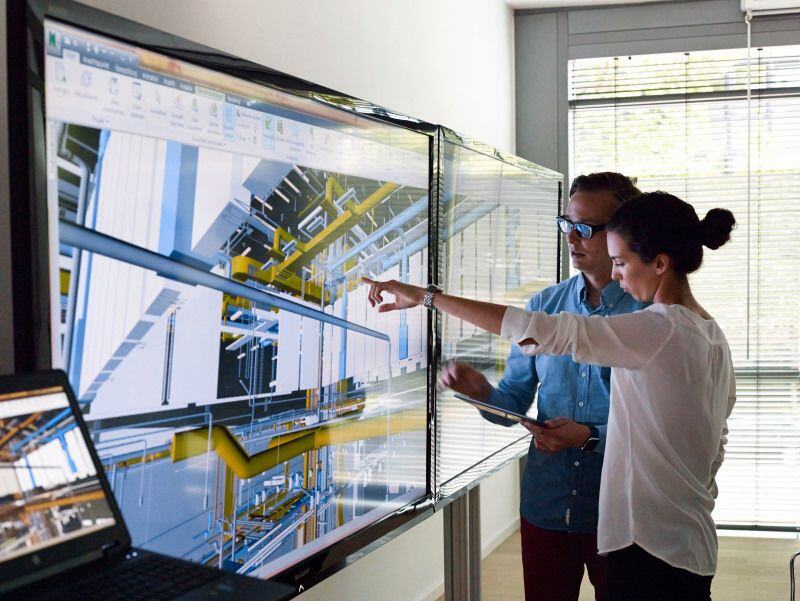
How BIM is Enhancing Landscape Architecture: A Comprehensive Guide
-1.png)
January 31, 2024
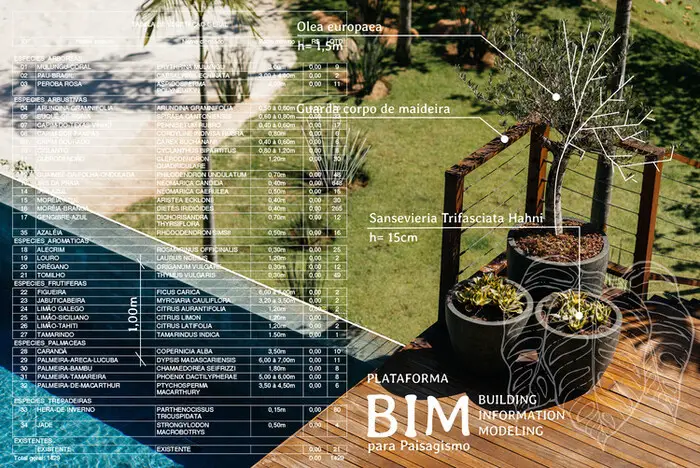
Top Architecture Firms Leading the Way for BIM Technology in India
June 1, 2021
Ready to skyrocket your career?
Your next chapter in AEC begins with Novatr!
As you would have gathered, we are here to help you take the industry by storm with advanced, tech-first skills.

Dare to Disrupt.
Join thousands of people who organise work and life with Novatr.
Join our newsletter
We’ll send you a nice letter once per week. No spam.
- Become a Mentor
- Careers at Novatr
- Events & Webinars
- Privacy Policy
- Terms of Use
©2023 Novatr Network Pvt. Ltd.
All Rights Reserved
81 Green Building Essay Topic Ideas & Examples
🏆 best green building topic ideas & essay examples, ✅ simple & easy green building essay titles, 🔎 good research topics about green building, ❓ green architecture research questions.
- Green Buildings and Environmental Sustainability This paper scrutinizes the characteristics that need to be possessed by a building for it to qualify as green coupled with questioning the capacity of the green movements across the globe to prescribe the construction […]
- Green Buildings and Their Efficiency Water Consumption The resources are useful in terms of provide regulation of buildings, components of green buildings, selection of green materials and where to purchase such materials.
- The Relationship Between Green Buildings and Operations Management Once a total budget for a green building project is set, project management should think in terms of the possible impact of different combinations: the extremes of spending the total budget, and the results expected […]
- Green Building Design Management The concert of service and product design involves environmentally friendly technologies and effective use of natural resources and materials. It influences allocation of resources, design of the building an selection of materials and technologies.
- Operations Management vs. Green Building (GB) Introduction Green Building and Operations Management Importance and Role of Operations Management Conclusion Green building depends upon effective management process and resource allocation.
- Lightening Solution for a Green Building Now better is the efficiency of electricity to light conversion, lesser is the electrical energy wasted and lesser is the amount of fossil fuel burnt and greenhouse gases produced to get the same amount of […]
- Green Building Leeds Certification – Childcare Center These provide regulations for the design of the facility, the infrastructure required, the size required and the specific services to be provided by the child care facility.
- Green Building and Green Practices Promotions One of the aspects of LCA is life cycle costing, which evaluates the financial cost of the design and maintenance of the building and is important for estimating the expenses associated with green buildings’ characteristics.
- Green Building: The Impact of Humanity on the Environment A growing awareness of humanity’s impact on the environment resulted in the emergence of regulations and evaluation systems across the world. Green Globes is online-based and requires a design team and a project manager for […]
- Green Building Programs Assessment Each of the initiatives evaluates the impact that buildings have on the environment as well as the way these buildings were built and how they can be disposed of in the future. The main objective […]
- Australian Green Building Innovation and Ethics The field has a direct impact on the quality of life and the environment. The concepts to be discussed include the origins of the project, its impacts, and how the innovation addresses sustainability concerns.
- Green Building Codes and Standards The building industry in the United States is not spared when it comes to the question of embracing the green paradigm in building and construction.
- Indoor Air Quality in Green Building Movement To check the hypothesis it is necessary to consider such issues as the history of green building, the impact of green building on environment and people’s health, the importance of the high indoor air quality […]
- Green Industrial Cities’ Designing A green environment includes the geographical area and the natural state that has not yet been developed and development must not negatively impact the existing infrastructure and the environment.
- Green Building in the Boston Area On the whole, this project illustrates how innovative technologies and creative decisions of the architects can improve the sustainability of buildings.
- Green Design: Sustainable Landscaping and Garden Design The perfect designing of sustainable landscapes in the urban centers has led to efficient use of land in cities and the surrounding regions.
- Green Building in the United Arab Emirates Consequently, the government in the United Arab Emirates resolved for the implementation of better and advanced construction strategies that would ensure energy was conserved therefore providing a solution to the increased rate of pollution that […]
- Green Buildings Impact on the Environment The most outstanding benefit of green buildings is the reduction in wastes and this is something that other developments have not taken care of.
- Green Buildings and Indoor Air Quality The idea of “green buildings” has in many ways helped enhance indoor air quality.”Green buildings” are made possible by designing and constructing buildings which have high quality of indoor air as one of their major […]
- The Use of Green Materials for Sustainable Buildings Green materials used on the sustainable buildings reduce the environmental hazardous impacts such as the global warming effects, depletion of resources, and toxicities.
- Business Opportunities and the Future of Green Building Constructions
- Analysis of Business Plans About Green Building
- Can Green Building Councils Serve as Third Party Governance Institutions?
- Comparing Green Building Rating and Sustainable Building Rating Construction
- Water Ecological Aspects in Developing a Quantitative Climatic Model of Green Building
- Encouraging L.E.E.D. Green Building Technology
- Ethical and Sustainability Issues in Green Building
- Explicating Mechanical and Electrical Knowledge for Design Phase of Green Building Projects
- Adoption and Impact of L.E.E.D.-Based Green Building Policies at the Municipal Level
- Fire Risk Analysis and Fire Prevention Management Optimization for Green Building Design
- Global Green Building Materials Market: Industry Analysis, Size, Share, Forecast
- Linking Green Building, Advertising, and Price Premium
- Green Buildings Affect the Environment Construction
- The Relationships Between Green Building and Sustainability
- Analysis of Green Building and Sustainable Construction
- Linking Green Building and Zero Energy Trends
- Overview and Analysis of Benefits of Green Building
- Green Building Construction From an Accounting Perspective
- Mapping the Green Building Industry: How Local Are Architects and General Contractors
- Green Building Councils: Their Economic Role as Governance Institutions
- Property Tax Assessment Incentive for Green Building: Energy Saving Based-Model
- Green Building Evaluation From a Life-Cycle Perspective in Australia
- The Potential for Transformative Change in the Green Building Sector
- Green Building Laws and Incentives Provided by NY City and State
- Overview of Singapore’s Green Building Program
- Green Building Occupant Satisfaction: Evidence From the Australian Higher Education Sector
- State Environmental Policies: Analyzing Green Building Mandates
- Green Building: Passive House or Zero Energy Building
- Strategies for Promoting Green Building Technologies Adoption in the Construction Industry
- Green Building Pro-environment Behaviors: Are Green Users Also Green Buyers
- Sustainable Construction: Green Building Design and Delivery
- Green Building Project Management: Obstacles and Solutions for Sustainable Development
- Benefits and Barriers to Promoting Bamboo as a Green Building Material in China
- Green Building Research: Current Status and Future Agenda
- The Market for Green Building In Developed Asian Cities
- Green Building: Taking Advantage of All Natural Resources
- The Pros and Cons of Green Building
- Thermal Eco-Cities: Green Building and Urban Thermal Metabolism
- Understanding Green Building Construction in Singapore
- Using Green Building and Energy Efficient Resources
- Can Green Building Councils Serve as Third-Party Governance Institutions?
- What Is Green Building?
- What Does Green Building Construction Look Like From an Accounting Point of View?
- What Are the Business Opportunities and the Future of Green Architecture Structures?
- What Are the Ethical and Sustainability Issues in Green Building?
- How Are Mechanical and Electrical Knowledge Used in the Design Phase of Green Building Projects?
- How Do Green Buildings Affect the Environment?
- What Is the Relationship Between Green Architecture and Sustainability?
- What Is the Connection Between Green Building Trends and Zero Energy Consumption?
- What Is Green Building Industry Mapping?
- What Are the Green Building Councils?
- What Is the Green Building Practice Plan?
- How Are Green Building and Energy Efficiency Resources Used Together?
- What Is Green Building College?
- What Is the Property Tax Incentives for Green Building?
- What Does the NYC Green Building Initiative Look Like?
- What Materials Are Used for Green Architecture?
- What Resources Are Used for Green Building?
- What Is Rethinking the Socio-Technical Transformations of Green Entrepreneurship?
- What Is Green Building Aimed At?
- Chicago (A-D)
- Chicago (N-B)
IvyPanda. (2023, November 9). 81 Green Building Essay Topic Ideas & Examples. https://ivypanda.com/essays/topic/green-building-essay-topics/
"81 Green Building Essay Topic Ideas & Examples." IvyPanda , 9 Nov. 2023, ivypanda.com/essays/topic/green-building-essay-topics/.
IvyPanda . (2023) '81 Green Building Essay Topic Ideas & Examples'. 9 November.
IvyPanda . 2023. "81 Green Building Essay Topic Ideas & Examples." November 9, 2023. https://ivypanda.com/essays/topic/green-building-essay-topics/.
1. IvyPanda . "81 Green Building Essay Topic Ideas & Examples." November 9, 2023. https://ivypanda.com/essays/topic/green-building-essay-topics/.
Bibliography
IvyPanda . "81 Green Building Essay Topic Ideas & Examples." November 9, 2023. https://ivypanda.com/essays/topic/green-building-essay-topics/.
- Greenhouse Gases Research Ideas
- Real Estate Essay Titles
- Energy Essay Ideas
- Pollution Essay Ideas
- Environmental Sustainability Essay Ideas
- Climate Change Titles
- Global Warming Essay Titles
- Environmental Protection Titles

- Green Office Model online course
- Case studies
- Membership Programme for Green Offices
- Ambassador Track
- Green Office Alumni Network
- GOM Sustainability Network
- Vision of the Movement
80 sustainability research topics for students to explore green campus issues
You’re planning your thesis, paper or capstone? You want to do a student research project with impact. We have outlined a range of sustainability research topics for you. The list specifically focuses on how to green your campus . Take action to make your university more sustainable!
Our list of sustainability research topics helps students investigate green campus issues.
Sustainability research topics: Education
Some sustainability research topics on education for sustainable development :
- What are the strengths and weaknesses of different definitions of sustainability education? Which definition could your university adopt?
- To what extent is sustainability education already implemented in the curriculum of your university?
- What are the strengths and limitations of advancing sustainability education within your curriculum?
- Where does your university stand with regards to sustainability education compared to other institutions of higher education?
- What is the demand among students for more, different or better sustainability education?
- How can existing sustainability projects on campus be used for educational purposes, e.g. visit solar cells on rooftops as part of engineering classes?
Sign-up to the FREE online course to establish your Green Office
5 weeks. One email per week. Unsubscribe at any time. By signing up, you agree to our data policy .
- What definition of sustainability research should your university embrace?
- To what extent is sustainability research already practised at your university?
- What are the strengths and weaknesses of the institution’s sustainability research portfolio compared to other institutions of higher education?
- What are the drivers of and barriers to sustainability research at your university?
- How could sustainability research help students to study sustainability issues on campus and inform practical change projects?
- What are the opportunities and costs associated with promoting sustainability research? What could a plan of action look like to strategically advance it?
Some sustainability research topics on community engagement and awareness:
- What are the perceptions of and attitudes towards sustainability by students and staff?
- What are ways to promote sustainable lifestyles among students?
- To what extent are students and staff aware of the UN Sustainable Development Goals (SDGs) ?
- How aware are students and staff about the institution’s sustainability ambitions?
- What are the benefits and disadvantages of approaches to communicate the university’s sustainability efforts better?
- What are the challenges to involve students and staff in the university’s sustainability efforts?
- Which ways to increase the engagement of the campus community exist, for example by organising sustainability events ?
For inspiration, read our post on 10 projects to engage students on the SDGs .
Explore sustainability topics for research papers on different issues related to greening campus operations:
- What are the opportunities and costs of improving the building insulations to save energy?
- What lighting systems exist on the market that are more energy efficient?
- What would a business case look like to install a new lighting system?
- Where are the main consumers of energy on campus?
- What innovative energy technologies are developed at the institution itself? To what extent could those be directly installed and tested in buildings?
- What lux values are sufficient for work and study places so that places are appropriately lit without wasting too much electricity?
- What are the strengths and weaknesses of different sustainable building standards?
- Which building standards would be most appropriate to inform the institution’s sustainable building policy?
- What are the costs and benefits associated with different types of green roofs?
- On which buildings could green roofs be installed?
- To what extent are catering and food products certified as organic or fair trade food?
- How much and why do students attach importance to organic and fair trade products sold in the cafeteria?
- How can students and employees be made more aware of the multiple benefits – e.g. health, environment, economics – of sustainable (organic, fair trade, local) food ?
- How much are students willing to pay for more organic or fair trade products?
- What types and amounts of waste are produced by whom and where at the institution?
- How did waste streams develop over the last years?
- What are innovative practices in reducing waste going to landfill or incineration? How could those be applied?
- What are the costs and benefits associated with waste recycling ?
- What options exist to switch from paper-based to more digital forms of working and studying to reduce paper consumption?
- What are the environmental, economic, and social benefits and disadvantages of different options to advance more digital working and studying?
More sustainability research topics on campus operations:
Biodiversity
- What species live at different campus locations?
- To what extent do students, faculty and staff value this biodiversity?
- What are ways to enhance biodiversity on campus?
Greenhouse-gase (GHG)
- What are the pros and cons of different GHG accounting standards?
- Which standard should the institution use to develop a GHG emissions inventory ?
- Where are GHG emissions released at the institution?
- How big is the institution’s GHG footprint?
Procurement
- What does sustainable procurement mean in the context of a university?
- How is procurement currently organised? To what extent are sustainability criteria already applied in tenders?
- To what extent could the university implement sustainability criteria that go beyond the legal minimum to advance the environmental, economic and social benefits of tenders?
- What are the largest consumers of water?
- What is the direct and indirect water-footprint of the institution?
- What are opportunities and costs to reduce water usage?
Transportation and mobility
- How do students and staff currently travel to the university and as part of their study or work?
- What is the environmental impact of these travel behaviours? How could the impact be reduced?
- What best practices exist among companies and other institutions of higher education to reduce staff travel or incentivize different travel behaviours?
Behaviour change
- What is the potential to reduce resource consumption through behaviour change?
- What are the best practices of behaviour change interventions at institutions of higher education?
- To what extent could these projects be also applied at your university?
Sustainability research topics on governance, strategy and reporting
Sustainability research topics on governance issues:
- What does sustainability mean for institutions of higher education?
- How does a comprehensive concept of a sustainable institution of higher education look like?
- How could the university’s long-term sustainability vision look like? How could this vision be realized through a roadmap?
- What are innovative ways to develop sustainability strategies for a university through a bottom-up approach?
- What ethical imperatives would demand that institutions of higher education care for their impact on the planet, people and profit?
- What are the responsibilities of institutions of higher education to contribute to global challenges, such as poverty, gender inequality, and climate change?
Monitoring and reporting
- What data is important to monitor the institution’s environmental impact? How can this data be collected and analysed?
- What are the advantages and disadvantages of different sustainability reporting standards?
- Which sustainability reporting standards should the university adhere to?
- What are efficient ways to organize sustainability reporting within the organization?
- What is the best way to communicate results among students, staff and outside actors?
- What are the strengths and weaknesses of different methodologies (e.g. payback or Net Present Value) to calculate the financial costs and benefits of sustainability investments?
- Which methodology should the institution apply?
- To what extent could sustainability projects be financed through a revolving loan fund?
- What are the possibilities to involve outside organizations through energy contracting?
- What subsidies are available at the European, national and city level to develop a green campus?
- How could the university use these financing options to advance its energy transition?
- What are approaches to integrate negative externalities into the accounting schemes of the university?
- What would be the opportunities, benefits and risks associated with establishing an energy company that’s owned by the university?
- What are the best practices to finance energy efficiency and renewable energy projects at public institutions around the world?
- How can incentive schemes be changed so that energy end-users directly benefit from reductions in energy usage?
We hope this list inspired you to find a sustainability topic for research papers.
- 12 sustainability documentaries to educate yourself and get inspired
- Green guide: 15 tips for a sustainable student lifestyle
- 12 sustainability teaching resources about green campuses
- How it works

Useful Links
How much will your dissertation cost?
Have an expert academic write your dissertation paper!
Dissertation Services

Get unlimited topic ideas and a dissertation plan for just £45.00
Order topics and plan

Get 1 free topic in your area of study with aim and justification
Yes I want the free topic

20 Dissertation Topics on Sustainability and Green Technology
Published by Carmen Troy at January 9th, 2023 , Revised On May 17, 2024
Introduction
Looking for interesting and manageable topics on sustainability and green technology for your dissertation or thesis? Well, you have come to the right place.
The subject of sustainability, green technology, and environmental friendliness has gained tremendous importance over the last few years – thanks to the ever-increasing pollution, climate change, and high production costs throughout the world.
Without wasting any more of your time, here are the 20+ dissertation topic ideas in this trendy field so you can choose the one that is not only intriguing but also manageable for you.
These topics have been developed by PhD writers of our team , so you can trust to use these topics for drafting your dissertation.
You may also want to start your dissertation by requesting a brief research proposal from our writers on any of these topics, which includes an introduction to the topic, research question, aim and objectives, literature review, and the proposed methodology of research to be conducted. Let us know if you need any help in getting started.
Check our dissertation examples to get an idea of how to structure your dissertation .
Review the full list of dissertation topics here.
Latest Research Topics on Sustainability and Green Technology
Topic 1: the role of artificial intelligence (ai) and green technology in the develpment of smart and sustainable towns.
Research Aim: This study intends to find the role of artificial intelligence (AI) and green technology in developing smart and sustainable towns. It will review the concepts of smart and sustainable towns to show their importance in the modern era to reduce global warming. Then it will assess the role of AI by analysing various machine learning and deep learning models to show how these models can help develop smart and sustainable towns. Lastly, it will review what work has already been done in this area and what should be done.
Topic 2: Impact of Research and Development (R&D) Expenditure in Green Technology on the Sustainability Outcomes of the Construction Industry- A Case of Malaysian Construction Industry
Research Aim: This study intends to analyse the impact of research and revelopment (R&D) expenditure on green technology on the sustainability outcomes of the construction industry in Malaysia. It will review the current green technology used in the Malaysian construction industry and its development. Moreover, it will show how the construction industry is spending to develop new green technology and how much it requires to make it completely sustainable. It will also identify various national and international sources which can invest in this industry to make it more sustainable.
Topic 3: What are the Motivating and Demotivating Factors for Green Supply Chain Practices? An Exploratory Study Finding the Factors Affecting Green Supply Chain Practices in the UK
Research Aim: This research will identify various motivating and demotivating factors (return on green investment, production output, local and global competitiveness, political support, international support, investor support, etc.) for green supply chain practices. It will study various industries in the UK, such as construction, hotel industry, retail industry, etc., find out how the abovementioned factors affected their interest in green technology and green supply chain practices. Moreover, it will assess the work done in this area and how various institutions can motivate these industries.
Topic 4: Influence of Green Advertising on the Consumer View of Green Technology and Sustainability in the US
Research Aim: This study shows the impact of green advertising on the consumer perception of green technology and sustainability. It will assess how various components of green advertising work and how they affect the consumer perception of the need for green technology. Moreover, it will analyse different green advertising strategies used by companies in the US to influence consumer perception and how these strategies can be improved to make US consumers more interested in the products, which are products of an environment-friendly production process.
Topic 5: Green Economy a Necessity? Impact of Green Technology on Sustainable Economic Growth and Development- A Case of ASEAN Economies
Research Aim: It proposes a framework to analyse the impact of green technology on sustainable economic growth and development. It will show whether the green economy is essential for growth and development or not. It will assess various effects of green technology on the economy and ecology. And show how improving ecology can benefit human development, which can be good for long-term economic growth in the ASEAN countries. Lastly, it will analyse the current progress of these countries in creating a green economy.
Topic 6: The Potential of Biomimicry in Green Technology Innovation
Research Aim: This research explores and evaluates the potential applications of biomimicry principles in driving innovation within green technology. The purpose of the study is to enhance sustainability, resource efficiency, and environmental conservation.
Topic 7: Circular Economy and its Application in Achieving Sustainability Targets
Research Aim: This study investigates the concept of the circular economy and its practical implementation strategies. It focuses on the effectiveness of the circular economy in facilitating the achievement of sustainability targets across various industries and sectors.
Topic 8: Sustainable Water Management in the Era of Climate Change
Research Aim: This research examines the challenges and opportunities associated with sustainable water management in the context of climate change. The study identifies effective strategies, technologies, and policies to ensure resilient and equitable access to clean water resources while mitigating the impacts of climate variability and extreme events.
Topic 9: The Role of Information Technology in Advancing Sustainability Initiatives
Research Aim: This study investigates the multifaceted role of information technology (IT) in advancing sustainability initiatives across various sectors. It explores how IT innovations, such as big data analytics, IoT (Internet of Things), blockchain, and AI (Artificial Intelligence), can contribute to enhancing resource efficiency and promoting sustainable development goals.
Topic 10: Corporate Social Responsibility and Green Technology Adoption: A Case Study Analysis
Research Aim: This study aims to conduct a comprehensive case study analysis to examine the relationship between corporate social responsibility (CSR) practices and the adoption of green technologies within organisations. It examines understanding the motivations and outcomes associated with integrating sustainability initiatives into corporate strategies and operations.
Topic 11: Impact of Smart Grid Technologies for Sustainable Energy Management
Research Aim: This research assesses the impact of smart grid technologies on sustainable energy management. The study focuses on understanding how the integration of advanced grid infrastructure, renewable energy sources, energy storage systems, and demand-side management techniques contributes to increasing energy efficiency, grid reliability, and environmental sustainability.
COVID-19 Sustainability and Green Technology Research Topics
Topic 1: covid-19 and the need to expand sustainable energy.
Research Aim: It’s high time to expand sustainable energy during COVID-19.
Topic 2: COVID-19 and the environment
Research Aim: This study will focus on the positive and negative impacts of COVID-19 on the environment.
Topic 3: Economic expenditure on the green environment during COVID-19
Research Aim: This study will review the economic expenditure and plans for the green environment during COVID-19.
Topic 4: The green economy after COVID-19
Research Aim: This study will analyse the current issues related to green technology and predict the future of a green environment after COVID-19.
Dissertation Topics Ideas on Sustainability and Green Technology on Global Impact
Topic 1: research on sustainable gardens.
Research Aim: This research aims to conduct research on creating sustainable gardens and identify their benefits.
Topic 2: Sustainable outdoor designs using recycled materials
Research Aim: This research aims to identify various methods of creating sustainable outdoor designs using recycled materials and identify their benefits.
Topic 3: Pollution-free disposal and recycling of trash
Research Aim: This research aims to identify various methods to ensure pollution-free disposal and recycling of trash
Topic 4: Importance of gardening- awareness and ideas for the city, terrace/roof gardening
Research Aim: This research aims to address the importance of gardening and its awareness among the public. It will also focus on identifying cost-effective and innovative ideas for the city, as well as terrace/roof gardening.
Topic 5: Examining the economic impacts of green technology
Research Aim: The research will involve comparing the costs incurred in developing green energy and the economic benefits. The services will be saved once alternative forms of materials and energy sources are used. It will be relevant in identifying whether it is worth investing in green technology from an economic perspective. It will also help in developing supportive policies that guide green technology.
Topic 6: How do national and regional politics affect environmental sustainability?
Research Aim: This research study will analyse the role of politics in the environment. It will explore the positive or negative impacts of individual political inclinations.
Topic 7: How sustainable is the environment in the current and forthcoming eras?
Research Aim: This research will analyse global trends and their impacts on environmental trends. Developments such as increasing population, climate change, and using various materials affect the people. It will inform about how sustainability measures can be structured to align with the trends.
Topic 8: Adoption of green energy by low-end users
Research Aim: The research will be based on realising a market niche that cannot afford or are not willing to spend on an expensive product. Additionally, the embrace of some advanced technologies varies across classes, mainly based on exposure. There is also the notion that green technology can be expensive, making the stated users reluctant to use it. Accordingly, the research will focus on the factors that give users their respective levels of green technology use.
Topic 9: How green technology can affect organisational processes
Research Aim: This research will analyse how processes that can include procuring and sourcing, producing, sales, marketing, and delivering products, among others, can be impacted once green technology is introduced. It will help analyse cost and time effectiveness and the satisfaction of the organisation’s stakeholders. It can help recommend structural changes when an organisation is considering green technology.
Topic 10: To what extent does green technology contribute to environmental sustainability?
Research Aim: notably, several factors are contributing to environmental degradation and pollution. While green technology has been identified in previous research to ensure sustainability, its contribution can be compared with other factors. Accordingly, recommendations can be made about whether it is the absolute solution to sustainability.
Topic 11: Green technology and global environmental sustainability frameworks
Research Aim: The study will assess how the frameworks affect the use of green technology. Various global environmental practices are commonly developed. The research will suggest any amendments to the frameworks to positively correlate them with green technology. Also, the topic will evaluate how the frameworks are implemented in various regions.
Topic 12: Green technology practices in developing countries
Research Aim: The research will explore the extent to which developing countries use and promote green technology. They are characterised by having a lower economy. The priority they have on sustainability will be established.
Topic 13: How do policies affect the use of green technology in a country?
Research Aim: The research acknowledges that regulatory bodies devise policies to guide various industries. The guidelines can be supportive or suppressive in the development and use of green technology. For instance, the bodies’ incentives can encourage green technology, while factors like high taxation can discourage it. Therefore, focusing on a particular country’s policies can be insightful into the level at which the technology is incorporated.
Topic 14: Incentives for green technology and environmental sustainability
Research Aim: The purpose of this study is to determine how green technology can be promoted among users and manufacturers. It will first identify the challenges that users can face when using and applying the technology. It will also evaluate the level of sensitisation about green technology that people in a region have. The various stakeholders can execute the incentives for environmental sustainability.
How Can ResearchProspect Help?
ResearchProspect writers can send several custom topic ideas to your email address. Once you have chosen a topic that suits your needs and interests, you can order for our dissertation outline service , which will include a brief introduction to the topic, research questions , literature review , methodology , expected results , and conclusion . The dissertation outline will enable you to review the quality of our work before placing the order for our full dissertation writing service !
More Research Titles on Sustainability and Green Technology
Topic 1: what roles do ngos have in environmental sustainability and green technology.
Research Aim: The research will establish how NGOs can be incorporated into sustainability. NGOs have distinct objectives. While some are specific to environmental conservation, others focus on aspects that indirectly affect the environment positively or negatively. The study will then suggest how the NGOs can be motivated to advance their operations and promote green technology.
Topic 2: Impactful green thinking to achieve sustainability
Research Aim: The research analyses human behaviour and issues that can promote sustainability. It explores how people can change their perspective on the environment and take measures at individual and collective levels. It will recommend some habitual changes that can positively impact the environment.
Topic 3: A holistic approach to environmental sustainability
Research Aim: Sustainability comprises various factors, ranging from behavioural, resources, technological, and procedural. Most studies have focused on particular sets of characteristics. However, it can be intriguing how integrating sustainability factors can be achieved. Also, it will be realised if implementing some measures of sustainability has any correlation to others.
Topic 4: Can there be a balance between lifestyle and green technology?
Research Aim: the study will assess the relationship between current lifestyle and green technology. It will be relevant in identifying the personal understanding of green technology’s contribution and how people are ready to adjust their lifestyle to technology. It will further show how green technology affects lifestyles.
Topic 5: How do businesses perceive green energy and environmental sustainability?
Research Aim: The research aims to identify how profit-making organisations approach green technology. It will focus on whether they find it less costly and useful. Also, it will establish whether they find products that involve green technology are usually marketable. Further, it will identify the organisation’s preference for the working environment, whether in regions that promote environmental sustainability or those that do not.
Topic 6: Examining sustainability policies in developed and developing countries
Research Aim: The research will compare regulations instituted in the two sets of countries. It will also assess the extent of implementation of the policies in the countries.
Topic 7: Challenges facing green technology as one of the drivers towards sustainability
Research Aim: The research will be based on green technology recognition as a crucial attribute of environmental sustainability. Despite the assertion, the technology has not attained universal coverage as it would be more impactful. The challenges can vary in economic, social, geographical, and regulatory aspects, and it is recommended that the research focus on a particular region. The results can also be analysed if there is a conflict of to identify any general challenges in the areas.
Topic 8: What is the consumer perspective towards green production?
Research Aim: Businesses target to satisfy the needs of consumers. The study will assess whether the consumer has a force towards producers that can make the latter inclined towards using green technology. This research study will essentially focus on the consumables industry.
Topic 9: Stakeholders’ contribution to green technology
Research Aim: The research will establish all the stakeholders in green energy. It will reveal their interests and drivers towards green technology. There will be an insight into whether there is a conflict of interest between the stakeholders and how it can be resolved. It will also help identify how the stakeholders can collaborate and integrate their resources and ideas.
Topic 10: Current trends in green technology and the future of technology
Research Aim: the research will aim to overview how green energy has been advancing over time. The trend will then help in predicting the future of green technology. Besides, it will be informative about the contribution green energy has had on environmental sustainability at various levels. It will then make recommendations about the optimum technology based on the available information and developments.
Also Read: Dissertation Topics in Engineering Management
How ResearchProspect Can Help You?
We are aware of the problems students are likely to face when it comes to finding a suitable topic in sustainability and green technology. Therefore our expert writers are always looking forward to assisting you with your topic search.
We hope you were able to find a suitable topic from the 20+ topic suggestions in green technology and sustainability provided in this article. But even if you didn’t find any of these topics suitable for your needs, you can always contact us to get custom topic ideas from our expert writers.
Our team of expert writers in any field you would like your work to be carried out in will facilitate you and ensure you get the grades that you are worthy of and deserve.
Important Notes:
As a student of sustainability and green technology looking to get good grades, it is essential to develop new ideas and experiment with existing sustainability and green technology theories – i.e., to add value and interest to your research topic.
Sustainability and green technology are vast and interrelated to many other academic disciplines like environmental engineering . That is why it is imperative to create a sustainability and green technology dissertation topic that is particular, sound, and solves a practical problem that may be rampant in the field.
We can’t stress how important it is to develop a logical research topic based on your fundamental research. There are several significant downfalls to getting your issue wrong; your supervisor may not be interested in working on it, the topic has no academic creditability, the research may not make logical sense, and there is a possibility that the study is not viable.
This impacts your time and efforts in writing your dissertation , as you may end up in a cycle of rejection at the initial stage of the dissertation. That is why we recommend reviewing existing research to develop a topic, taking advice from your supervisor, and even asking for help in this particular stage of your dissertation.
While developing a research topic, keeping our advice in mind will allow you to pick one of the best sustainability and green technology dissertation topics that fulfil your requirement of writing a research paper and add to the body of knowledge.
Therefore, it is recommended that when finalising your dissertation topic, you read recently published literature to identify gaps in the research that you may help fill.
Remember- dissertation topics need to be unique, solve an identified problem, be logical, and be practically implemented. Please look at some of our sample sustainability and green technology dissertation topics to get an idea for your dissertation.
How to Structure Your Dissertation on Sustainability & Green Technology
A well-structured dissertation can help students to achieve a high overall academic grade.
- A Title Page
- Acknowledgments
- Declaration
- Abstract: A summary of the research completed
- Table of Contents
- Introduction : This chapter includes the project rationale, research background, key research aims and objectives, and the research problems. An outline of the structure of a dissertation can also be added to this chapter.
- Literature Review : This chapter presents relevant theories and frameworks by analysing published and unpublished literature on the chosen research topic to address research questions . The purpose is to highlight and discuss the selected research area’s relative weaknesses and strengths whilst identifying any research gaps. Break down the topic and binding terms, which can positively impact your dissertation and your tutor.
- Methodology : The data collection and analysis methods and techniques employed by the researcher are presented in the Methodology chapter, which usually includes research design , research philosophy, research limitations, code of conduct, ethical consideration, data collection methods, and data analysis strategy .
- Findings and Analysis : The findings of the research are analysed in detail in the Findings and Analysis chapter. All key findings/results are outlined in this chapter without interpreting the data or drawing any conclusions. It can be useful to include graphs, charts, and tables in this chapter to identify meaningful trends and relationships.
- Discussion and Conclusion : The researcher presents his interpretation of results in this chapter and states whether the research hypothesis has been verified or not. An essential aspect of this section of the paper is to link the results and evidence from the literature. Recommendations with regard to the implications of the findings and directions for the future may also be provided. Finally, a summary of the overall research, along with final judgments, opinions, and comments, must be included in the form of suggestions for improvement.
- References : This should be completed following your University’s requirements
- Bibliography
- Appendices : Any additional information, diagrams, and graphs used to complete the dissertation but not part of the dissertation should be included in the Appendices chapter. Essentially, the purpose is to expand the information/data.
About ResearchProspect Ltd
ResearchProspect is a UK-based academic writing service that provides help with Dissertation Proposal Writing , PhD. Proposal Writing , Dissertation Writing , Dissertation Editing, and Improvement .
Our team of writers is highly qualified. They are experts in their respective fields. They have been working for us for a long time. Thus, they are well aware of the issues and the trends of the subject they specialise in.
Free Dissertation Topic
Phone Number
Academic Level Select Academic Level Undergraduate Graduate PHD
Academic Subject
Area of Research
Frequently Asked Questions
How to find sustainability and green technology dissertation topics.
For sustainability and green technology dissertation topics:
- Research recent environmental challenges.
- Explore innovative green solutions.
- Examine policy and industry trends.
- Analyse potential socio-economic impacts.
- Focus on interdisciplinary approaches.
- Select a topic resonating with your passion and expertise.
You May Also Like
Any crime that is conducted using a computer and a network is known as cybercrime. Cybercrimes can target individuals in their personal capacity by targeting their property,
Check out the list of most interesting 100+ chemistry dissertation topic ideas trending lately to help you write an exceptional research paper.
Nurses provide daily clinical care based on evidence-based practice. They improve patient health outcomes by using evidence-based practice nursing. Take a look at why you should consider a career as an EBP nurse to contribute to the healthcare industry.
USEFUL LINKS
LEARNING RESOURCES

COMPANY DETAILS

- How It Works
- How It Works
- PhD thesis writing
- Master thesis writing
- Bachelor thesis writing
- Dissertation writing service
- Dissertation abstract writing
- Thesis proposal writing
- Thesis editing service
- Thesis proofreading service
- Thesis formatting service
- Coursework writing service
- Research paper writing service
- Architecture thesis writing
- Computer science thesis writing
- Engineering thesis writing
- History thesis writing
- MBA thesis writing
- Nursing dissertation writing
- Psychology dissertation writing
- Sociology thesis writing
- Statistics dissertation writing
- Buy dissertation online
- Write my dissertation
- Cheap thesis
- Cheap dissertation
- Custom dissertation
- Dissertation help
- Pay for thesis
- Pay for dissertation
- Senior thesis
- Write my thesis
100 Best Architecture Thesis Topics

One of the most important components of a great writing project like a thesis or dissertation is a great topic. Teachers often provide full lists of research ideas for students to choose from, but they also encourage students to develop original topics based on their interests. In the case of architecture, many students might have trouble coming up with architecture thesis topics that meet the requirements of a given assignment. This is why we have compiled this list of interesting and original architecture research topics for students to use at no cost. Feel free to modify them in any way to fit your assignment, make your choice and move to crafting your thesis outline .
Computer Architecture Topics for High School
- In what ways have computer design programs positively affected modern architecture?
- How do early explorations of deep-learning impact by limitations in computer architecture?
- How are the computer architectures of financial data centers at risk due to cyber-hackers?
- How are modern bridges and buildings at lesser risk of damage due to collapse?
- In what ways has computer architecture sped up the development process in third-world countries?
- Is the pendulum a real thing when it comes to architectural movements?
Great Landscape Architecture Topics
- What are the major challenges that cities face when creating and maintaining open spaces?
- What are the most common health risks that a community faces when parks are built next to water runoffs?
- How does the makeup of a neighborhood affect what landscape architectural choices are made?
- Why is it important for city centers to have natural elements such as trees and shrubs to improve air quality?
- Are natural bodies of water (like ponds and lakes) putting people at risk due to mosquito infestations?
- What is the impact of architectural open spaces in Latin American countries?
Controversial Architecture Topics
- What impact did the resurrection of New York’s Pier 55 have on the political landscape of that city?
- Discuss the legal battle that occurred between Zillow and Kate Wagner in 2017.
- Why has President Trump failed to gain financial support to build his proposed border wall?
- How are people along the Texas border negatively impacted by the construction of a border wall across their private properties?
- Why is the United States’ infrastructure at such risk do to overpopulation in major cities?
- Women in architecture have been accused of being soft, do you agree or disagree?
Dissertation Topics for Landscape Architecture
- How will the development of inclusive and safe public spaces positively impact patients with dementia?
- Will the development of more bike paths along green spaces reduce carbon emissions in urban areas?
- What is the importance of multiple small public parks in our communities?
- How can one improve the social value of groundwater in urban settings?
- In what ways can urban eco-systems be regenerated with the inclusion of green roofs and living walls?
- In what ways has bamboo architecture has changed our understanding of how strength and function together?
Computer Architecture Research Paper Topics
- How did technology change Jorn Utzon’s proposed design for what is now the world-famous Sydney Opera House?
- How is the use of technology in the design of buildings changing the role of the modern architect?
- How have computer simulations of natural disasters made today’s buildings safer?
- What are the limitations of computer simulations when it comes to presenting realistic situations?
- What are the major computer influences on architecture and design in the 21 st century?
- Describe the direction of architecture designed to withstand major disasters.
Interesting Architecture Thesis Topics
- How are inventions in lighter building materials making it easier to build larger structures?
- What are the best designs for shared accommodations like student dorms and apartments?
- What are the effects of the Internet of Things technology on the architectural design of urban settings?
- Discuss the differences between the materials that were used in ancient and modern structures.
- Which are your favorite architects of the 20 th and 21 st centuries?
- Why is outdoor footing for different climates is a growing trend in architectural design?
Architecture Ideas for a Quick Project
- How do you better utilize the space given to you for a board size concerning its size and orientation?
- In what ways can you utilize prior projects’ use of layout when working on a new development project?
- Compare and contrast the positives and negatives of modern architectural design software programs?
- How can schools utilize technological architect tools to better develop campuses in rural areas?
- What are the best design methods to maximize functional spaces in small areas?
- How has American architecture changed over the years?
Architecture Graduation Project Topics
- What are the origins of Chinese Architecture and how has it remained the dominant tradition?
- How can sunlight be used to save on energy costs in high-rise buildings in low-temp cities?
- How did medieval architecture change as military technologies advanced?
- What are the best practices that town planners can execute to maintain safe travel?
- How to utilize restaurants to revitalize urban spaces in cities impacted by Covid-19?
- What are the major benefits of investing in low-cost but high-strength buildings?
Design Thesis topics for Architecture
- Discuss the evolution of a building component of your choice and take us on a walk through history.
- According to today’s modern needs and standards, how will architecture look in a decade?
- What impact has modern architecture had on American culture?
- How have the gothic elements of medieval architecture found their way into modern design?
- What are the major differences between Aztec and Egyptian architecture of major temples?
- How did the Art-Deco style of the 1920s and the 1930s influence modern architecture?
Research Topics in Computer Architecture for College
- Are computer designers changing the traditional roles of engineering architects in the 21 st century?
- How has the invention of 3D printing technology changed the way architects can quickly change the direction of their designs?
- How has 3D printing opened up a new field of architecture that did not exist 20 years ago?
- What were the distinctive elements of 15 th century English architecture?
- How has virtual reality made an impact to design decisions made by architects and engineers?
- What are the best 3D rendering programs for aspiring architects to use today?
Architecture Thesis Topics in Sustainability
- Will sustainable agriculture stem a revolution in the architectural world?
- Can sustainable agriculture impact how NFL stadiums are built moving forward?
- How are modern buildings failing by not using cooling and heating technology?
- How did French architecture differ from English architecture in the 16 th century?
- Why has wind turbine technology waned in the last two decades?
- Can solar water heating lead to new architectural designs?
Dissertation Topics for Interior Architecture
- How has interior design shaped outdoor design in modern architecture?
- How have decorating styles changed how modern architects create indoor spaces?
- Can interior architecture use technology to sustain water in buildings?
- Are color combinations a factor in how architects design frame ideas for interior spaces?
- How are interior decorators influenced by the work of architects?
- Can exhibition spaces reflect a building’s architecture?
Master Thesis Topics in Architecture
- The causes of color change in interior designers may be influenced by outdoor architecture.
- How do light pattern decisions affect the design of outdoor architectural aspects?
- How has luxury design impacted the way modern homes are built?
- Discuss the importance of interior design to outdoor architecture.
- How did the Greek revival influence the advancements made in the Gothic revival?
- How was European architecture influenced by Islam?
Computer Architecture Topics Research Paper
- Why are major cities around the world relying on computer technologies to redesign layouts?
- What function did Roman images serve the design of ancient buildings?
- In what ways has technology helped us to understand the architecture of ancient divinations?
- Can architects recreate structures from the past using modern computer technology?
- How can computer technologies be used to modernize city infrastructures?
- How does the “form follows function” ideal of Louis Sullivan play into technology in architecture?
Current Architecture Research Paper Topics
- How can design be integrated into the university campus planning efforts?
- How are modern techniques in engineering changing the landscape for architects?
- How have the works of Alvaro Siza impacted renovation projects around the world?
- Why is small space living such a rising trend in large cities?
- Which has had a greater influence among modern artists, Portuguese or Spanish architecture?
- Are floating hotels a viable business venture in today’s architectural world?
Architecture Topics for a Long Project
- What is the importance of understanding millennial design interests?
- Why should architects be on-site for their projects?
- How does current architecture impact the way we consider rural landscapes?
- Are vernacular views of architecture imposing on traditional views?
- How are modern architectural methods influencing the building of stadiums?
More Computer Architecture Research Topics
- How can computers be used to recreate images of long-destroyed architectural marvels?
- What are the major challenges brought on by new materials and technology in architecture?
- How does technology give architects more options to consider when coming up with materials?
- How has computer architecture advanced the construction of safer bridges around the world?
- Did computer architecture play a role in the development of the Three Gorges Dam?
What do you think of this collection of architectural project topics? Our thesis writers are putting together original architectural thesis topics around the clock. And if you need a custom-list we can have that ready for you in a matter of hours. Check out our other articles and feel free to send us a message to let us know how we can help with your next academic assignment.
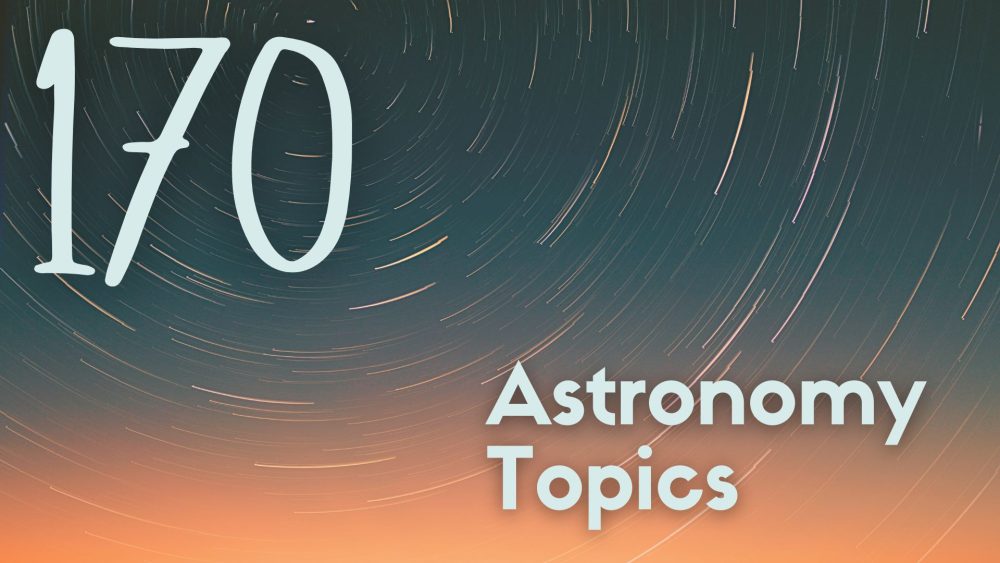
Leave a Reply Cancel reply
Your email address will not be published. Required fields are marked *
Comment * Error message
Name * Error message
Email * Error message
Save my name, email, and website in this browser for the next time I comment.
As Putin continues killing civilians, bombing kindergartens, and threatening WWIII, Ukraine fights for the world's peaceful future.
Ukraine Live Updates

Sustainability: Sustainability Research Topics
- Find Journal Articles
- Databases for Sustainabilty Research
- Carbon Footprint
- Climate Change
- Green Building & Infrastructure
- Green Economy/Technology
- Materials, Waste & Recycling
- Social Sustainability
- Sustainability in Higher Education
- Global Environment Overview

Click on any of the topics above for more topic-specific resources.
Related Guides
- Climate Change This guide presents selected resources related to climate change and global warming.
- Life Cycle Assessment Guide This guide provides selected resources related to LCA, which is a technique to assess the environmental aspects and potential impacts associated with a product, process, or service.
- United Nations Sustainable Development Goals This guide presents resources related to the themes of the 17 SDGs.
- Latin American and Caribbean Studies - Environment & Sustainability This guide provides selected resources on the topics of the environment and sustainability as they relate to these regions. Each resource category provides sources on a regional and country basis.
- Earth Day 2023 This guide presents selected resources such as books, journals, films & videos on Earth Day topics.
- Sustainability resources on JSTOR A research guide to the wide range of journals, ebooks, and more than 5,400 Open Access research reports in the field of sustainability. The subjects of resilience and sustainability are explored broadly, covering research on environmental stresses and their impact on society.
- << Previous: Databases for Sustainabilty Research
- Next: Carbon Footprint >>
- Last Updated: Aug 3, 2023 8:47 AM
- URL: https://libguides.wpi.edu/sustainability
How can we help?
- [email protected]
- Consultation
- 508-831-5410

15 Architecture Thesis Topics for Urban Architecture

Urban Architecture has consistently been a trending architecture thesis topic among the students. And before we go deep into the variety of topics that can be used we must understand what exactly is Urban Architecture?
One could say urban architecture refers to any building type that establishes an appreciable relationship with its surrounding context, the built environment , and the community itself. It comprises buildings that are mostly located in urban areas, are accessible, and are meant to serve the public at large. Its purpose hence would be to make society better. Indeed, people are indeed strongly affected by building forms and facades. According to research, the main cause of ‘social stress’ in urban environments is often the absence of social bonding and interconnection in city landscapes . Design that stimulates social and urban cohesion is hence, very important for good community living. This is where urban architecture comes in; a holistic approach to the subject may result in projects like iconic skyscrapers or even residential developments . However, the focus revolves around enhancing the experience of people who are connected to the architecture.
When choosing to do a architecture thesis project on the subject of urban architecture, one needs to understand the platitude of areas and scopes encompassed by the field. There are indeed endless possibilities and avenues to explore that intend to serve the interests of the public, and also make community life better.
Before you delve into the list of topics of urban architecture to choose from, make that:
- You understand the subject thoroughly. Choose a topic relevantly and appealing to your interests, especially prospects, masters, or a job.
- You discuss it with your thesis advisor so that he can comprehend your intent and help you through the course of the project .
- The topic does not necessarily have to be unique. It also should not be something that has been tried and tested far too many times.it is because your work is what would represent you. Make sure, it speaks of who you are and what you want to do.
Here are a few options for viable architecture thesis topics that you could choose to look at.
1. Low-cost housing | Architecture Thesis
As more and more people are moving to dense urban cities like New York , in search of a better quality of living and opportunities, the city population is on the rise. As is the cost of living, making low-cost housing a dire need of societies, as low-income residents have limited choices for affordable living. When affordable housing complexes were being constructed ever since the mid-20 th century, these projects were often seen as monumental solutions to provide economical living spaces to large groups of people. Hence, even with the best of intentions of the designers, the imposing towers often turned out to be negligent of human scale, and were often more inhospitable and discouraging for communities, leaving them feeling more isolated and unwelcome.
However, a rising interest in the area since recent years has seen a rise in alternative solutions to the outdated models. Low-cost, affordable housing is not seen as merely buildings creating decent spaces for living, but also using sustainable building features to reduce costs, maintenance and to help improve the quality of life and belongingness for residents, allowing them to feel more connected to not just the resources, but also to communities and the spaces outside.

2. Art and Heritage museum
To design a building that is important not only for the preservation of the history of the community but to also integrate members of the community and to what they share. This topic uses a method that looks at the study not only qualitatively, but also based on a theoretical foundation, with the acute understanding that comes from familiarizing oneself with concepts and standards of museums, exhibition spaces, contextualism, and exhibit care and preservation.
The project should not only focus on respecting the importance of the historical context, but also ensure that it avoids the damage of pieces of its past. It should shed light on the concept of the museum itself, the types of functions and activities it would encourage, the form and physicality of the building, and the interconnectivity between different elements of the museum . The journey of a user and the enriching experience that the museum provides, concerning its displays but to communal spaces of social interaction and discussion should also be of high value when taking this topic.

3. Airport of Urban Architecture Thesis
Many countries in the world, including the USA, are suffering from outdated aviation infrastructure, with most airports being more than 40 years old, and a lot of money being spent on the revamp, expansion or construction to meet the challenging new needs of today. Design-wise, architects need to not only provide solutions for the necessary functioning and program of the airport , but also to enhance the experience of travel for the visitors, which includes interesting features for wayfinding, atriums for nature incorporation and natural light, state-of-the-art visual elements, and huge spaces for sightseeing and rest, as well cultural experiences which encapsulate the context of the airport, gardens, and desert landscapes. The project area also has a lot of potential for experimentation with physical form and modelmaking, which could induce a sense of awe for the public at large.
The functional aspects, of course, include catering to huge parking spaces, checking and security posts, luggage management areas, lobby areas, airport maintenance spaces, airplane ramps, and cargos, and many others, as well as allowing for the potential for future expansion. Thus, airports not only present an interesting challenge for a thesis topic but are also one that provides extensive avenues to understand the flexibility of a space which is in fact the cardinal space a visitor comes into contact with when entering a new city or a country. Hence, holding great social importance. The change seen in recent airport designs does indeed seem like a promising area to work in.

4. Cinema and theatre architecture
Cinemas and theatres are interesting places, where the anticipation to experience is just as important as the actual film or performance itself. This is why the design and nature of the building hold such great importance. It should in some way, either reflect the magnitude of the experience that it would showcase, or subdue itself against the marvel of the performance . Either way, it should be taken as a work of art, as architectural icons as done so in the past, which communicate the spirit of the times through the design.
The building requires a careful understanding of the program; it features their relationships with one another, the type of circulation from one space to another, and the allowance of gathering spaces with technical ones as well. The seating arrangement, sound buffering, technical knowledge must be handled as meticulously as possible, as close attention to the sound, visuals, and theatrics are what greatly enhance the experience of the performance. This is why this is also a very fascinating topic, for a building that integrates different groups of society and brings them together to experience a shared feature.

5. Skyscraper design | Architecture Thesis
Living in a time when the competition to rise, to go higher, and to reach greater heights resonates with the fact that there is an ever-increasing desire to build very tall buildings. By definition, a skyscraper is a building that exceeds 330 feet in height. Yet the contemporary approach is not only to reach unattainable heights in construction, but it is also to rejuvenate thinking abilities, and present inventions with cutting-edge designs, that also meet the function of the building with elegance and pride. From encompassing different architectural movements like art deco and modernism, skyscraper designs also look at the intensive technical understanding of how high-rise work, the relationship of functionality between different floors, structural knowledge, and the municipalities that come with handling such delicate tasks.

6. Suburban housing community
Suburban homes provide an avenue to understand a huge sector of society without directly destroying existing structures. They should be able to cater to the needs of the ever-changing dynamic of the public, to provide a potential for future expansion, and to provide an environment of ownership that allows for a comforting feeling of belongingness that leads to greater social integration.
The nature of the task often involves dealing with multiple stakeholders that are directly associated with such regions, including developers and the municipal government. Therefore, this subject involves a meticulous understanding of the way rules and regulations work, sizing, areas and appropriate zoning, transportation, and also a critical comprehension of the associated infrastructure required to cater to the needs of residential living, and of course, the quality of life.

7. Marine park design of Urban Architecture
Projects paying attention to marine life can help bring new life into waterfront areas and can also provide a point of interest for the entire region itself. There exists in our society an absence of awareness regarding marine ecosystems, especially informal sectors, which has resulted in a lack of opportunities, care, and resources available for marine life. Thus, a thesis project on this topic would not be addressing the administrative concerns related to marine life, but could also cater to providing a recreational public space , where visitors can appreciate and interact with marine life along with exhibition spaces intended to create awareness for the general public.
Whilst taking the project a step ahead, a proper research institute could also be designed to further the knowledge available of the oceans and the organisms that inhabit them. These institutes with research facilities and equipment could provide areas for analysis, experimentation, and research for discovery. Thus, this project would not only help educate the public at large, but help generate revenue as a popular tourist attraction, and plant seeds for much-needed research of marine life.

8. Convention center of Urban Architecture
A convention center is a public building of urban architecture meant to convey ideas and knowledge. It is also perceived to be more like the expansion of a town hall, where people having shared interests, goals, though, religion, or professions, could gather to interact, communicate, learn, and make decisions regarding the public realm. Hence, it is a space that caters to large groups of people, providing them with communal spaces that encourage different uses as well as appropriate exhibition spaces.
Furthermore, since a convention center is meant to act as a medium for discourse, the first thing to consider is to develop a concept that would intend to attract people. It should have easy accessibility, be welcoming and fascinating and its spaces should be able to provide the necessary means for it to function efficiently and effectively.

9. Library of Urban Architecture Thesis
In the modern age of digitalization, the internet and technology have greatly transformed the manner in which we consume information. With this rapidly changing paradigm, the traditional function of a library is put on a pedestal and called to question. While it is true that the physical collection of books in a certain environment as compared to quick access to data using the internet does question the sustainability of a public library and the resources it offers, we must also keep in mind that a library also functions as a flexible space, that can be transformed to an active social space, agent for interaction and societal growth.
It must not only be considered to be a space that allows access to information, but also an environment that encourages discourse, communication, and exchange of meaningful ideas between people from different ages and social groups. With this in mind, a public library must be considered as one of the most democratic building types available, and one that has huge potential to add value to community development, growth, resource, and service. Therefore, with the sensitivity that comes with designing a library comes great responsibility, and this must be looked at as an area with the potential to be explored as a vital public asset.

10. School of art and design
Projects that are practical solutions to community needs also have greater impacts on communities socially as well as economically. A thesis of urban architecture at a School for Art and Design could immensely help in this regard. It would only provide a platform for artists, architects, students, and citizens from various fields and social groups to gather and interact, share ideas and learn through conventional as well as modern ways and activities. This center would also enable these artists to share and exhibit their work and experiences through exhibition spaces, seminars, events, and conferences with members of their own community and the wider world through event halls, conference rooms, and libraries for research and learning.
With a learning institute as part of the program, the center would also allow aspiring artists to develop skills through formal training as well as informal activities. Thus, this institute would help create inclusivity in society but integrating different groups of people with a shared interest throughout the day and hence, year. It would also act as a viable magnet for social interaction between professionals, beneficial for the community and the campus. This, in turn, would enhance and regenerate the urban fabric, add depth to the context of the city and help drive the society forward in a positive direction. A thesis conducted on this topic, therefore, would allow you to look at art as a potential field to a group and bring communities together to appreciate the marvel that is an art and its ability to create change in the contemporary world.

11. Bus terminal cum commercial complex
Transit facilities are indeed one of the most important and vital functions of a city itself. They constitute some of the most important goals of the city and its government by inviting a large number of people to the city, merges different groups of crows, and bring in opportunities of work and living for the masses, thus building the scope of urban architecture. Therefore, smooth and better transit provides ground for future development and helps the urban fabric to grow incredibly. Transit not only improves the urban squares and nodes, and provides a push to less developed areas to allow them to be at par with the rest of the city.
Understanding the scope of development associated with a bus terminal with a commercial complex attached as an additional function thus presents itself as an interesting topic to pursue. It would not only group different travelers with one another but also with the locals, allowing them to appreciate and value local culture and tradition, as well as activities that integrate the urban living community.

12. Sports stadium of Urban Architecture
A stadium is one of the building typologies that have the power to shape the city or town it is located in. it not only helps put the city on the maps but also establishes an identity for the community and provides a tourist attraction and a focal point in its landscape. It is thus, a huge actor of theatrics that represents the output of a sport, and has a significant role for the city with regards to politics, geography, as well as socio-economics.
Thus, a sports stadium should not be looked at as a revenue-generating machine, but a building type that should be sustainable, iconic in design, with strong structural understanding for it to be considered a marvel in civic urban architecture. It requires a comprehensive understanding of various issues related to planning and design, which also cater to increased interaction and ease of access to its activities, and the environment is contained and encouraged.

13. Resort design | Architecture Thesis
A resort is a place that caters to accommodation, leisure, and recreation. It provides for a variety of activities and luxury in scenic areas and is able to house different groups of people together. Some facilities provided include rooms or huts, swimming pools , sports grounds, gyms, fine dining areas, halls for events, and many others.
Resort tourism is an area that is rapidly gaining popularity. It has a lot of municipalities involved that are often delicate in nature so as to provide high levels of comfort for its users. Therefore, it often talks about large scales, an attractive form that is meant to attract the general public, and advanced equipment and management strategies. It is indeed an interesting topic to consider when one wants to work on an area that not only deals with program efficiency but also the psychological impacts of effective design strategies.

14. Religious buildings
An architecture thesis of urban architecture on religious buildings is a fascinating area to work on. It provides an avenue to create places with identity and an environment that awakens the senses and the emotions, enhances the experience, and provides a platform for spiritual practice. It should be kept in mind that the metaphysical concerns and experiences can largely be enhanced using effective space strategies that will come with a keen understanding of spatial and urban architecture.
Thus, space aims to heighten the experience of religion and spirituality and tends to cater to the tangible and intangible aspects of architecture, that involve senses. It is, therefore, a great challenge for architects to design spaces for religious activities, but also one that provides that greater amount of emotional appraisal. The modern religious building not only functions as only a religious center but also provides opportunities for people to come together and engage in communal activities. This is another aspect that architects need to consider when designing religious centers for contemporary times.

15. Educational Institute for rural children
With the understanding that urban architecture paves the way for enhancing the educational process with effective plan strategies and expression of detail, the topic provides an opportunity to explore this area with the development of an educational institute for rural children. This would not only emphasize the importance of education for all sectors of society but would allow meaningful involvement of the community for development projects meant to improve the quality of life for the rural sectors.
The planning involved would recognize the basic functions needed to run a school, especially in a rural setting with a standard of quality education kept in mind. There is an urgent need for developers to look at this area in society, as existing schools do not meet the typical standard, which in turn affects the educational lives of its students, making them unable to perform effectively to become important assets for their society. Thus, this topic for social responsibility helps to integrate schools and the community, with the building serving as a reflection of ideas of both its place and time through its design, concept, and function.

An Architect by profession, a writer, artist, and baker by interest, Amna Pervaiz sees Architecture and Urban Planning as a multifaceted avenue allowing her to explore a plethora of disciplinary elements. She sees the field as an untapped canvas; a journey she hopes would one day lead her towards social responsibility and welfare.

Spader Apartment By Atelier Aberto Arquitetura and Sbardelotto Arquitetura

How can architects use Biomimicry while designing sustainable designs
Related posts.

The Role of Architectural Archives in Restoration Projects

Using meme culture to express social issues in architecture

The Theoretical Role of Soft Furnishings in Shaping Spatial Narratives

The New Architects: Designing the Future in Virtual Realms

Buildings redefining the Architectural trends

Revitalizing Vernacular Architecture
- Architectural Community
- Architectural Facts
- RTF Architectural Reviews
- Architectural styles
- City and Architecture
- Fun & Architecture
- History of Architecture
- Design Studio Portfolios
- Designing for typologies
- RTF Design Inspiration
- Architecture News
- Career Advice
- Case Studies
- Construction & Materials
- Covid and Architecture
- Interior Design
- Know Your Architects
- Landscape Architecture
- Materials & Construction
- Product Design
- RTF Fresh Perspectives
- Sustainable Architecture
- Top Architects
- Travel and Architecture
- Rethinking The Future Awards 2022
- RTF Awards 2021 | Results
- GADA 2021 | Results
- RTF Awards 2020 | Results
- ACD Awards 2020 | Results
- GADA 2019 | Results
- ACD Awards 2018 | Results
- GADA 2018 | Results
- RTF Awards 2017 | Results
- RTF Sustainability Awards 2017 | Results
- RTF Sustainability Awards 2016 | Results
- RTF Sustainability Awards 2015 | Results
- RTF Awards 2014 | Results
- RTF Architectural Visualization Competition 2020 – Results
- Architectural Photography Competition 2020 – Results
- Designer’s Days of Quarantine Contest – Results
- Urban Sketching Competition May 2020 – Results
- RTF Essay Writing Competition April 2020 – Results
- Architectural Photography Competition 2019 – Finalists
- The Ultimate Thesis Guide
- Introduction to Landscape Architecture
- Perfect Guide to Architecting Your Career
- How to Design Architecture Portfolio
- How to Design Streets
- Introduction to Urban Design
- Introduction to Product Design
- Complete Guide to Dissertation Writing
- Introduction to Skyscraper Design
- Educational
- Hospitality
- Institutional
- Office Buildings
- Public Building
- Residential
- Sports & Recreation
- Temporary Structure
- Commercial Interior Design
- Corporate Interior Design
- Healthcare Interior Design
- Hospitality Interior Design
- Residential Interior Design
- Sustainability
- Transportation
- Urban Design
- Host your Course with RTF
- Architectural Writing Training Programme | WFH
- Editorial Internship | In-office
- Graphic Design Internship
- Research Internship | WFH
- Research Internship | New Delhi
- RTF | About RTF
- Submit Your Story
Looking for Job/ Internship?
Rtf will connect you with right design studios.

- Top Colleges
- Top Courses
- Entrance Exams
- Admission 2024
- Study Abroad
- Study in Canada
- Study in UK
- Study in USA
- Study in Australia
- Study in Germany
- IELTS Material
- Scholarships
- Sarkari Exam
- Visual Stories
- College Compare
- Write a review
- Login/ Register
- Login / Register
70+ Architecture Dissertation Topics in 2024

Manali Ganguly ,
Mar 4, 2024
Share it on:
The architecture dissertation topics that are most relevant in 2024 are urban transport, architecture of shopping malls and restaurants, constructing of modern museums, constructing green buildings, designing ecological workspaces, and many more.
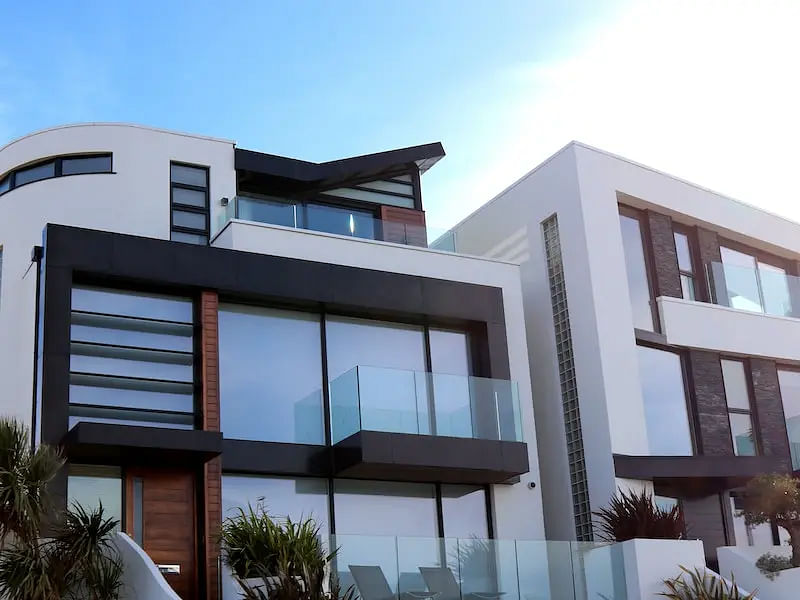
The top architecture dissertation topics for 2024 include marine park design, multimedia film city, modern art museum, architecture in restaurants, architecture in shopping malls, urban transport, peripheral park designs, etc.
Architecture is a subject that needs creative thinking. Working on a dissertation in architecture will help in a comprehensive knowledge of the subject. A high-quality dissertation also adds points to the academic result of a student. There are a wide range of topics to choose from.
Top Architecture Dissertation Topics in 2024
When writing a dissertation, the most crucial point is the selection of the right topic. There are plenty of options available. However, choosing the right topic adds value to the end result. It must be noted here that the selection must be done based on a topic of interest. There are various categories to choose from. Mentioned below are the categories and the topics under those.
- Landscape Architecture Dissertation Topics
- Sustainable Architecture Dissertation Topics
- Risk Management Architecture Dissertation Topics
- New Age Architecture Dissertation Topics
- Naval Architecture Dissertation Topics
- Ecological Architecture Dissertation Topics
1. Landscape Architecture Dissertation Topics
The architecture dissertation topics under this category have been provided below for the concerned students:
- The importance of dedicated green areas or zones in a city
- Eco-friendly architectural design
- Green building
- The impact of landscape architecture on modern life’
- Making roof gardens
- The relationship between landscape architecture and ecosystem
- Aim of landscape engineering
- Creating natural swimming pools
- Creating a modern city with rain water storage and usage
- Reusing river park
- Building green highways
- Importance of building parks in the society
Also Check: Top 100+ Research Paper Topics
2. Sustainable Architecture Dissertation Topics
The dissertation topics pertaining to sustainable architecture have been provided below. Students interested in writing their dissertation paper in this category can have a look at the options given below for the selection of architecture dissertation topics:
- Sustainable architectural plan for the neighbourhood
- Architectural differences pertaining to modernity and tradition
- Creating an architectural design suitable for the elderly or the ageing people
- The importance of regenerative design
- The importance and need of urban farming
- The rebuilding of communities after a disaster
- The concept of responsive architecture
- The relationship between architecture and mathematics through parametric design
- Impact of architecture on the physical and mental well-being of man
- The concept of biophilic design
- Architecture behind the creation of smart cities
- Using the old and dilapidated architectures to create new architectural designs
- The concept of public space design
- Conservation of heritage properties
- Architectural designs to support sustainable transport
Also Check: NIRF Architecture Ranking 2024
3. Risk Management Architecture Dissertation Topics
Students seeking to write their architecture dissertation paper on risk management, can take ideas from the topics given below.
- Management of risk by the architects relevant to the construction of modern and urban buildings
- Analysing the limits of technology in architectural designs
- Reviewing and analysing the open-home design concept in architecture
- Analysing the benefits of buildings with high strength over low cost buildings
- Optimization of safety within the architectural designs of buildings
- Construction of buildings in areas prone to earthquakes
- Planning a city based on the principles of water conservation
Also Check: Thesis Vs. Dissertation: Meaning, Differences and Similarities
4. New Age Architecture Dissertation Topics
Students who are looking forward to working on some interesting architecture dissertation topics can find some of the best topics below:
- The maximisation and utility of small spaces
- Usage of technical models in the architectural designs
- The difference in construction and design of houses in the cold and tropical climates
- The importance of designing a house that fosters mental and physical well being of the members
- The value of the middle class architecture in today’s world
- Analysis of the important architects around the world
- Discovering new architectural designs for nuclear families
- The building of a community centre
- Architectural ideas for places prone of earthquakes
- Architectural designs of places prone to tsunamis
Also Check: Architecture Courses after 12th
5. Naval Architecture Dissertation Topics
The most interesting naval architectural dissertation topics have been shared below for the students:
- Creating the model ship for future
- The rules for controlling damage in naval architecture
- Modernization of the naval architecture
- Designing a Yacht
- Layout and design of the first ship
- Difference in the architectural designs of old and modern day ships
- The design and architecture of a military ship
- The design and architecture of a submarine
- Designing of a small ship
- Differences in architecture between a passenger ship and cargo ship
- Architecture behind a boat without nails
- The differences in the ship building patterns of different countries
- The difference in the designs of a boat and a yacht
- The architecture of a tanker
- Naval architecture of the old times
Also Check: PhD in Architecture
6. Ecological Architecture Dissertation Topics
The ecological architecture dissertation topics are being increasingly taken up by the students. Mentioned below is a complete list of such topics:
- How to make architecture eco-friendly?
- Incorporation of ecological resources in the construction of buildings
- Materials used in architecture: effect on the environment
- Creating eco-house
- The impact of modern and urban architecture on ecology
- Constructing shopping malls with ecological design and materials
- Building wood houses and its effect on the ecosystem
- The effect of modern architectural designs on animals
- Incorporating more greens in the construction of offices and buildings
- The effect on skyscrapers on bird-life
While it is important to go forward with the architectural designs and styles, it is also crucial to measure the pros and cons of the same on sustainability. The students pursuing a course in architecture, such as B.Arch or M.Arch or an MTech or BTech in Architecture Engineering , must go through the above-mentioned architecture dissertation topics for writing their papers.
POST YOUR COMMENT
Related articles.

Top 10 Architecture Colleges in Karnataka Accepting COMEDK UGET 2024
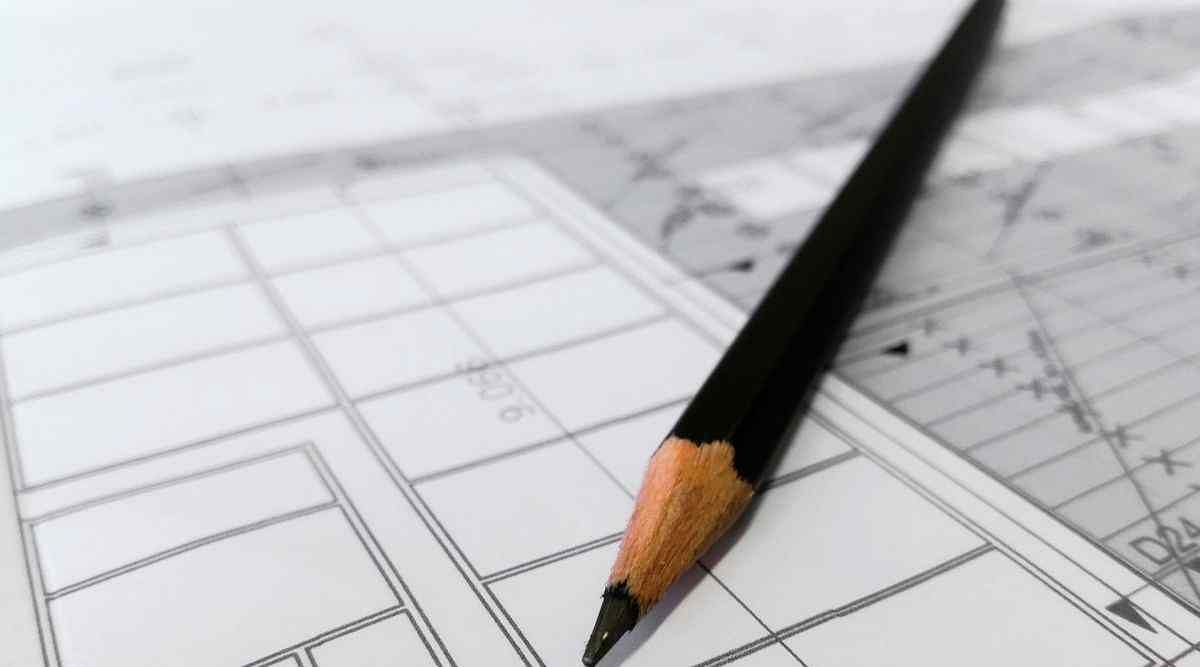
Architecture Courses after 12th: Top Colleges, Eligibility, Job Scope

JEE Main Paper 2 Syllabus 2024: Mathematics, Aptitude Test
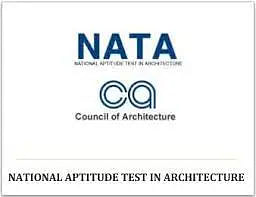
NATA Drawing Questions 2024: Sample Papers PDF, Syllabus, Tips
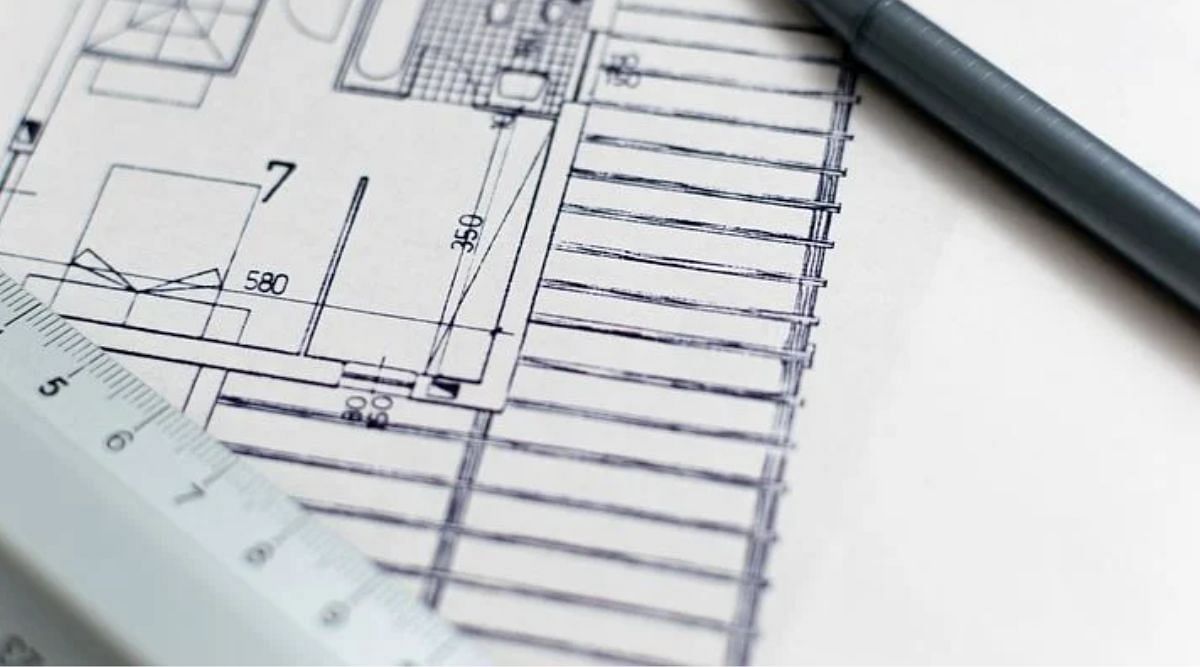
NATA Cut Off for JJ College of Architecture 2024: Admission Procedure
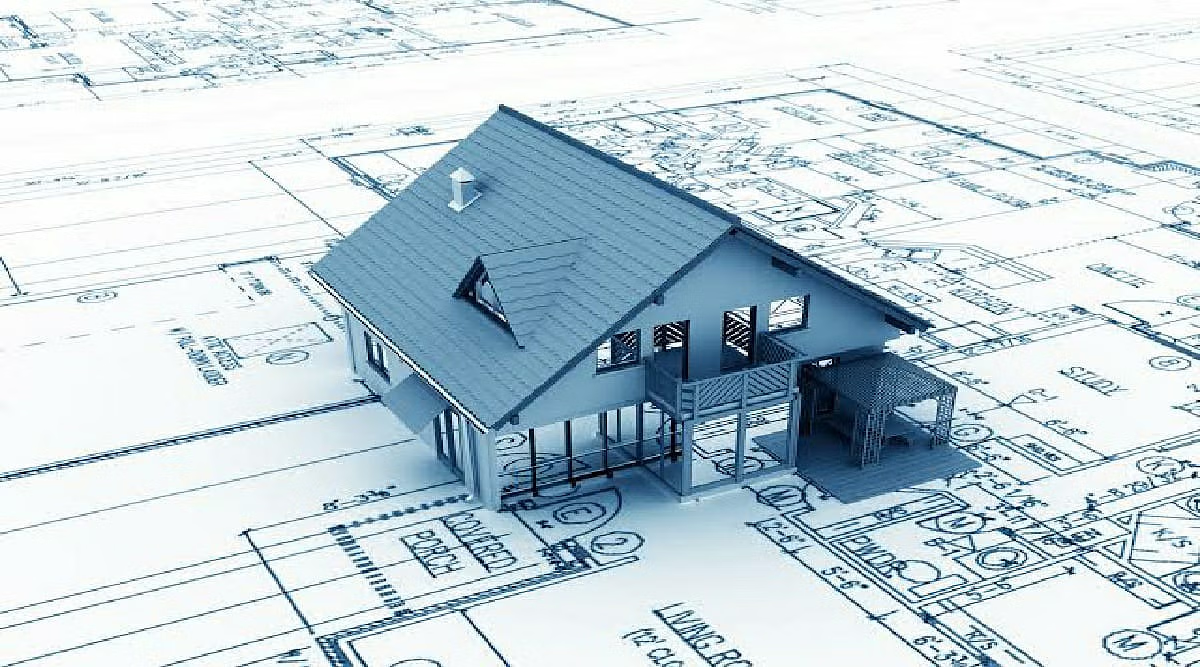
Government Jobs for Architects in India for 2024

How to Calculate NATA Merit Rank 20234?
Get Free Scholarship worth 25000 INR

IMAGES
VIDEO
COMMENTS
Here are 20 Thesis topics for architecture related to Sustainable Architecture: 1. Urban Park | Thesis Topics for Architecture. To make a city livable and sustainable, urban parks play a key role to provide a healthy lifestyle for the residents of the city.
Architecture Thesis Topic #9 - Sustainable Skyscrapers. There is even a master program called "Sustainable ...
M Sc i n SU S TAI NAB LE ARCH I TE C T U R E. Master Thesis 2020. Master’s Theses Catalog Sustainable Architecture June 2020 Print: NTNU Grafisk senter Graphic Design ...
Sustainable Architecture Thesis Topics. Sustainable architecture is the use of various plans and techniques to withstand the negative effect on the environment of modern man-made structures. Architects would take all aspects of the project, from landscape to water drainage, and determine the best way for the building to function with the least ...
Buildings account for nearly 2/5ths of global energy expenditure. Due to this figure, the 90s witnessed the rise of green buildings (GBs) that were designed with the purpose of lowering the demand for energy, water, and materials resources while enhancing environmental protection efforts and human well-being over time. This paper examines recent studies and technologies related to the design ...
Green Design : from theory to practice / by Ken Yeang; Arthur Spector. Call Number: TH880 .G78 2011 Arts Library. The Greening of Architecture : a critical history and survey of contemporary sustainable architecture and urban design by Phillip James Tabb; A. Senem Deviren. Call Number: NA2542.36 .T333 2013 Arts Library.
Here we outline a comprehensive approach to writing an architecture dissertation, inspired by a range of intriguing topics that cater to the evolving landscape of modern architecture. From exploring the nuances of sustainable design to understanding the complexities of urban development, we will guide you through each step of this scholarly ...
Sustainable Architecture Design: Environmental and Economic Benefits Architecture is the combination of art and design for the construction of a building project (Hersey, 2008). The aesthetics and design should work together to create ... thesis will specifically focus on the design aspect of architecture, attempting to supply further ...
Thesis (S.M.)--Massachusetts Institute of Technology, Dept. of Architecture, 2001. Includes bibliographical references (p. 189-197). ... The aim of sustainable architecture is to construct a well-designed building and site environment that is healthy for the occupants, has minimal undesirable impact upon the environment, is effective in the use ...
1 Eco-Friendly Architecture Dissertation Topics. 2 Architecture Dissertation Topics in Risk Management. 3 Landscape Architecture Dissertation Topics. 4 Architecture Dissertation Topics for Urban Planning and Transport. 5 Interesting Architecture Dissertation Topics. 6 Research Topics in Modern Design.
With so many factors to consider and deadlines closing in, students easily end up making decisions that they regret later. Here are eight tips to help you make an informed choice on the matter: 1 ...
11. Waste Management Centre (Industrial Architecture) Waste management is an urgent concern in the modern world. An architecture dissertation topic of this nature would need to explore aspects such as recycling waste as construction material.
Green Buildings and Indoor Air Quality. The idea of "green buildings" has in many ways helped enhance indoor air quality."Green buildings" are made possible by designing and constructing buildings which have high quality of indoor air as one of their major […] The Use of Green Materials for Sustainable Buildings.
80 sustainability research topics for students to explore green campus issues. You're planning your thesis, paper or capstone? You want to do a student research project with impact. We have outlined a range of sustainability research topics for you. The list specifically focuses on how to green your campus. Take action to make your university ...
Dissertation Topics Ideas on Sustainability and Green Technology on Global Impact. Topic 1: Research on sustainable gardens. Topic 2: Sustainable outdoor designs using recycled materials. Topic 3: Pollution-free disposal and recycling of trash. Topic 4: Importance of gardening- awareness and ideas for the city, terrace/roof gardening.
100 Best Architecture Thesis Topics. One of the most important components of a great writing project like a thesis or dissertation is a great topic. Teachers often provide full lists of research ideas for students to choose from, but they also encourage students to develop original topics based on their interests.
This guide presents resources related to the themes of the 17 SDGs. Latin American and Caribbean Studies - Environment & Sustainability. This guide provides selected resources on the topics of the environment and sustainability as they relate to these regions. Each resource category provides sources on a regional and country basis. Earth Day 2023.
site and context thesis. surat. green building research and awareness centre. 201503101710042, narendra suthar @rbsa, utu-bardoli. 15. site and context thesis green building research and awareness ...
1. Low-cost housing | Architecture Thesis. As more and more people are moving to dense urban cities like New York, in search of a better quality of living and opportunities, the city population is on the rise. As is the cost of living, making low-cost housing a dire need of societies, as low-income residents have limited choices for affordable ...
Manali Ganguly, Mar 4, 2024. Share it on: The architecture dissertation topics that are most relevant in 2024 are urban transport, architecture of shopping malls and restaurants, constructing of modern museums, constructing green buildings, designing ecological workspaces, and many more. The top architecture dissertation topics for 2024 include ...
Sustainable Architecture; Thesis; Thesis Topic; Our Online Tools Menu Toggle. Circle Calculator; Percentage Calculator; Mortgage Calculator; Unit Converter; Home; architectural thesis projects; 999+ B.Arch Thesis Topics List (Updated) 2 Comments / By Admin / 13/06/2019 05/07/2022. Spread the love